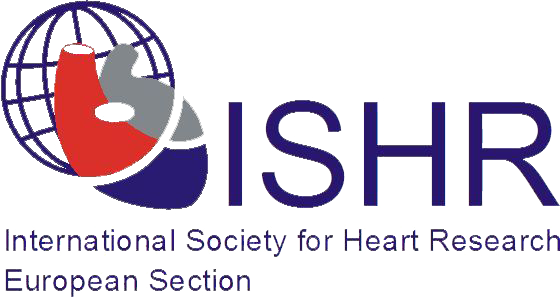

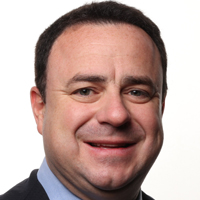 Antonio Abbate, MD received his degree in Medicine from University Campus Bio-Medico of Rome, Italy and completed Clinical Fellowship in Adult Cardiovascular Medicine and a Research Doctorate in Cellular and Molecular Cardiology at the Catholic University of Rome, Italy. He then completed an additional Internal Medicine Residency program at VCU-MCV Hospitals in Virginia.
Antonio Abbate, MD received his degree in Medicine from University Campus Bio-Medico of Rome, Italy and completed Clinical Fellowship in Adult Cardiovascular Medicine and a Research Doctorate in Cellular and Molecular Cardiology at the Catholic University of Rome, Italy. He then completed an additional Internal Medicine Residency program at VCU-MCV Hospitals in Virginia.
Dr. Abbate now serves as Vice-Chair for the Division of Cardiology, Associate Chair for Research for the Department of Internal Medicine, Associate Director of the Wright Center for Clinical and Translational Research, and Medical Director of the Clinical Research Unit.
Dr. Abbate leads a multidisciplinary team in the VCU Pauley Heart Center and the Johnson Research Laboratories, examining the role of inflammation in heart disease. Dr. Abbate is also principal investigator on pilot clinical studies funded by the National Institute of Health, the American Heart Association, or Industry, aimed at identifying novel anti-inflammatory therapies for patients with acute myocardial infarction or heart failure.
Dr. Abbate has authored or co-authored over 300 articles, reviews and editorials that have been published in professional journals. In addition, he has participated in more than 350 oral and poster presentations to national and international meetings.
 Antonio Abbate, MD received his degree in Medicine from University Campus Bio-Medico of Rome, Italy and completed Clinical Fellowship in Adult Cardiovascular Medicine and a Research Doctorate in Cellular and Molecular Cardiology at the Catholic University of Rome, Italy. He then completed an additional Internal Medicine Residency program at VCU-MCV Hospitals in Virginia.
Antonio Abbate, MD received his degree in Medicine from University Campus Bio-Medico of Rome, Italy and completed Clinical Fellowship in Adult Cardiovascular Medicine and a Research Doctorate in Cellular and Molecular Cardiology at the Catholic University of Rome, Italy. He then completed an additional Internal Medicine Residency program at VCU-MCV Hospitals in Virginia.
Dr. Abbate now serves as Vice-Chair for the Division of Cardiology, Associate Chair for Research for the Department of Internal Medicine, Associate Director of the Wright Center for Clinical and Translational Research, and Medical Director of the Clinical Research Unit.
Dr. Abbate leads a multidisciplinary team in the VCU Pauley Heart Center and the Johnson Research Laboratories, examining the role of inflammation in heart disease. Dr. Abbate is also principal investigator on pilot clinical studies funded by the National Institute of Health, the American Heart Association, or Industry, aimed at identifying novel anti-inflammatory therapies for patients with acute myocardial infarction or heart failure.
Dr. Abbate has authored or co-authored over 300 articles, reviews and editorials that have been published in professional journals. In addition, he has participated in more than 350 oral and poster presentations to national and international meetings.
 I received my MS+BS in Pharmaceutical Chemistry with a dissertation on glucose transport in cardiac ischemia at the Alma Mater Studiorum (University of Bologna, Italy) in October 2000. The following month, I entered a PhD program in Biochemistry and Pathophysiology of Aging at the same University. My PhD project was aimed at clarifying the mechanisms underlying heart failure (HF) development. During my PhD, I was awarded two European scholarships to train under Dr. Jos Lamers at the Erasmus MC (Rotterdam, NL). At that time, I had my first encounter with the notion of post-translational modification and became interested in desmin because of its marked induction in an in vitro model of cardiac hypertrophy. After obtaining my PhD in 2005, I was awarded a third scholarship to spend six months as a Visiting Scientist at the Hopkins NHLBI Cardiovascular Proteomic Center, directed by Dr. Jennifer Van Eyk, within Johns Hopkins Cardiology. This short period stretched into a full-blown postdoc at the Center and provided me with the opportunity to observe the induction of modified desmin forms in several experimental models of HF and clinical specimens from HF patients. In 2011, I became a faculty member at Johns Hopkins Cardiology – where I now direct the Center for Research on Cardiac Intermediate Filaments (CRCIF). The Center was established in 2015 to foster research aimed at understanding the role of desmin and other IFs in cardiac disease. Our current research focuses on the pathophysiological role of desmin modifications and misfolding in cardiac disease.
I received my MS+BS in Pharmaceutical Chemistry with a dissertation on glucose transport in cardiac ischemia at the Alma Mater Studiorum (University of Bologna, Italy) in October 2000. The following month, I entered a PhD program in Biochemistry and Pathophysiology of Aging at the same University. My PhD project was aimed at clarifying the mechanisms underlying heart failure (HF) development. During my PhD, I was awarded two European scholarships to train under Dr. Jos Lamers at the Erasmus MC (Rotterdam, NL). At that time, I had my first encounter with the notion of post-translational modification and became interested in desmin because of its marked induction in an in vitro model of cardiac hypertrophy. After obtaining my PhD in 2005, I was awarded a third scholarship to spend six months as a Visiting Scientist at the Hopkins NHLBI Cardiovascular Proteomic Center, directed by Dr. Jennifer Van Eyk, within Johns Hopkins Cardiology. This short period stretched into a full-blown postdoc at the Center and provided me with the opportunity to observe the induction of modified desmin forms in several experimental models of HF and clinical specimens from HF patients. In 2011, I became a faculty member at Johns Hopkins Cardiology – where I now direct the Center for Research on Cardiac Intermediate Filaments (CRCIF). The Center was established in 2015 to foster research aimed at understanding the role of desmin and other IFs in cardiac disease. Our current research focuses on the pathophysiological role of desmin modifications and misfolding in cardiac disease.
 I received my MS+BS in Pharmaceutical Chemistry with a dissertation on glucose transport in cardiac ischemia at the Alma Mater Studiorum (University of Bologna, Italy) in October 2000. The following month, I entered a PhD program in Biochemistry and Pathophysiology of Aging at the same University. My PhD project was aimed at clarifying the mechanisms underlying heart failure (HF) development. During my PhD, I was awarded two European scholarships to train under Dr. Jos Lamers at the Erasmus MC (Rotterdam, NL). At that time, I had my first encounter with the notion of post-translational modification and became interested in desmin because of its marked induction in an in vitro model of cardiac hypertrophy. After obtaining my PhD in 2005, I was awarded a third scholarship to spend six months as a Visiting Scientist at the Hopkins NHLBI Cardiovascular Proteomic Center, directed by Dr. Jennifer Van Eyk, within Johns Hopkins Cardiology. This short period stretched into a full-blown postdoc at the Center and provided me with the opportunity to observe the induction of modified desmin forms in several experimental models of HF and clinical specimens from HF patients. In 2011, I became a faculty member at Johns Hopkins Cardiology – where I now direct the Center for Research on Cardiac Intermediate Filaments (CRCIF). The Center was established in 2015 to foster research aimed at understanding the role of desmin and other IFs in cardiac disease. Our current research focuses on the pathophysiological role of desmin modifications and misfolding in cardiac disease.
I received my MS+BS in Pharmaceutical Chemistry with a dissertation on glucose transport in cardiac ischemia at the Alma Mater Studiorum (University of Bologna, Italy) in October 2000. The following month, I entered a PhD program in Biochemistry and Pathophysiology of Aging at the same University. My PhD project was aimed at clarifying the mechanisms underlying heart failure (HF) development. During my PhD, I was awarded two European scholarships to train under Dr. Jos Lamers at the Erasmus MC (Rotterdam, NL). At that time, I had my first encounter with the notion of post-translational modification and became interested in desmin because of its marked induction in an in vitro model of cardiac hypertrophy. After obtaining my PhD in 2005, I was awarded a third scholarship to spend six months as a Visiting Scientist at the Hopkins NHLBI Cardiovascular Proteomic Center, directed by Dr. Jennifer Van Eyk, within Johns Hopkins Cardiology. This short period stretched into a full-blown postdoc at the Center and provided me with the opportunity to observe the induction of modified desmin forms in several experimental models of HF and clinical specimens from HF patients. In 2011, I became a faculty member at Johns Hopkins Cardiology – where I now direct the Center for Research on Cardiac Intermediate Filaments (CRCIF). The Center was established in 2015 to foster research aimed at understanding the role of desmin and other IFs in cardiac disease. Our current research focuses on the pathophysiological role of desmin modifications and misfolding in cardiac disease.
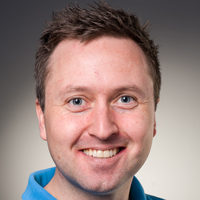 Kjetil Wessel Andressen received his PhD in 2008 at the Department of Pharmacology, University of Oslo in the group of Finn Olav Levy. He is now an Associate Professor at the Department of Pharmacology, leading his own sub-group in Finn Olav Levy’s lab. Andressen is a former Chair of Pharmacology in the Norwegian Society of Pharmacology and Toxicology. He has studied G protein coupled receptors and Natriuretic Peptide receptors and the effect of compartmentation of cGMP and cAMP in regulating heart contractility. In recent years, his focus has been to develop novel FRET-based biosensors with high affinity for cGMP. Through targeting these biosensors to discrete nanodomains in cardiac myocytes, his aim is to characterize the receptors, phosphodiesterases and other factors regulating local cGMP signaling that is involved in passive and active tension of cardiac myocytes.
Kjetil Wessel Andressen received his PhD in 2008 at the Department of Pharmacology, University of Oslo in the group of Finn Olav Levy. He is now an Associate Professor at the Department of Pharmacology, leading his own sub-group in Finn Olav Levy’s lab. Andressen is a former Chair of Pharmacology in the Norwegian Society of Pharmacology and Toxicology. He has studied G protein coupled receptors and Natriuretic Peptide receptors and the effect of compartmentation of cGMP and cAMP in regulating heart contractility. In recent years, his focus has been to develop novel FRET-based biosensors with high affinity for cGMP. Through targeting these biosensors to discrete nanodomains in cardiac myocytes, his aim is to characterize the receptors, phosphodiesterases and other factors regulating local cGMP signaling that is involved in passive and active tension of cardiac myocytes.
 Kjetil Wessel Andressen received his PhD in 2008 at the Department of Pharmacology, University of Oslo in the group of Finn Olav Levy. He is now an Associate Professor at the Department of Pharmacology, leading his own sub-group in Finn Olav Levy’s lab. Andressen is a former Chair of Pharmacology in the Norwegian Society of Pharmacology and Toxicology. He has studied G protein coupled receptors and Natriuretic Peptide receptors and the effect of compartmentation of cGMP and cAMP in regulating heart contractility. In recent years, his focus has been to develop novel FRET-based biosensors with high affinity for cGMP. Through targeting these biosensors to discrete nanodomains in cardiac myocytes, his aim is to characterize the receptors, phosphodiesterases and other factors regulating local cGMP signaling that is involved in passive and active tension of cardiac myocytes.
Kjetil Wessel Andressen received his PhD in 2008 at the Department of Pharmacology, University of Oslo in the group of Finn Olav Levy. He is now an Associate Professor at the Department of Pharmacology, leading his own sub-group in Finn Olav Levy’s lab. Andressen is a former Chair of Pharmacology in the Norwegian Society of Pharmacology and Toxicology. He has studied G protein coupled receptors and Natriuretic Peptide receptors and the effect of compartmentation of cGMP and cAMP in regulating heart contractility. In recent years, his focus has been to develop novel FRET-based biosensors with high affinity for cGMP. Through targeting these biosensors to discrete nanodomains in cardiac myocytes, his aim is to characterize the receptors, phosphodiesterases and other factors regulating local cGMP signaling that is involved in passive and active tension of cardiac myocytes.
 Dr. Hossein Ardehali received M.D. and Ph.D. degrees from Vanderbilt University. He completed his medicine residency and cardiology fellowship training at the Johns Hopkins Hospital. He is currently Thomas D. Spies Professor of Cardiac metabolism, Professor of Medicine - Cardiology, and Pharmacology at Northwestern University, and is the Director of the Medical Scientist Training Program (MSTP or MD/PhD program) and the Center for Molecular Cardiology. He is the vice-president of the American Society for Clinical Investigation (ASCI), and will serve as the president of the society in 2021-22 academic year. He also serves on numerous American Heart Association (AHA) committees, including the AHA Council Operations Committee. He was inducted into the Association of American Physicians (AAP) in 2018. He has received a number of awards, including the AHA BCVS Young Investigator Award, the Jeremiah Stamler Distinguished Young Investigator Award, and the Schweppe Foundation Award. His research focuses on the role of mitochondria and metabolism in cardiovascular disease, with a focus on the role of mitochondrial iron in this process. His lab has shown that a disruption in the mitochondrial iron homeostasis leads to cardiomyopathy and that reducing mitochondrial iron can protect against doxorubicin-induced cardiomyopathy. He has also identified a novel “iron conservation” pathway that is activated to protect mammalian cells against injury from iron deficiency. Finally, his lab has also shown that hexokinase II binding to the mitochondria is critical for determination of cellular metabolism, and that an AMPK-related protein called SNRK improves mitochondrial efficiency through enhanced coupling.
Dr. Hossein Ardehali received M.D. and Ph.D. degrees from Vanderbilt University. He completed his medicine residency and cardiology fellowship training at the Johns Hopkins Hospital. He is currently Thomas D. Spies Professor of Cardiac metabolism, Professor of Medicine - Cardiology, and Pharmacology at Northwestern University, and is the Director of the Medical Scientist Training Program (MSTP or MD/PhD program) and the Center for Molecular Cardiology. He is the vice-president of the American Society for Clinical Investigation (ASCI), and will serve as the president of the society in 2021-22 academic year. He also serves on numerous American Heart Association (AHA) committees, including the AHA Council Operations Committee. He was inducted into the Association of American Physicians (AAP) in 2018. He has received a number of awards, including the AHA BCVS Young Investigator Award, the Jeremiah Stamler Distinguished Young Investigator Award, and the Schweppe Foundation Award. His research focuses on the role of mitochondria and metabolism in cardiovascular disease, with a focus on the role of mitochondrial iron in this process. His lab has shown that a disruption in the mitochondrial iron homeostasis leads to cardiomyopathy and that reducing mitochondrial iron can protect against doxorubicin-induced cardiomyopathy. He has also identified a novel “iron conservation” pathway that is activated to protect mammalian cells against injury from iron deficiency. Finally, his lab has also shown that hexokinase II binding to the mitochondria is critical for determination of cellular metabolism, and that an AMPK-related protein called SNRK improves mitochondrial efficiency through enhanced coupling.
 Dr. Hossein Ardehali received M.D. and Ph.D. degrees from Vanderbilt University. He completed his medicine residency and cardiology fellowship training at the Johns Hopkins Hospital. He is currently Thomas D. Spies Professor of Cardiac metabolism, Professor of Medicine - Cardiology, and Pharmacology at Northwestern University, and is the Director of the Medical Scientist Training Program (MSTP or MD/PhD program) and the Center for Molecular Cardiology. He is the vice-president of the American Society for Clinical Investigation (ASCI), and will serve as the president of the society in 2021-22 academic year. He also serves on numerous American Heart Association (AHA) committees, including the AHA Council Operations Committee. He was inducted into the Association of American Physicians (AAP) in 2018. He has received a number of awards, including the AHA BCVS Young Investigator Award, the Jeremiah Stamler Distinguished Young Investigator Award, and the Schweppe Foundation Award. His research focuses on the role of mitochondria and metabolism in cardiovascular disease, with a focus on the role of mitochondrial iron in this process. His lab has shown that a disruption in the mitochondrial iron homeostasis leads to cardiomyopathy and that reducing mitochondrial iron can protect against doxorubicin-induced cardiomyopathy. He has also identified a novel “iron conservation” pathway that is activated to protect mammalian cells against injury from iron deficiency. Finally, his lab has also shown that hexokinase II binding to the mitochondria is critical for determination of cellular metabolism, and that an AMPK-related protein called SNRK improves mitochondrial efficiency through enhanced coupling.
Dr. Hossein Ardehali received M.D. and Ph.D. degrees from Vanderbilt University. He completed his medicine residency and cardiology fellowship training at the Johns Hopkins Hospital. He is currently Thomas D. Spies Professor of Cardiac metabolism, Professor of Medicine - Cardiology, and Pharmacology at Northwestern University, and is the Director of the Medical Scientist Training Program (MSTP or MD/PhD program) and the Center for Molecular Cardiology. He is the vice-president of the American Society for Clinical Investigation (ASCI), and will serve as the president of the society in 2021-22 academic year. He also serves on numerous American Heart Association (AHA) committees, including the AHA Council Operations Committee. He was inducted into the Association of American Physicians (AAP) in 2018. He has received a number of awards, including the AHA BCVS Young Investigator Award, the Jeremiah Stamler Distinguished Young Investigator Award, and the Schweppe Foundation Award. His research focuses on the role of mitochondria and metabolism in cardiovascular disease, with a focus on the role of mitochondrial iron in this process. His lab has shown that a disruption in the mitochondrial iron homeostasis leads to cardiomyopathy and that reducing mitochondrial iron can protect against doxorubicin-induced cardiomyopathy. He has also identified a novel “iron conservation” pathway that is activated to protect mammalian cells against injury from iron deficiency. Finally, his lab has also shown that hexokinase II binding to the mitochondria is critical for determination of cellular metabolism, and that an AMPK-related protein called SNRK improves mitochondrial efficiency through enhanced coupling.
 Associate Professor Magnus Aronsen is head of the Laboratory for Experimental Cardiology at the University of Oslo and Oslo University Hospital. The group aims to develop targeted therapies for ventricular arrhythmias and heart failure by identifying and targeting upstream events in disease mechanisms. The group has focused on AKAP-PDE-signalosomes that regulates cardiac ion transporters, and has identified several novel protein-protein-interactions that are currently being explored as potential drug targets in translational and clinical settings. Dr. Aronsen holds in addition positions as Board member of the Norwegian Research Council, is part of the EOSC committee for FAIR and has recently been the Chair of the Young Academy of Norway.
Associate Professor Magnus Aronsen is head of the Laboratory for Experimental Cardiology at the University of Oslo and Oslo University Hospital. The group aims to develop targeted therapies for ventricular arrhythmias and heart failure by identifying and targeting upstream events in disease mechanisms. The group has focused on AKAP-PDE-signalosomes that regulates cardiac ion transporters, and has identified several novel protein-protein-interactions that are currently being explored as potential drug targets in translational and clinical settings. Dr. Aronsen holds in addition positions as Board member of the Norwegian Research Council, is part of the EOSC committee for FAIR and has recently been the Chair of the Young Academy of Norway.
 Associate Professor Magnus Aronsen is head of the Laboratory for Experimental Cardiology at the University of Oslo and Oslo University Hospital. The group aims to develop targeted therapies for ventricular arrhythmias and heart failure by identifying and targeting upstream events in disease mechanisms. The group has focused on AKAP-PDE-signalosomes that regulates cardiac ion transporters, and has identified several novel protein-protein-interactions that are currently being explored as potential drug targets in translational and clinical settings. Dr. Aronsen holds in addition positions as Board member of the Norwegian Research Council, is part of the EOSC committee for FAIR and has recently been the Chair of the Young Academy of Norway.
Associate Professor Magnus Aronsen is head of the Laboratory for Experimental Cardiology at the University of Oslo and Oslo University Hospital. The group aims to develop targeted therapies for ventricular arrhythmias and heart failure by identifying and targeting upstream events in disease mechanisms. The group has focused on AKAP-PDE-signalosomes that regulates cardiac ion transporters, and has identified several novel protein-protein-interactions that are currently being explored as potential drug targets in translational and clinical settings. Dr. Aronsen holds in addition positions as Board member of the Norwegian Research Council, is part of the EOSC committee for FAIR and has recently been the Chair of the Young Academy of Norway.
 Johannes received his MD degree from Heidelberg University in 2002 and was trained as a clinician from 1998-2003 in the Center of Internal Medicine at Heidelberg University Hospital. He was then trained as a postdoctoral fellow in the Department of Molecular Biology of UT Southwestern in Dallas from 2003-2007 (with Eric N. Olson). After leading an Emmy Noether Junior Research Group in Heidelberg from 2007-2013, Johannes was in 2013 appointed as a W3-Professor of the German Centre for Cardiovascular Research (DZHK) and in 2015 promoted to the Director of the Department of Molecular Cardiology & Epigenetics at Heidelberg University Hospital. In 2018, he became the inaugural Executive Director of the newly established Institute of Experimental Cardiology at Heidelberg University Hospital. Johannes’ group made discoveries in the fields of cardiac gene regulation and metabolism. For instance, his work has collectively demonstrated that lipid droplet-associated enzymes regulate histone deacetylases controlling the level of glucose metabolites, subsequently calcium handling and eventually cardiac function. Based on these findings, translational projects on gene therapy and small molecules are ongoing. Johannes was recently elected as the spokesperson of the German Centre for Cardiovascular Research (DZHK) partner site Heidelberg/Mannheim, and he serves as the spokesperson of the Translational Research Committee of the Heart Failure Association (HFA) of the European Society of Cardiology (ESC), as an HFA board member and as an at-large council member of the International Society of Heart Research (ISHR). He is JMCC associate editor since 2017.
Johannes received his MD degree from Heidelberg University in 2002 and was trained as a clinician from 1998-2003 in the Center of Internal Medicine at Heidelberg University Hospital. He was then trained as a postdoctoral fellow in the Department of Molecular Biology of UT Southwestern in Dallas from 2003-2007 (with Eric N. Olson). After leading an Emmy Noether Junior Research Group in Heidelberg from 2007-2013, Johannes was in 2013 appointed as a W3-Professor of the German Centre for Cardiovascular Research (DZHK) and in 2015 promoted to the Director of the Department of Molecular Cardiology & Epigenetics at Heidelberg University Hospital. In 2018, he became the inaugural Executive Director of the newly established Institute of Experimental Cardiology at Heidelberg University Hospital. Johannes’ group made discoveries in the fields of cardiac gene regulation and metabolism. For instance, his work has collectively demonstrated that lipid droplet-associated enzymes regulate histone deacetylases controlling the level of glucose metabolites, subsequently calcium handling and eventually cardiac function. Based on these findings, translational projects on gene therapy and small molecules are ongoing. Johannes was recently elected as the spokesperson of the German Centre for Cardiovascular Research (DZHK) partner site Heidelberg/Mannheim, and he serves as the spokesperson of the Translational Research Committee of the Heart Failure Association (HFA) of the European Society of Cardiology (ESC), as an HFA board member and as an at-large council member of the International Society of Heart Research (ISHR). He is JMCC associate editor since 2017.
 Johannes received his MD degree from Heidelberg University in 2002 and was trained as a clinician from 1998-2003 in the Center of Internal Medicine at Heidelberg University Hospital. He was then trained as a postdoctoral fellow in the Department of Molecular Biology of UT Southwestern in Dallas from 2003-2007 (with Eric N. Olson). After leading an Emmy Noether Junior Research Group in Heidelberg from 2007-2013, Johannes was in 2013 appointed as a W3-Professor of the German Centre for Cardiovascular Research (DZHK) and in 2015 promoted to the Director of the Department of Molecular Cardiology & Epigenetics at Heidelberg University Hospital. In 2018, he became the inaugural Executive Director of the newly established Institute of Experimental Cardiology at Heidelberg University Hospital. Johannes’ group made discoveries in the fields of cardiac gene regulation and metabolism. For instance, his work has collectively demonstrated that lipid droplet-associated enzymes regulate histone deacetylases controlling the level of glucose metabolites, subsequently calcium handling and eventually cardiac function. Based on these findings, translational projects on gene therapy and small molecules are ongoing. Johannes was recently elected as the spokesperson of the German Centre for Cardiovascular Research (DZHK) partner site Heidelberg/Mannheim, and he serves as the spokesperson of the Translational Research Committee of the Heart Failure Association (HFA) of the European Society of Cardiology (ESC), as an HFA board member and as an at-large council member of the International Society of Heart Research (ISHR). He is JMCC associate editor since 2017.
Johannes received his MD degree from Heidelberg University in 2002 and was trained as a clinician from 1998-2003 in the Center of Internal Medicine at Heidelberg University Hospital. He was then trained as a postdoctoral fellow in the Department of Molecular Biology of UT Southwestern in Dallas from 2003-2007 (with Eric N. Olson). After leading an Emmy Noether Junior Research Group in Heidelberg from 2007-2013, Johannes was in 2013 appointed as a W3-Professor of the German Centre for Cardiovascular Research (DZHK) and in 2015 promoted to the Director of the Department of Molecular Cardiology & Epigenetics at Heidelberg University Hospital. In 2018, he became the inaugural Executive Director of the newly established Institute of Experimental Cardiology at Heidelberg University Hospital. Johannes’ group made discoveries in the fields of cardiac gene regulation and metabolism. For instance, his work has collectively demonstrated that lipid droplet-associated enzymes regulate histone deacetylases controlling the level of glucose metabolites, subsequently calcium handling and eventually cardiac function. Based on these findings, translational projects on gene therapy and small molecules are ongoing. Johannes was recently elected as the spokesperson of the German Centre for Cardiovascular Research (DZHK) partner site Heidelberg/Mannheim, and he serves as the spokesperson of the Translational Research Committee of the Heart Failure Association (HFA) of the European Society of Cardiology (ESC), as an HFA board member and as an at-large council member of the International Society of Heart Research (ISHR). He is JMCC associate editor since 2017.
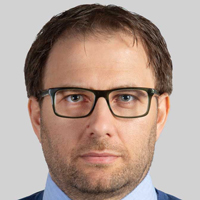 Lucio Barile is group leader at Cardiocentro Ticino Foundation (CCT), Lugano, Switzerland.
He graduated as Doctor of Pharmacy (Pharm.D.) at University of Rome “La Sapienza” in 2003 and since 2008 holds PhD in Experimental Medicine, from the same University. He was part of a research team that developed a method for the isolation of adult human resident progenitor cells (CPC) from endomyocardial biopsy specimens at the Institute of Molecular Cardiobiology, Johns Hopkins University in Baltimore, USA. He has been postdoctoral fellow at ICGEB, Trieste, Italy and Assistant Professor at University of Milano-Bicocca, Milan, Italy.
Lucio Barile is group leader at Cardiocentro Ticino Foundation (CCT), Lugano, Switzerland.
He graduated as Doctor of Pharmacy (Pharm.D.) at University of Rome “La Sapienza” in 2003 and since 2008 holds PhD in Experimental Medicine, from the same University. He was part of a research team that developed a method for the isolation of adult human resident progenitor cells (CPC) from endomyocardial biopsy specimens at the Institute of Molecular Cardiobiology, Johns Hopkins University in Baltimore, USA. He has been postdoctoral fellow at ICGEB, Trieste, Italy and Assistant Professor at University of Milano-Bicocca, Milan, Italy.
He moved to Cardiocentro Ticino Foundation (FCCT) as senior scientist in 2011, where he established a research topic of secreted extracellular vesicles. He is currently Swiss Member (CA16225 CH) of EU-Cardioprotection Cost Action.
In 2019 Lucio Barile has been appointed as University Lecturer at Faculty of Biomedical Sciences at Università della Svizzera Italian, (USI) Lugano, Switzerland.
 Lucio Barile is group leader at Cardiocentro Ticino Foundation (CCT), Lugano, Switzerland.
He graduated as Doctor of Pharmacy (Pharm.D.) at University of Rome “La Sapienza” in 2003 and since 2008 holds PhD in Experimental Medicine, from the same University. He was part of a research team that developed a method for the isolation of adult human resident progenitor cells (CPC) from endomyocardial biopsy specimens at the Institute of Molecular Cardiobiology, Johns Hopkins University in Baltimore, USA. He has been postdoctoral fellow at ICGEB, Trieste, Italy and Assistant Professor at University of Milano-Bicocca, Milan, Italy.
Lucio Barile is group leader at Cardiocentro Ticino Foundation (CCT), Lugano, Switzerland.
He graduated as Doctor of Pharmacy (Pharm.D.) at University of Rome “La Sapienza” in 2003 and since 2008 holds PhD in Experimental Medicine, from the same University. He was part of a research team that developed a method for the isolation of adult human resident progenitor cells (CPC) from endomyocardial biopsy specimens at the Institute of Molecular Cardiobiology, Johns Hopkins University in Baltimore, USA. He has been postdoctoral fellow at ICGEB, Trieste, Italy and Assistant Professor at University of Milano-Bicocca, Milan, Italy.
He moved to Cardiocentro Ticino Foundation (FCCT) as senior scientist in 2011, where he established a research topic of secreted extracellular vesicles. He is currently Swiss Member (CA16225 CH) of EU-Cardioprotection Cost Action.
In 2019 Lucio Barile has been appointed as University Lecturer at Faculty of Biomedical Sciences at Università della Svizzera Italian, (USI) Lugano, Switzerland.
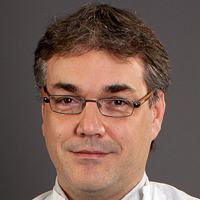 Sandor Batkai is co-founder and Head of Science at Cardior Pharmaceuticals GmbH, in Hannover, Germany. Cardior is a clinical-stage biopharmaceutical company dedicated to the development and clinical validation of noncoding RNA based therapeutics for heart failure patients.
Sandor Batkai is co-founder and Head of Science at Cardior Pharmaceuticals GmbH, in Hannover, Germany. Cardior is a clinical-stage biopharmaceutical company dedicated to the development and clinical validation of noncoding RNA based therapeutics for heart failure patients.
Dr. Batkai is currently leading the preclinical research program at Cardior. He has a medical degree and PhD in cardiovascular physiology. He is an established translational scientist in the cardiovascular disease area and has broad experience in drug discovery and development. He has deep understanding of oligonucleotide pharmacology and non-coding RNA biology. Before joining Cardior, he led the research group "Cardiovascular Phenotyping and Translational Strategies" at the Hannover Medical School in Hannover, Germany, with focus on non-coding RNAs as therapeutic targets in cardiovascular diseases. Formerly, he directed a cardiometabolic core facility at National Institute of Health, Bethesda, USA, exploring therapeutics targeting the endocannabinoid system in obesity, liver and cardiovascular diseases.
 Sandor Batkai is co-founder and Head of Science at Cardior Pharmaceuticals GmbH, in Hannover, Germany. Cardior is a clinical-stage biopharmaceutical company dedicated to the development and clinical validation of noncoding RNA based therapeutics for heart failure patients.
Sandor Batkai is co-founder and Head of Science at Cardior Pharmaceuticals GmbH, in Hannover, Germany. Cardior is a clinical-stage biopharmaceutical company dedicated to the development and clinical validation of noncoding RNA based therapeutics for heart failure patients.
Dr. Batkai is currently leading the preclinical research program at Cardior. He has a medical degree and PhD in cardiovascular physiology. He is an established translational scientist in the cardiovascular disease area and has broad experience in drug discovery and development. He has deep understanding of oligonucleotide pharmacology and non-coding RNA biology. Before joining Cardior, he led the research group "Cardiovascular Phenotyping and Translational Strategies" at the Hannover Medical School in Hannover, Germany, with focus on non-coding RNAs as therapeutic targets in cardiovascular diseases. Formerly, he directed a cardiometabolic core facility at National Institute of Health, Bethesda, USA, exploring therapeutics targeting the endocannabinoid system in obesity, liver and cardiovascular diseases.
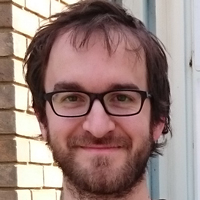 Dr. Alessandro Bertero is an Acting Assistant Professor in the Dept. of Pathology at the University of Washington in Seattle, USA. During his undergraduate studies he trained with the late Prof. Guido Tarone at the University of Turin in Italy, where he investigated the Melusin signalling pathway in cardiac hypertrophy and obtained a BSci (2009) and an MSci (2011). Having being awarded a British Heart Foundation Graduate Fellowship, he joined the University of Cambridge in the UK where he obtained an MRes (2012) and a PhD (2016) by studying the mechanism by which TGF beta signalling controls early differentiation of human pluripotent stem cells in the laboratory of Ludovic Vallier. Dr. Bertero performed his postdoctoral training with Prof. Charles Murry at the University of Washington with the support of an EMBO Long-Term Fellowship (2017). During this time he developed a research program focused on the role of 3D chromatin organization dynamics during human cardiogenesis and in familial dilated cardiomyopathy due to Lamin A/C mutations. Dr. Bertero became a junior faculty member in July 2019. His laboratory aims to: (1) elucidate the gene regulatory mechanisms underpinning cardiac development and disease; and (2) leverage this knowledge to develop gene, cell, and tissue engineering strategies for cardiac therapeutics.
Dr. Alessandro Bertero is an Acting Assistant Professor in the Dept. of Pathology at the University of Washington in Seattle, USA. During his undergraduate studies he trained with the late Prof. Guido Tarone at the University of Turin in Italy, where he investigated the Melusin signalling pathway in cardiac hypertrophy and obtained a BSci (2009) and an MSci (2011). Having being awarded a British Heart Foundation Graduate Fellowship, he joined the University of Cambridge in the UK where he obtained an MRes (2012) and a PhD (2016) by studying the mechanism by which TGF beta signalling controls early differentiation of human pluripotent stem cells in the laboratory of Ludovic Vallier. Dr. Bertero performed his postdoctoral training with Prof. Charles Murry at the University of Washington with the support of an EMBO Long-Term Fellowship (2017). During this time he developed a research program focused on the role of 3D chromatin organization dynamics during human cardiogenesis and in familial dilated cardiomyopathy due to Lamin A/C mutations. Dr. Bertero became a junior faculty member in July 2019. His laboratory aims to: (1) elucidate the gene regulatory mechanisms underpinning cardiac development and disease; and (2) leverage this knowledge to develop gene, cell, and tissue engineering strategies for cardiac therapeutics.
 Dr. Alessandro Bertero is an Acting Assistant Professor in the Dept. of Pathology at the University of Washington in Seattle, USA. During his undergraduate studies he trained with the late Prof. Guido Tarone at the University of Turin in Italy, where he investigated the Melusin signalling pathway in cardiac hypertrophy and obtained a BSci (2009) and an MSci (2011). Having being awarded a British Heart Foundation Graduate Fellowship, he joined the University of Cambridge in the UK where he obtained an MRes (2012) and a PhD (2016) by studying the mechanism by which TGF beta signalling controls early differentiation of human pluripotent stem cells in the laboratory of Ludovic Vallier. Dr. Bertero performed his postdoctoral training with Prof. Charles Murry at the University of Washington with the support of an EMBO Long-Term Fellowship (2017). During this time he developed a research program focused on the role of 3D chromatin organization dynamics during human cardiogenesis and in familial dilated cardiomyopathy due to Lamin A/C mutations. Dr. Bertero became a junior faculty member in July 2019. His laboratory aims to: (1) elucidate the gene regulatory mechanisms underpinning cardiac development and disease; and (2) leverage this knowledge to develop gene, cell, and tissue engineering strategies for cardiac therapeutics.
Dr. Alessandro Bertero is an Acting Assistant Professor in the Dept. of Pathology at the University of Washington in Seattle, USA. During his undergraduate studies he trained with the late Prof. Guido Tarone at the University of Turin in Italy, where he investigated the Melusin signalling pathway in cardiac hypertrophy and obtained a BSci (2009) and an MSci (2011). Having being awarded a British Heart Foundation Graduate Fellowship, he joined the University of Cambridge in the UK where he obtained an MRes (2012) and a PhD (2016) by studying the mechanism by which TGF beta signalling controls early differentiation of human pluripotent stem cells in the laboratory of Ludovic Vallier. Dr. Bertero performed his postdoctoral training with Prof. Charles Murry at the University of Washington with the support of an EMBO Long-Term Fellowship (2017). During this time he developed a research program focused on the role of 3D chromatin organization dynamics during human cardiogenesis and in familial dilated cardiomyopathy due to Lamin A/C mutations. Dr. Bertero became a junior faculty member in July 2019. His laboratory aims to: (1) elucidate the gene regulatory mechanisms underpinning cardiac development and disease; and (2) leverage this knowledge to develop gene, cell, and tissue engineering strategies for cardiac therapeutics.
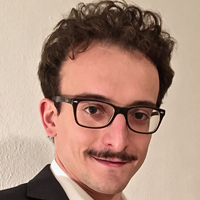 Edoardo Bertero received his MD at the University of Genova, Italy, in 2016. In November 2016, he joined the group of Professor Maack at the University of Saarland in Homburg, Germany. He is currently a PhD student in the Department of Translational Research at the Comprehensive Heart Failure Center (CHFC) in Würzburg, Germany. His work focuses on cellular defects in chronic heart failure, with a special emphasis on the mechanisms of contractile, mitochondrial and metabolic dysfunction in heart failure.
Edoardo Bertero received his MD at the University of Genova, Italy, in 2016. In November 2016, he joined the group of Professor Maack at the University of Saarland in Homburg, Germany. He is currently a PhD student in the Department of Translational Research at the Comprehensive Heart Failure Center (CHFC) in Würzburg, Germany. His work focuses on cellular defects in chronic heart failure, with a special emphasis on the mechanisms of contractile, mitochondrial and metabolic dysfunction in heart failure.
 Edoardo Bertero received his MD at the University of Genova, Italy, in 2016. In November 2016, he joined the group of Professor Maack at the University of Saarland in Homburg, Germany. He is currently a PhD student in the Department of Translational Research at the Comprehensive Heart Failure Center (CHFC) in Würzburg, Germany. His work focuses on cellular defects in chronic heart failure, with a special emphasis on the mechanisms of contractile, mitochondrial and metabolic dysfunction in heart failure.
Edoardo Bertero received his MD at the University of Genova, Italy, in 2016. In November 2016, he joined the group of Professor Maack at the University of Saarland in Homburg, Germany. He is currently a PhD student in the Department of Translational Research at the Comprehensive Heart Failure Center (CHFC) in Würzburg, Germany. His work focuses on cellular defects in chronic heart failure, with a special emphasis on the mechanisms of contractile, mitochondrial and metabolic dysfunction in heart failure.
 Luc Bertrand is Professor of Biochemistry at the University of Louvain, Brussels and Research Director of FRS-FNRS, Belgium. He is group leader in the Pole of Cardiovascular Research of the Experimental and Clinical Research Institute (IREC).
He acted and still acting as member of several Steering Committees including the Society for Heart and Vascular Metabolism, the basic branch of the French Society of Cardiology called GRRC and the Working Group on Myocardial Function of the ESC. He is particularly devoted in the organization of scientific conferences.
Luc Bertrand is Professor of Biochemistry at the University of Louvain, Brussels and Research Director of FRS-FNRS, Belgium. He is group leader in the Pole of Cardiovascular Research of the Experimental and Clinical Research Institute (IREC).
He acted and still acting as member of several Steering Committees including the Society for Heart and Vascular Metabolism, the basic branch of the French Society of Cardiology called GRRC and the Working Group on Myocardial Function of the ESC. He is particularly devoted in the organization of scientific conferences.
His scientific interest is focused on the link between metabolism and cellular signalling in cardiovascular diseases. He is exploring both insulin and AMP-activated protein kinase pathways, investigating novel post-translational modifications such as O-GlcNAcylation and acetylation.
 Luc Bertrand is Professor of Biochemistry at the University of Louvain, Brussels and Research Director of FRS-FNRS, Belgium. He is group leader in the Pole of Cardiovascular Research of the Experimental and Clinical Research Institute (IREC).
He acted and still acting as member of several Steering Committees including the Society for Heart and Vascular Metabolism, the basic branch of the French Society of Cardiology called GRRC and the Working Group on Myocardial Function of the ESC. He is particularly devoted in the organization of scientific conferences.
Luc Bertrand is Professor of Biochemistry at the University of Louvain, Brussels and Research Director of FRS-FNRS, Belgium. He is group leader in the Pole of Cardiovascular Research of the Experimental and Clinical Research Institute (IREC).
He acted and still acting as member of several Steering Committees including the Society for Heart and Vascular Metabolism, the basic branch of the French Society of Cardiology called GRRC and the Working Group on Myocardial Function of the ESC. He is particularly devoted in the organization of scientific conferences.
His scientific interest is focused on the link between metabolism and cellular signalling in cardiovascular diseases. He is exploring both insulin and AMP-activated protein kinase pathways, investigating novel post-translational modifications such as O-GlcNAcylation and acetylation.
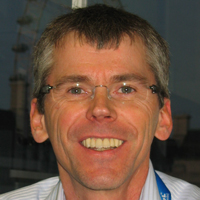 Professor Botnar received his PhD in Biomedical Engineering from the ETH
Zurich. From 1996-97 he was a Research Associate in the Department of Radiology at the University Zurich. In 1997, he joined the Cardiac MR Center at the Beth Israel Deaconess Medical Center and Harvard Medical School where his
research was focused on the development and clinical validation of novel MRI
sequences and molecular contrast agents for coronary artery lumen and plaque
imaging.
Professor Botnar received his PhD in Biomedical Engineering from the ETH
Zurich. From 1996-97 he was a Research Associate in the Department of Radiology at the University Zurich. In 1997, he joined the Cardiac MR Center at the Beth Israel Deaconess Medical Center and Harvard Medical School where his
research was focused on the development and clinical validation of novel MRI
sequences and molecular contrast agents for coronary artery lumen and plaque
imaging.
In 2003, Dr. Botnar became the Scientific Director of the Cardiac MR Center at the Beth Israel Deaconess Medical Center and was appointed to Assistant Professor of Medicine at Harvard Medical School, Boston, USA. In 2005, Dr. Botnar accepted a Professorship of Biomedical Imaging at the Technische Universität Mu?nchen
where he set up a cardiac MR program with a special focus on pre-clinical and
translational multi modality imaging. At the end of 2007, he joined King’s College London where he is currently Professor of Cardiovascular Imaging and Head of the Biomedical Engineering Department. Dr. Botnar is a Fellow of the International Society of Magnetic Resonance Imaging in Medicine and the Society for Cardiovascular Magnetic Resonance. He is an Associate Editor for the Journal of Cardiovascular Magnetic Resonance an editorial board member of the European Heart Journal: Cardiovascular Imaging. He has authored more than 240 peer-reviewed original papers, 35 review articles and 25 book chapters in the field of CMR. He also holds 8 patents and is an editor of a CMR textbook on Cardiovascular Magnetic Resonance Imaging.
 Professor Botnar received his PhD in Biomedical Engineering from the ETH
Zurich. From 1996-97 he was a Research Associate in the Department of Radiology at the University Zurich. In 1997, he joined the Cardiac MR Center at the Beth Israel Deaconess Medical Center and Harvard Medical School where his
research was focused on the development and clinical validation of novel MRI
sequences and molecular contrast agents for coronary artery lumen and plaque
imaging.
Professor Botnar received his PhD in Biomedical Engineering from the ETH
Zurich. From 1996-97 he was a Research Associate in the Department of Radiology at the University Zurich. In 1997, he joined the Cardiac MR Center at the Beth Israel Deaconess Medical Center and Harvard Medical School where his
research was focused on the development and clinical validation of novel MRI
sequences and molecular contrast agents for coronary artery lumen and plaque
imaging.
In 2003, Dr. Botnar became the Scientific Director of the Cardiac MR Center at the Beth Israel Deaconess Medical Center and was appointed to Assistant Professor of Medicine at Harvard Medical School, Boston, USA. In 2005, Dr. Botnar accepted a Professorship of Biomedical Imaging at the Technische Universität Mu?nchen
where he set up a cardiac MR program with a special focus on pre-clinical and
translational multi modality imaging. At the end of 2007, he joined King’s College London where he is currently Professor of Cardiovascular Imaging and Head of the Biomedical Engineering Department. Dr. Botnar is a Fellow of the International Society of Magnetic Resonance Imaging in Medicine and the Society for Cardiovascular Magnetic Resonance. He is an Associate Editor for the Journal of Cardiovascular Magnetic Resonance an editorial board member of the European Heart Journal: Cardiovascular Imaging. He has authored more than 240 peer-reviewed original papers, 35 review articles and 25 book chapters in the field of CMR. He also holds 8 patents and is an editor of a CMR textbook on Cardiovascular Magnetic Resonance Imaging.
 Heiko Bugger received his MD degree at the University of Freiburg in 2005. Between 2005 and 2009, he accomplished a postdoctoral fellowship at the University of Utah in the group of E. Dale Abel. From 2009 to 2018, he served as a clinician in the Department of Cardiology at the University of Freiburg, achieved his board certifications for internal medicine and cardiology, and completed his habilitation in 2016. In 2018, he moved to Graz, Austria, to join the Department of Cardiology at the Medical University of Graz as an interventional cardiologist. Since 2009, he is head of a research group, which focuses on the regulation of cardiac energetics in heart failure, ischemia reperfusion, and diabetic cardiomyopathy. Dr. Bugger received several awards, including the Ludwig-Heilmeyer-Award in Silver in 2012. He is the current chair of the working group “Myocardial function and energetics” of the German Cardiac Society and serves as a reviewer for several research institutions and scientific journals.
Heiko Bugger received his MD degree at the University of Freiburg in 2005. Between 2005 and 2009, he accomplished a postdoctoral fellowship at the University of Utah in the group of E. Dale Abel. From 2009 to 2018, he served as a clinician in the Department of Cardiology at the University of Freiburg, achieved his board certifications for internal medicine and cardiology, and completed his habilitation in 2016. In 2018, he moved to Graz, Austria, to join the Department of Cardiology at the Medical University of Graz as an interventional cardiologist. Since 2009, he is head of a research group, which focuses on the regulation of cardiac energetics in heart failure, ischemia reperfusion, and diabetic cardiomyopathy. Dr. Bugger received several awards, including the Ludwig-Heilmeyer-Award in Silver in 2012. He is the current chair of the working group “Myocardial function and energetics” of the German Cardiac Society and serves as a reviewer for several research institutions and scientific journals.
 Heiko Bugger received his MD degree at the University of Freiburg in 2005. Between 2005 and 2009, he accomplished a postdoctoral fellowship at the University of Utah in the group of E. Dale Abel. From 2009 to 2018, he served as a clinician in the Department of Cardiology at the University of Freiburg, achieved his board certifications for internal medicine and cardiology, and completed his habilitation in 2016. In 2018, he moved to Graz, Austria, to join the Department of Cardiology at the Medical University of Graz as an interventional cardiologist. Since 2009, he is head of a research group, which focuses on the regulation of cardiac energetics in heart failure, ischemia reperfusion, and diabetic cardiomyopathy. Dr. Bugger received several awards, including the Ludwig-Heilmeyer-Award in Silver in 2012. He is the current chair of the working group “Myocardial function and energetics” of the German Cardiac Society and serves as a reviewer for several research institutions and scientific journals.
Heiko Bugger received his MD degree at the University of Freiburg in 2005. Between 2005 and 2009, he accomplished a postdoctoral fellowship at the University of Utah in the group of E. Dale Abel. From 2009 to 2018, he served as a clinician in the Department of Cardiology at the University of Freiburg, achieved his board certifications for internal medicine and cardiology, and completed his habilitation in 2016. In 2018, he moved to Graz, Austria, to join the Department of Cardiology at the Medical University of Graz as an interventional cardiologist. Since 2009, he is head of a research group, which focuses on the regulation of cardiac energetics in heart failure, ischemia reperfusion, and diabetic cardiomyopathy. Dr. Bugger received several awards, including the Ludwig-Heilmeyer-Award in Silver in 2012. He is the current chair of the working group “Myocardial function and energetics” of the German Cardiac Society and serves as a reviewer for several research institutions and scientific journals.
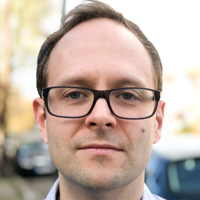 Joseph Burgoyne received his PhD in 2008 at King’s College London. He is a Senior Lecturer in the School of Cardiovascular Medicine & Sciences at King’s College London. His research focuses on the identification and characterisation of novel redox sensors within the cardiovascular system. Early on in his career he made the important discovery that formation of an oxidant-dependent intermolecular disulphide in cGMP-dependent protein kinase Iα (PKG1α), is a key mechanism for regulating blood pressure. His recent work has identified a novel class of antihypertensives that target the oxidative activation of PKG1α, and has shown that antioxidants, including resveratrol, can counterintuitively lower blood pressure by oxidising PKG1α.
Joseph Burgoyne received his PhD in 2008 at King’s College London. He is a Senior Lecturer in the School of Cardiovascular Medicine & Sciences at King’s College London. His research focuses on the identification and characterisation of novel redox sensors within the cardiovascular system. Early on in his career he made the important discovery that formation of an oxidant-dependent intermolecular disulphide in cGMP-dependent protein kinase Iα (PKG1α), is a key mechanism for regulating blood pressure. His recent work has identified a novel class of antihypertensives that target the oxidative activation of PKG1α, and has shown that antioxidants, including resveratrol, can counterintuitively lower blood pressure by oxidising PKG1α.
 Joseph Burgoyne received his PhD in 2008 at King’s College London. He is a Senior Lecturer in the School of Cardiovascular Medicine & Sciences at King’s College London. His research focuses on the identification and characterisation of novel redox sensors within the cardiovascular system. Early on in his career he made the important discovery that formation of an oxidant-dependent intermolecular disulphide in cGMP-dependent protein kinase Iα (PKG1α), is a key mechanism for regulating blood pressure. His recent work has identified a novel class of antihypertensives that target the oxidative activation of PKG1α, and has shown that antioxidants, including resveratrol, can counterintuitively lower blood pressure by oxidising PKG1α.
Joseph Burgoyne received his PhD in 2008 at King’s College London. He is a Senior Lecturer in the School of Cardiovascular Medicine & Sciences at King’s College London. His research focuses on the identification and characterisation of novel redox sensors within the cardiovascular system. Early on in his career he made the important discovery that formation of an oxidant-dependent intermolecular disulphide in cGMP-dependent protein kinase Iα (PKG1α), is a key mechanism for regulating blood pressure. His recent work has identified a novel class of antihypertensives that target the oxidative activation of PKG1α, and has shown that antioxidants, including resveratrol, can counterintuitively lower blood pressure by oxidising PKG1α.
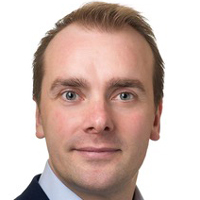 Dr. Burridge is an assistant professor in the Department of Pharmacology at Northwestern University Feinberg School of Medicine and a founding faculty member of the Center for Pharmacogenomics. Dr. Burridge began his career in genomics and bioinformatics at the Sanger Institute working on the human and mouse genome projects. He completed a PhD in Human Stem Cell Biology at the University of Nottingham before pursuing postdoctoral fellowships at Johns Hopkins University in Pediatric Oncology and then at Stanford University in Cardiology before becoming an Instructor in Cardiovascular Medicine at Stanford. For more than 15 years, Dr. Burridge has worked on the applications of human pluripotent stem cells (both hESC and hiPSC), concentrating on culture and differentiation methodologies, regenerative medicine, and disease modeling, specifically the pharmacogenomic and molecular mechanisms of chemotherapy-induced cardiomyopathy and heart failure. Dr. Burridge is the recipient of the NIH NHLBI Pathway to Independence Award and a Fellow of the American Heart Association in Genomic and Precision Medicine.
Dr. Burridge is an assistant professor in the Department of Pharmacology at Northwestern University Feinberg School of Medicine and a founding faculty member of the Center for Pharmacogenomics. Dr. Burridge began his career in genomics and bioinformatics at the Sanger Institute working on the human and mouse genome projects. He completed a PhD in Human Stem Cell Biology at the University of Nottingham before pursuing postdoctoral fellowships at Johns Hopkins University in Pediatric Oncology and then at Stanford University in Cardiology before becoming an Instructor in Cardiovascular Medicine at Stanford. For more than 15 years, Dr. Burridge has worked on the applications of human pluripotent stem cells (both hESC and hiPSC), concentrating on culture and differentiation methodologies, regenerative medicine, and disease modeling, specifically the pharmacogenomic and molecular mechanisms of chemotherapy-induced cardiomyopathy and heart failure. Dr. Burridge is the recipient of the NIH NHLBI Pathway to Independence Award and a Fellow of the American Heart Association in Genomic and Precision Medicine.
 Dr. Burridge is an assistant professor in the Department of Pharmacology at Northwestern University Feinberg School of Medicine and a founding faculty member of the Center for Pharmacogenomics. Dr. Burridge began his career in genomics and bioinformatics at the Sanger Institute working on the human and mouse genome projects. He completed a PhD in Human Stem Cell Biology at the University of Nottingham before pursuing postdoctoral fellowships at Johns Hopkins University in Pediatric Oncology and then at Stanford University in Cardiology before becoming an Instructor in Cardiovascular Medicine at Stanford. For more than 15 years, Dr. Burridge has worked on the applications of human pluripotent stem cells (both hESC and hiPSC), concentrating on culture and differentiation methodologies, regenerative medicine, and disease modeling, specifically the pharmacogenomic and molecular mechanisms of chemotherapy-induced cardiomyopathy and heart failure. Dr. Burridge is the recipient of the NIH NHLBI Pathway to Independence Award and a Fellow of the American Heart Association in Genomic and Precision Medicine.
Dr. Burridge is an assistant professor in the Department of Pharmacology at Northwestern University Feinberg School of Medicine and a founding faculty member of the Center for Pharmacogenomics. Dr. Burridge began his career in genomics and bioinformatics at the Sanger Institute working on the human and mouse genome projects. He completed a PhD in Human Stem Cell Biology at the University of Nottingham before pursuing postdoctoral fellowships at Johns Hopkins University in Pediatric Oncology and then at Stanford University in Cardiology before becoming an Instructor in Cardiovascular Medicine at Stanford. For more than 15 years, Dr. Burridge has worked on the applications of human pluripotent stem cells (both hESC and hiPSC), concentrating on culture and differentiation methodologies, regenerative medicine, and disease modeling, specifically the pharmacogenomic and molecular mechanisms of chemotherapy-induced cardiomyopathy and heart failure. Dr. Burridge is the recipient of the NIH NHLBI Pathway to Independence Award and a Fellow of the American Heart Association in Genomic and Precision Medicine.
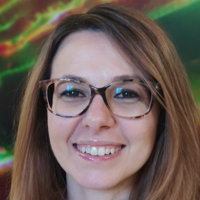 Daniela Carnevale graduated in 2005 in Biological Sciences at Sapienza University of Rome, and completed her training in Neuroimmunology at the Department of Cellular Biology and Neuroscience of the Italian Institute of Health in Rome, receiving her PhD in Neuroscience in 2010. She was recruited at the Department of AngioCardioNeurology and Translational Medicine of IRCCS Neuromed and Sapienza University to complete her postdoctoral studies on the investigation of neuroinflammatory processes involved in vascular dementia. In 2012 she joined the faculty of Pharmacy and Medicine of Sapienza University at IRCCS Neuromed as Assistant Professor, focusing on the investigation of immune mechanisms involved hypertension and its related target organ damage. Associate Professor and Head of the Research Unit of Neuro and Cardiovascular Immunology in 2018, she was appointed Full Professor in 2020 through direct call by the Italian Ministry of Education, University and Research (MIUR) for having won a high-level research programme such as an ERC grant. Author of 51 peer-reviewed papers published in highly qualified journals, member and fellow of the AHA, reviewer for various international scientific journals, Prof. Carnevale is Associate Editor of Cardiovascular Research from 2018. Prof. Carnevale has been appointed as expert of the Italian Ministry of Health and member of the Health Research National Committee. Funded by various granting agencies, she received an ERC Starting Grant in 2017 and two ERANET-CVDs in 2018 and 2019. Her research focuses on elucidating how the nervous system modulates the immune response involved in hypertension and related cardiovascular diseases.
Daniela Carnevale graduated in 2005 in Biological Sciences at Sapienza University of Rome, and completed her training in Neuroimmunology at the Department of Cellular Biology and Neuroscience of the Italian Institute of Health in Rome, receiving her PhD in Neuroscience in 2010. She was recruited at the Department of AngioCardioNeurology and Translational Medicine of IRCCS Neuromed and Sapienza University to complete her postdoctoral studies on the investigation of neuroinflammatory processes involved in vascular dementia. In 2012 she joined the faculty of Pharmacy and Medicine of Sapienza University at IRCCS Neuromed as Assistant Professor, focusing on the investigation of immune mechanisms involved hypertension and its related target organ damage. Associate Professor and Head of the Research Unit of Neuro and Cardiovascular Immunology in 2018, she was appointed Full Professor in 2020 through direct call by the Italian Ministry of Education, University and Research (MIUR) for having won a high-level research programme such as an ERC grant. Author of 51 peer-reviewed papers published in highly qualified journals, member and fellow of the AHA, reviewer for various international scientific journals, Prof. Carnevale is Associate Editor of Cardiovascular Research from 2018. Prof. Carnevale has been appointed as expert of the Italian Ministry of Health and member of the Health Research National Committee. Funded by various granting agencies, she received an ERC Starting Grant in 2017 and two ERANET-CVDs in 2018 and 2019. Her research focuses on elucidating how the nervous system modulates the immune response involved in hypertension and related cardiovascular diseases.
 Daniela Carnevale graduated in 2005 in Biological Sciences at Sapienza University of Rome, and completed her training in Neuroimmunology at the Department of Cellular Biology and Neuroscience of the Italian Institute of Health in Rome, receiving her PhD in Neuroscience in 2010. She was recruited at the Department of AngioCardioNeurology and Translational Medicine of IRCCS Neuromed and Sapienza University to complete her postdoctoral studies on the investigation of neuroinflammatory processes involved in vascular dementia. In 2012 she joined the faculty of Pharmacy and Medicine of Sapienza University at IRCCS Neuromed as Assistant Professor, focusing on the investigation of immune mechanisms involved hypertension and its related target organ damage. Associate Professor and Head of the Research Unit of Neuro and Cardiovascular Immunology in 2018, she was appointed Full Professor in 2020 through direct call by the Italian Ministry of Education, University and Research (MIUR) for having won a high-level research programme such as an ERC grant. Author of 51 peer-reviewed papers published in highly qualified journals, member and fellow of the AHA, reviewer for various international scientific journals, Prof. Carnevale is Associate Editor of Cardiovascular Research from 2018. Prof. Carnevale has been appointed as expert of the Italian Ministry of Health and member of the Health Research National Committee. Funded by various granting agencies, she received an ERC Starting Grant in 2017 and two ERANET-CVDs in 2018 and 2019. Her research focuses on elucidating how the nervous system modulates the immune response involved in hypertension and related cardiovascular diseases.
Daniela Carnevale graduated in 2005 in Biological Sciences at Sapienza University of Rome, and completed her training in Neuroimmunology at the Department of Cellular Biology and Neuroscience of the Italian Institute of Health in Rome, receiving her PhD in Neuroscience in 2010. She was recruited at the Department of AngioCardioNeurology and Translational Medicine of IRCCS Neuromed and Sapienza University to complete her postdoctoral studies on the investigation of neuroinflammatory processes involved in vascular dementia. In 2012 she joined the faculty of Pharmacy and Medicine of Sapienza University at IRCCS Neuromed as Assistant Professor, focusing on the investigation of immune mechanisms involved hypertension and its related target organ damage. Associate Professor and Head of the Research Unit of Neuro and Cardiovascular Immunology in 2018, she was appointed Full Professor in 2020 through direct call by the Italian Ministry of Education, University and Research (MIUR) for having won a high-level research programme such as an ERC grant. Author of 51 peer-reviewed papers published in highly qualified journals, member and fellow of the AHA, reviewer for various international scientific journals, Prof. Carnevale is Associate Editor of Cardiovascular Research from 2018. Prof. Carnevale has been appointed as expert of the Italian Ministry of Health and member of the Health Research National Committee. Funded by various granting agencies, she received an ERC Starting Grant in 2017 and two ERANET-CVDs in 2018 and 2019. Her research focuses on elucidating how the nervous system modulates the immune response involved in hypertension and related cardiovascular diseases.
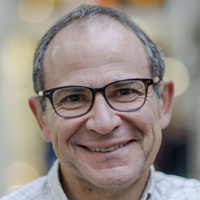 Flavien Charpentier, PhD, Research Director at the French National Institute of Health and Medical Research (Inserm), is the head of the team "Ion channels and cardiac arrhythmias" at l'institut du thorax, Nantes, France. He is an expert in cardiac electrophysiology, from cell to whole animal, and is mainly interested in the cellular and molecular mechanisms of genetically-inherited rhythm and conduction disorders. His current diseases of interest are the long QT syndrome and the Brugada syndrome. He was awarded his PhD from the University of Nantes in 1991, under the direction of Hervé Le Marec. He was recruited by the Inserm and joined his current laboratory in 1996 after a postdoctoral position in Michael Rosen's laboratory at Columbia University (New York, USA). His team has an internationally-recognized expertise in identifying the functional consequences of gene variants and pathophysiological mechanisms involved in inherited cardiac arrhythmias by using heterologous expression cell systems, transgenic mice and more recently cardiomyocytes differentiated from human induced pluripotent stem cells.
Flavien Charpentier, PhD, Research Director at the French National Institute of Health and Medical Research (Inserm), is the head of the team "Ion channels and cardiac arrhythmias" at l'institut du thorax, Nantes, France. He is an expert in cardiac electrophysiology, from cell to whole animal, and is mainly interested in the cellular and molecular mechanisms of genetically-inherited rhythm and conduction disorders. His current diseases of interest are the long QT syndrome and the Brugada syndrome. He was awarded his PhD from the University of Nantes in 1991, under the direction of Hervé Le Marec. He was recruited by the Inserm and joined his current laboratory in 1996 after a postdoctoral position in Michael Rosen's laboratory at Columbia University (New York, USA). His team has an internationally-recognized expertise in identifying the functional consequences of gene variants and pathophysiological mechanisms involved in inherited cardiac arrhythmias by using heterologous expression cell systems, transgenic mice and more recently cardiomyocytes differentiated from human induced pluripotent stem cells.
 Flavien Charpentier, PhD, Research Director at the French National Institute of Health and Medical Research (Inserm), is the head of the team "Ion channels and cardiac arrhythmias" at l'institut du thorax, Nantes, France. He is an expert in cardiac electrophysiology, from cell to whole animal, and is mainly interested in the cellular and molecular mechanisms of genetically-inherited rhythm and conduction disorders. His current diseases of interest are the long QT syndrome and the Brugada syndrome. He was awarded his PhD from the University of Nantes in 1991, under the direction of Hervé Le Marec. He was recruited by the Inserm and joined his current laboratory in 1996 after a postdoctoral position in Michael Rosen's laboratory at Columbia University (New York, USA). His team has an internationally-recognized expertise in identifying the functional consequences of gene variants and pathophysiological mechanisms involved in inherited cardiac arrhythmias by using heterologous expression cell systems, transgenic mice and more recently cardiomyocytes differentiated from human induced pluripotent stem cells.
Flavien Charpentier, PhD, Research Director at the French National Institute of Health and Medical Research (Inserm), is the head of the team "Ion channels and cardiac arrhythmias" at l'institut du thorax, Nantes, France. He is an expert in cardiac electrophysiology, from cell to whole animal, and is mainly interested in the cellular and molecular mechanisms of genetically-inherited rhythm and conduction disorders. His current diseases of interest are the long QT syndrome and the Brugada syndrome. He was awarded his PhD from the University of Nantes in 1991, under the direction of Hervé Le Marec. He was recruited by the Inserm and joined his current laboratory in 1996 after a postdoctoral position in Michael Rosen's laboratory at Columbia University (New York, USA). His team has an internationally-recognized expertise in identifying the functional consequences of gene variants and pathophysiological mechanisms involved in inherited cardiac arrhythmias by using heterologous expression cell systems, transgenic mice and more recently cardiomyocytes differentiated from human induced pluripotent stem cells.
 Assistant professor of Molecular Pharmacology at the Institute of Experimental Pharmacology and Toxicology in Hamburg.
Assistant professor of Molecular Pharmacology at the Institute of Experimental Pharmacology and Toxicology in Hamburg.
Friederike Cuello studied Biochemistry and Molecular Biology at the University Hamburg. She did her doctoral thesis at the Institute of Experimental Pharmacology and Toxicology at the University Clinic Hamburg-Eppendorf (UKE). Subsequently, she moved to the UK as a postdoctoral researcher and then research fellow of the Medical Research Council and worked in the Cardiovascular Division, British Heart Foundation Center of Research Excellence, King’s College London. After 9 years in London, Friederike returned 2012 as an assistant professor of Molecular Pharmacology to the Institute of Experimental Pharmacology and Toxicology in Hamburg. The research focus of her group is on investigating the signal transduction pathways involved in cardiovascular disease development, in particular during hypertension and heart failure that are regulated by protein kinases.
 Assistant professor of Molecular Pharmacology at the Institute of Experimental Pharmacology and Toxicology in Hamburg.
Assistant professor of Molecular Pharmacology at the Institute of Experimental Pharmacology and Toxicology in Hamburg.
Friederike Cuello studied Biochemistry and Molecular Biology at the University Hamburg. She did her doctoral thesis at the Institute of Experimental Pharmacology and Toxicology at the University Clinic Hamburg-Eppendorf (UKE). Subsequently, she moved to the UK as a postdoctoral researcher and then research fellow of the Medical Research Council and worked in the Cardiovascular Division, British Heart Foundation Center of Research Excellence, King’s College London. After 9 years in London, Friederike returned 2012 as an assistant professor of Molecular Pharmacology to the Institute of Experimental Pharmacology and Toxicology in Hamburg. The research focus of her group is on investigating the signal transduction pathways involved in cardiovascular disease development, in particular during hypertension and heart failure that are regulated by protein kinases.
 2005: Master's degree in Medical Chemistry (Chimica e Tecnologia Farmaceutiche), University of Ferrara, Italy, summa cum laude
2005: Master's degree in Medical Chemistry (Chimica e Tecnologia Farmaceutiche), University of Ferrara, Italy, summa cum laude
2009: PhD in Pharmacology and Molecular Oncology, University of Ferrara, Italy
Current position
2019 – present: Associate Professor, Dept. of Biomedical Sciences, University of Padova, Italy
My work has been always focused on mitochondria, in particular on ion channels located in this organelle. I contributed to the identification and characterization of the first described macromolecular complex located at the interface between ER and mitochondria, where the IP3R, the ER Ca2+-releasing channel, is coupled to VDAC, the Ca2+-channel of the OMM, through the chaperone GRP75 (Szabadkai G et al, J Cell Biol. 2006). I also demonstrated that this complex is dynamically tuned to transfer specific signals (e.g. Ca2+-dependent apoptotic stimuli) from one organelle to the other (De Stefani D et al, Cell Death Differ. 2012). Most importantly, I identified the long sought Mitochondrial Calcium Uniporter (MCU), i.e. the channel of the IMM responsible for the electrophoretic accumulation of Ca2+ inside organelle matrix (De Stefani D et al, Nature. 2011). I also identified the endogenous dominant-negative isoform of MCU, named MCUb (Raffaello A et al, EMBO J. 2013) and characterized the gating mechanism of MCU, mediated by MICU1, MICU2 (Patron M et al, Mol Cell. 2014), and MICU3 (Patron M et al, Cell Death Differ. 2019). Finally, I recently identified another mitochondrial cation channel, the highly debated mitochondrial ATP-sensitive potassium channels (mitoKATP) and its physiopathological role (Paggio A et al, Nature, 2019).
 2005: Master's degree in Medical Chemistry (Chimica e Tecnologia Farmaceutiche), University of Ferrara, Italy, summa cum laude
2005: Master's degree in Medical Chemistry (Chimica e Tecnologia Farmaceutiche), University of Ferrara, Italy, summa cum laude
2009: PhD in Pharmacology and Molecular Oncology, University of Ferrara, Italy
Current position
2019 – present: Associate Professor, Dept. of Biomedical Sciences, University of Padova, Italy
My work has been always focused on mitochondria, in particular on ion channels located in this organelle. I contributed to the identification and characterization of the first described macromolecular complex located at the interface between ER and mitochondria, where the IP3R, the ER Ca2+-releasing channel, is coupled to VDAC, the Ca2+-channel of the OMM, through the chaperone GRP75 (Szabadkai G et al, J Cell Biol. 2006). I also demonstrated that this complex is dynamically tuned to transfer specific signals (e.g. Ca2+-dependent apoptotic stimuli) from one organelle to the other (De Stefani D et al, Cell Death Differ. 2012). Most importantly, I identified the long sought Mitochondrial Calcium Uniporter (MCU), i.e. the channel of the IMM responsible for the electrophoretic accumulation of Ca2+ inside organelle matrix (De Stefani D et al, Nature. 2011). I also identified the endogenous dominant-negative isoform of MCU, named MCUb (Raffaello A et al, EMBO J. 2013) and characterized the gating mechanism of MCU, mediated by MICU1, MICU2 (Patron M et al, Mol Cell. 2014), and MICU3 (Patron M et al, Cell Death Differ. 2019). Finally, I recently identified another mitochondrial cation channel, the highly debated mitochondrial ATP-sensitive potassium channels (mitoKATP) and its physiopathological role (Paggio A et al, Nature, 2019).
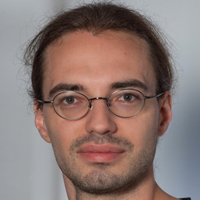 Matthias Dewenter studied medicine at the University of Goettingen, Germany. He conducted his doctoral thesis at the Institute of Pharmacology and Toxicology, University Medical Center Goettingen, under the supervision of Prof. Ali El-Armouche. During his thesis, he was involved in several projects that focused on pathological signaling in heart failure; in particular, he investigated modulators of adrenergic signaling - such as phosphodiesterase 2 (PDE2) and phosphatase-1 inhibitor-1 (I-1) - and the interdependence between beta-adrenoceptor and Ca2+-calmodulin-dependent kinase II (CaMKII) activity.
Matthias Dewenter studied medicine at the University of Goettingen, Germany. He conducted his doctoral thesis at the Institute of Pharmacology and Toxicology, University Medical Center Goettingen, under the supervision of Prof. Ali El-Armouche. During his thesis, he was involved in several projects that focused on pathological signaling in heart failure; in particular, he investigated modulators of adrenergic signaling - such as phosphodiesterase 2 (PDE2) and phosphatase-1 inhibitor-1 (I-1) - and the interdependence between beta-adrenoceptor and Ca2+-calmodulin-dependent kinase II (CaMKII) activity.
Since 2016, he works as an assistant physician/postdoc at the Institute of Experimental Cardiology, Heidelberg University Hospital, where he continues to investigate molecular mechanisms of heart failure development. His current research centers around how cardiac stress signaling and environmental factors influence disease-relevant gene transcription.
In particular, he investigates the pathophysiological role of chromatin modifying enzymes such as histone deacetylases (HDACs) and protein arginine methyltransferases (PRMTs) in cardiomyocytes. A major focus of his research is to translate potential disease-relevant molecular mechanisms into novel therapeutic concepts.
 Matthias Dewenter studied medicine at the University of Goettingen, Germany. He conducted his doctoral thesis at the Institute of Pharmacology and Toxicology, University Medical Center Goettingen, under the supervision of Prof. Ali El-Armouche. During his thesis, he was involved in several projects that focused on pathological signaling in heart failure; in particular, he investigated modulators of adrenergic signaling - such as phosphodiesterase 2 (PDE2) and phosphatase-1 inhibitor-1 (I-1) - and the interdependence between beta-adrenoceptor and Ca2+-calmodulin-dependent kinase II (CaMKII) activity.
Matthias Dewenter studied medicine at the University of Goettingen, Germany. He conducted his doctoral thesis at the Institute of Pharmacology and Toxicology, University Medical Center Goettingen, under the supervision of Prof. Ali El-Armouche. During his thesis, he was involved in several projects that focused on pathological signaling in heart failure; in particular, he investigated modulators of adrenergic signaling - such as phosphodiesterase 2 (PDE2) and phosphatase-1 inhibitor-1 (I-1) - and the interdependence between beta-adrenoceptor and Ca2+-calmodulin-dependent kinase II (CaMKII) activity.
Since 2016, he works as an assistant physician/postdoc at the Institute of Experimental Cardiology, Heidelberg University Hospital, where he continues to investigate molecular mechanisms of heart failure development. His current research centers around how cardiac stress signaling and environmental factors influence disease-relevant gene transcription.
In particular, he investigates the pathophysiological role of chromatin modifying enzymes such as histone deacetylases (HDACs) and protein arginine methyltransferases (PRMTs) in cardiomyocytes. A major focus of his research is to translate potential disease-relevant molecular mechanisms into novel therapeutic concepts.
 Katharine Dibb is a Senior Lecturer in Cardiovascular Sciences at the University of Manchester, UK. She has previously held a University of Manchester Stepping Stone Fellowship and, a British Heart Foundation Intermediate Research Fellowship to investigate the structure and function of the atria of the heart in ageing and atrial fibrillation.
Katharine Dibb is a Senior Lecturer in Cardiovascular Sciences at the University of Manchester, UK. She has previously held a University of Manchester Stepping Stone Fellowship and, a British Heart Foundation Intermediate Research Fellowship to investigate the structure and function of the atria of the heart in ageing and atrial fibrillation.
Her research group continues to focus on the atria of the heart in three main areas. Firstly they have characterised the role of transverse (t)-tubules in normal atrial myocytes, their loss in atrial dysfunction in heart failure and current work is focused on how atrial t-tubules can be restored to improve function. Secondly, the group are elucidating how the structure of t-tubules and the calcium handling machinery alter the functional properties of sub-cellular atrial calcium release sites in health and disease, coupling functional data with super resolution imaging and three-dimensional electron microscopy. Finally, the group are exploring the causes and treatment for atrial fibrillation having already established an important role for alternans in the aged atria.
 Katharine Dibb is a Senior Lecturer in Cardiovascular Sciences at the University of Manchester, UK. She has previously held a University of Manchester Stepping Stone Fellowship and, a British Heart Foundation Intermediate Research Fellowship to investigate the structure and function of the atria of the heart in ageing and atrial fibrillation.
Katharine Dibb is a Senior Lecturer in Cardiovascular Sciences at the University of Manchester, UK. She has previously held a University of Manchester Stepping Stone Fellowship and, a British Heart Foundation Intermediate Research Fellowship to investigate the structure and function of the atria of the heart in ageing and atrial fibrillation.
Her research group continues to focus on the atria of the heart in three main areas. Firstly they have characterised the role of transverse (t)-tubules in normal atrial myocytes, their loss in atrial dysfunction in heart failure and current work is focused on how atrial t-tubules can be restored to improve function. Secondly, the group are elucidating how the structure of t-tubules and the calcium handling machinery alter the functional properties of sub-cellular atrial calcium release sites in health and disease, coupling functional data with super resolution imaging and three-dimensional electron microscopy. Finally, the group are exploring the causes and treatment for atrial fibrillation having already established an important role for alternans in the aged atria.
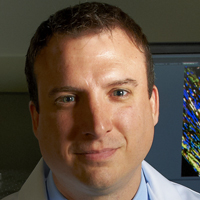 Dr. Elrod is an Associate Professor in the Center for Translational Medicine at Temple University. He received his PhD from Albert Einstein College of Medicine in the lab of David Lefer and postdoctoral training in the Howard Hughes Institute of Jeff Molkentin at Cincinnati Children's Hospital. His lab is exploring mitochondrial biology, metabolism and cell death in the context of cardiac injury, heart failure, and neurodegeneration. His research group has made seminal contributions to the understanding of mitochondrial calcium exchange and its role in physiology and disease.
Dr. Elrod is an Associate Professor in the Center for Translational Medicine at Temple University. He received his PhD from Albert Einstein College of Medicine in the lab of David Lefer and postdoctoral training in the Howard Hughes Institute of Jeff Molkentin at Cincinnati Children's Hospital. His lab is exploring mitochondrial biology, metabolism and cell death in the context of cardiac injury, heart failure, and neurodegeneration. His research group has made seminal contributions to the understanding of mitochondrial calcium exchange and its role in physiology and disease.
 Dr. Elrod is an Associate Professor in the Center for Translational Medicine at Temple University. He received his PhD from Albert Einstein College of Medicine in the lab of David Lefer and postdoctoral training in the Howard Hughes Institute of Jeff Molkentin at Cincinnati Children's Hospital. His lab is exploring mitochondrial biology, metabolism and cell death in the context of cardiac injury, heart failure, and neurodegeneration. His research group has made seminal contributions to the understanding of mitochondrial calcium exchange and its role in physiology and disease.
Dr. Elrod is an Associate Professor in the Center for Translational Medicine at Temple University. He received his PhD from Albert Einstein College of Medicine in the lab of David Lefer and postdoctoral training in the Howard Hughes Institute of Jeff Molkentin at Cincinnati Children's Hospital. His lab is exploring mitochondrial biology, metabolism and cell death in the context of cardiac injury, heart failure, and neurodegeneration. His research group has made seminal contributions to the understanding of mitochondrial calcium exchange and its role in physiology and disease.
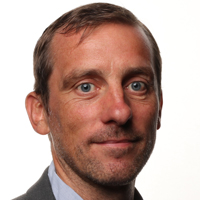 After his PhD, obtained in 2003 at the Faculty of Medicine of the University of Montpellier (France), and a postdoctoral position at the Karolinska Institute (Stockholm, Sweden), Dr. Jérémy Fauconnier was recruited in 2007 as a permanent researcher by the center of national scientific research (CNRS) in the Laboratory of Cardiovascular Physiopathology of the Montpellier University (France). The main research subjects of Dr Jérémy Fauconnier relate to calcium signaling, excitation-contraction coupling, mitochondria and metabolism of the cardiac and skeletal muscles. He specializes in cellular electrophysiology, mitochondrial function and calcium imaging and was granted by the CNRS scientific excellence award in 2014. Founding nucleus member of the scientists of tomorrow of the European Society of Cardiology, he is currently vice- President of the French group of basic and translational research (GRRC) of the French Society of Cardiology.
After his PhD, obtained in 2003 at the Faculty of Medicine of the University of Montpellier (France), and a postdoctoral position at the Karolinska Institute (Stockholm, Sweden), Dr. Jérémy Fauconnier was recruited in 2007 as a permanent researcher by the center of national scientific research (CNRS) in the Laboratory of Cardiovascular Physiopathology of the Montpellier University (France). The main research subjects of Dr Jérémy Fauconnier relate to calcium signaling, excitation-contraction coupling, mitochondria and metabolism of the cardiac and skeletal muscles. He specializes in cellular electrophysiology, mitochondrial function and calcium imaging and was granted by the CNRS scientific excellence award in 2014. Founding nucleus member of the scientists of tomorrow of the European Society of Cardiology, he is currently vice- President of the French group of basic and translational research (GRRC) of the French Society of Cardiology.
 After his PhD, obtained in 2003 at the Faculty of Medicine of the University of Montpellier (France), and a postdoctoral position at the Karolinska Institute (Stockholm, Sweden), Dr. Jérémy Fauconnier was recruited in 2007 as a permanent researcher by the center of national scientific research (CNRS) in the Laboratory of Cardiovascular Physiopathology of the Montpellier University (France). The main research subjects of Dr Jérémy Fauconnier relate to calcium signaling, excitation-contraction coupling, mitochondria and metabolism of the cardiac and skeletal muscles. He specializes in cellular electrophysiology, mitochondrial function and calcium imaging and was granted by the CNRS scientific excellence award in 2014. Founding nucleus member of the scientists of tomorrow of the European Society of Cardiology, he is currently vice- President of the French group of basic and translational research (GRRC) of the French Society of Cardiology.
After his PhD, obtained in 2003 at the Faculty of Medicine of the University of Montpellier (France), and a postdoctoral position at the Karolinska Institute (Stockholm, Sweden), Dr. Jérémy Fauconnier was recruited in 2007 as a permanent researcher by the center of national scientific research (CNRS) in the Laboratory of Cardiovascular Physiopathology of the Montpellier University (France). The main research subjects of Dr Jérémy Fauconnier relate to calcium signaling, excitation-contraction coupling, mitochondria and metabolism of the cardiac and skeletal muscles. He specializes in cellular electrophysiology, mitochondrial function and calcium imaging and was granted by the CNRS scientific excellence award in 2014. Founding nucleus member of the scientists of tomorrow of the European Society of Cardiology, he is currently vice- President of the French group of basic and translational research (GRRC) of the French Society of Cardiology.
 Loren Field, PhD, is a professor of medicine & pediatrics at the Indiana University School of Medicine. He received his PhD at State University of New York at Buffalo and completed his postdoctoral fellowship at Roswell Park Memorial Institute, Buffalo, New York. Prior to his affiliation with Indiana University, Dr. Field was a staff investigator at the Cold Spring Harbor Laboratory, Cold Spring Harbor, New York. Dr. Field and his IU colleagues were the first to show that relatively simple genetic modifications can induce mammalian heart cells to regenerate. His group was also the first to demonstrate that donor cardiomyocytes can structurally integrate when engrafted into adult hearts. His current research is focused on identify genes and molecules that promote heart muscle regeneration by coaxing healthy cells to proliferate. The success of this research would offer the potential for seriously ill patients whose tissue has been damaged by heart attack to "re-grow" their own hearts.
Loren Field, PhD, is a professor of medicine & pediatrics at the Indiana University School of Medicine. He received his PhD at State University of New York at Buffalo and completed his postdoctoral fellowship at Roswell Park Memorial Institute, Buffalo, New York. Prior to his affiliation with Indiana University, Dr. Field was a staff investigator at the Cold Spring Harbor Laboratory, Cold Spring Harbor, New York. Dr. Field and his IU colleagues were the first to show that relatively simple genetic modifications can induce mammalian heart cells to regenerate. His group was also the first to demonstrate that donor cardiomyocytes can structurally integrate when engrafted into adult hearts. His current research is focused on identify genes and molecules that promote heart muscle regeneration by coaxing healthy cells to proliferate. The success of this research would offer the potential for seriously ill patients whose tissue has been damaged by heart attack to "re-grow" their own hearts.
 Loren Field, PhD, is a professor of medicine & pediatrics at the Indiana University School of Medicine. He received his PhD at State University of New York at Buffalo and completed his postdoctoral fellowship at Roswell Park Memorial Institute, Buffalo, New York. Prior to his affiliation with Indiana University, Dr. Field was a staff investigator at the Cold Spring Harbor Laboratory, Cold Spring Harbor, New York. Dr. Field and his IU colleagues were the first to show that relatively simple genetic modifications can induce mammalian heart cells to regenerate. His group was also the first to demonstrate that donor cardiomyocytes can structurally integrate when engrafted into adult hearts. His current research is focused on identify genes and molecules that promote heart muscle regeneration by coaxing healthy cells to proliferate. The success of this research would offer the potential for seriously ill patients whose tissue has been damaged by heart attack to "re-grow" their own hearts.
Loren Field, PhD, is a professor of medicine & pediatrics at the Indiana University School of Medicine. He received his PhD at State University of New York at Buffalo and completed his postdoctoral fellowship at Roswell Park Memorial Institute, Buffalo, New York. Prior to his affiliation with Indiana University, Dr. Field was a staff investigator at the Cold Spring Harbor Laboratory, Cold Spring Harbor, New York. Dr. Field and his IU colleagues were the first to show that relatively simple genetic modifications can induce mammalian heart cells to regenerate. His group was also the first to demonstrate that donor cardiomyocytes can structurally integrate when engrafted into adult hearts. His current research is focused on identify genes and molecules that promote heart muscle regeneration by coaxing healthy cells to proliferate. The success of this research would offer the potential for seriously ill patients whose tissue has been damaged by heart attack to "re-grow" their own hearts.
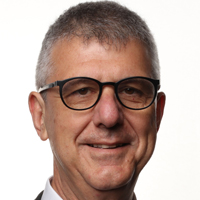 Mauro Giacca, MD PhD, is Professor of Cardiovascular Sciences at the School of Cardiovascular Medicine & Sciences, King’s College London. Until 2018, he has served as the Director-General of the International Centre for Genetic Engineering and Biotechnology (ICGEB), an international organization in the United Nations Common System based in Trieste, Italy. He is the President Elect of the International Society for Heart Research (ISHR) European Section and a member of the Nucleus of the Working Group on Myocardial Function of the European Society of Cardiology (ESC). He has served in the scientific councils of various biotechnology centres internationally and in an advisory body for biotechnology to the President of the Council of Ministries of the Republic of Italy.
Mauro Giacca, MD PhD, is Professor of Cardiovascular Sciences at the School of Cardiovascular Medicine & Sciences, King’s College London. Until 2018, he has served as the Director-General of the International Centre for Genetic Engineering and Biotechnology (ICGEB), an international organization in the United Nations Common System based in Trieste, Italy. He is the President Elect of the International Society for Heart Research (ISHR) European Section and a member of the Nucleus of the Working Group on Myocardial Function of the European Society of Cardiology (ESC). He has served in the scientific councils of various biotechnology centres internationally and in an advisory body for biotechnology to the President of the Council of Ministries of the Republic of Italy.
His current research interests focus on the development of novel biotherapeutics for cardiovascular disorders, in particular on the identification of growth factors and microRNAs inducing cardiac repair and regeneration in patients with myocardial infarction and heart failure. He is considered an expert in the production and use of AAV vectors for cardiovascular applications. He has published over 340 papers in peer-reviewed, international journals, in addition to several reviews and chapters in books and university textbooks. He regularly contributes articles to national newspapers and popular science magazines.
 Mauro Giacca, MD PhD, is Professor of Cardiovascular Sciences at the School of Cardiovascular Medicine & Sciences, King’s College London. Until 2018, he has served as the Director-General of the International Centre for Genetic Engineering and Biotechnology (ICGEB), an international organization in the United Nations Common System based in Trieste, Italy. He is the President Elect of the International Society for Heart Research (ISHR) European Section and a member of the Nucleus of the Working Group on Myocardial Function of the European Society of Cardiology (ESC). He has served in the scientific councils of various biotechnology centres internationally and in an advisory body for biotechnology to the President of the Council of Ministries of the Republic of Italy.
Mauro Giacca, MD PhD, is Professor of Cardiovascular Sciences at the School of Cardiovascular Medicine & Sciences, King’s College London. Until 2018, he has served as the Director-General of the International Centre for Genetic Engineering and Biotechnology (ICGEB), an international organization in the United Nations Common System based in Trieste, Italy. He is the President Elect of the International Society for Heart Research (ISHR) European Section and a member of the Nucleus of the Working Group on Myocardial Function of the European Society of Cardiology (ESC). He has served in the scientific councils of various biotechnology centres internationally and in an advisory body for biotechnology to the President of the Council of Ministries of the Republic of Italy.
His current research interests focus on the development of novel biotherapeutics for cardiovascular disorders, in particular on the identification of growth factors and microRNAs inducing cardiac repair and regeneration in patients with myocardial infarction and heart failure. He is considered an expert in the production and use of AAV vectors for cardiovascular applications. He has published over 340 papers in peer-reviewed, international journals, in addition to several reviews and chapters in books and university textbooks. He regularly contributes articles to national newspapers and popular science magazines.
 Monika Gladka received her PhD in Molecular Cardiology from the University of Maastricht (The Netherlands) in 2014. During that time, she studied the mechanisms driving structural remodeling of the myocardium during the onset and progression of heart failure. This led to the discovery that the transcription factor Hand2 is sufficient and required for heart failure development. After that, she decided to expand her scientific horizons and work on cardiac regeneration at the Hubrecht Institute. Her research focuses on understanding the molecular mechanisms that regulate cardiac repair, intending to identify new players to develop novel, improved gene therapies. She uses several state-of-the-art techniques such as single-cell sequencing, enabling an in-depth mechanistic understanding of the biological processes involved in heart repair.
Monika Gladka received her PhD in Molecular Cardiology from the University of Maastricht (The Netherlands) in 2014. During that time, she studied the mechanisms driving structural remodeling of the myocardium during the onset and progression of heart failure. This led to the discovery that the transcription factor Hand2 is sufficient and required for heart failure development. After that, she decided to expand her scientific horizons and work on cardiac regeneration at the Hubrecht Institute. Her research focuses on understanding the molecular mechanisms that regulate cardiac repair, intending to identify new players to develop novel, improved gene therapies. She uses several state-of-the-art techniques such as single-cell sequencing, enabling an in-depth mechanistic understanding of the biological processes involved in heart repair.
 Monika Gladka received her PhD in Molecular Cardiology from the University of Maastricht (The Netherlands) in 2014. During that time, she studied the mechanisms driving structural remodeling of the myocardium during the onset and progression of heart failure. This led to the discovery that the transcription factor Hand2 is sufficient and required for heart failure development. After that, she decided to expand her scientific horizons and work on cardiac regeneration at the Hubrecht Institute. Her research focuses on understanding the molecular mechanisms that regulate cardiac repair, intending to identify new players to develop novel, improved gene therapies. She uses several state-of-the-art techniques such as single-cell sequencing, enabling an in-depth mechanistic understanding of the biological processes involved in heart repair.
Monika Gladka received her PhD in Molecular Cardiology from the University of Maastricht (The Netherlands) in 2014. During that time, she studied the mechanisms driving structural remodeling of the myocardium during the onset and progression of heart failure. This led to the discovery that the transcription factor Hand2 is sufficient and required for heart failure development. After that, she decided to expand her scientific horizons and work on cardiac regeneration at the Hubrecht Institute. Her research focuses on understanding the molecular mechanisms that regulate cardiac repair, intending to identify new players to develop novel, improved gene therapies. She uses several state-of-the-art techniques such as single-cell sequencing, enabling an in-depth mechanistic understanding of the biological processes involved in heart repair.
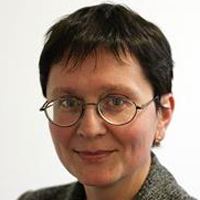 Julia is working in the interface between biophysics and cardiovascular Research. She obtained her Ph.D. in Cell Biology from St-Petersburg's Institute of Cytology, Russian Academy of Science. She is Professor of Cellular Biophysics at Imperial College London. She was at the forefront in developing a new high resolution microscopic technique that is suitable for studying living cells - Scanning Ion Conductance Microscopy (SICM). Julia has a long-standing interest in the heart. By combining SICM and FRET microscopy Julia is studying compartmentation of cyclic nucleotide signaling in cardiomyocytes. Using SICM in combination with patch-clamp Julia is investigating local activation and function of ion channels, particularly LTCCs. This enabled Julia to define the link between cardiomyocyte structure and function in defined signaling nanodomains. Julia is interested how these nanodomains are disturbed in heart failure, working with human cardiomyocytes from patients. She found that beta2-adrenergic receptors and LTCCS redistribute in failing cells leading to perturbed signaling.
Julia is working in the interface between biophysics and cardiovascular Research. She obtained her Ph.D. in Cell Biology from St-Petersburg's Institute of Cytology, Russian Academy of Science. She is Professor of Cellular Biophysics at Imperial College London. She was at the forefront in developing a new high resolution microscopic technique that is suitable for studying living cells - Scanning Ion Conductance Microscopy (SICM). Julia has a long-standing interest in the heart. By combining SICM and FRET microscopy Julia is studying compartmentation of cyclic nucleotide signaling in cardiomyocytes. Using SICM in combination with patch-clamp Julia is investigating local activation and function of ion channels, particularly LTCCs. This enabled Julia to define the link between cardiomyocyte structure and function in defined signaling nanodomains. Julia is interested how these nanodomains are disturbed in heart failure, working with human cardiomyocytes from patients. She found that beta2-adrenergic receptors and LTCCS redistribute in failing cells leading to perturbed signaling.
 Julia is working in the interface between biophysics and cardiovascular Research. She obtained her Ph.D. in Cell Biology from St-Petersburg's Institute of Cytology, Russian Academy of Science. She is Professor of Cellular Biophysics at Imperial College London. She was at the forefront in developing a new high resolution microscopic technique that is suitable for studying living cells - Scanning Ion Conductance Microscopy (SICM). Julia has a long-standing interest in the heart. By combining SICM and FRET microscopy Julia is studying compartmentation of cyclic nucleotide signaling in cardiomyocytes. Using SICM in combination with patch-clamp Julia is investigating local activation and function of ion channels, particularly LTCCs. This enabled Julia to define the link between cardiomyocyte structure and function in defined signaling nanodomains. Julia is interested how these nanodomains are disturbed in heart failure, working with human cardiomyocytes from patients. She found that beta2-adrenergic receptors and LTCCS redistribute in failing cells leading to perturbed signaling.
Julia is working in the interface between biophysics and cardiovascular Research. She obtained her Ph.D. in Cell Biology from St-Petersburg's Institute of Cytology, Russian Academy of Science. She is Professor of Cellular Biophysics at Imperial College London. She was at the forefront in developing a new high resolution microscopic technique that is suitable for studying living cells - Scanning Ion Conductance Microscopy (SICM). Julia has a long-standing interest in the heart. By combining SICM and FRET microscopy Julia is studying compartmentation of cyclic nucleotide signaling in cardiomyocytes. Using SICM in combination with patch-clamp Julia is investigating local activation and function of ion channels, particularly LTCCs. This enabled Julia to define the link between cardiomyocyte structure and function in defined signaling nanodomains. Julia is interested how these nanodomains are disturbed in heart failure, working with human cardiomyocytes from patients. She found that beta2-adrenergic receptors and LTCCS redistribute in failing cells leading to perturbed signaling.
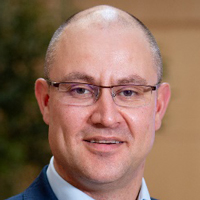 David Grieve received his PhD from the Royal Veterinary College (University of London) in 1998 before joining the laboratory of Ajay Shah at King’s College London. In 2005, he took up an academic position at the School of Medicine, Dentistry and Biomedical Sciences, Queen’s University Belfast where he is now a full Professor with an independent research programme focused on investigating mechanisms underlying cardiovascular remodelling and dysfunction. His group has a particular interest in the role of oxidative stress, novel peptide hormones, endothelial progenitor cells, and the influence of diabetes on the adaptive, but ultimately detrimental changes that occur during cardiovascular disease and how these may be modulated for potential therapeutic benefit. He is currently Vice Chair of the British Heart Foundation Projects Grants Committee and serves on the Editorial Board of Cardiovascular Drugs and Therapy, and has recently completed a 6-year term as Honorary Secretary of the British Society for Cardiovascular Research.
David Grieve received his PhD from the Royal Veterinary College (University of London) in 1998 before joining the laboratory of Ajay Shah at King’s College London. In 2005, he took up an academic position at the School of Medicine, Dentistry and Biomedical Sciences, Queen’s University Belfast where he is now a full Professor with an independent research programme focused on investigating mechanisms underlying cardiovascular remodelling and dysfunction. His group has a particular interest in the role of oxidative stress, novel peptide hormones, endothelial progenitor cells, and the influence of diabetes on the adaptive, but ultimately detrimental changes that occur during cardiovascular disease and how these may be modulated for potential therapeutic benefit. He is currently Vice Chair of the British Heart Foundation Projects Grants Committee and serves on the Editorial Board of Cardiovascular Drugs and Therapy, and has recently completed a 6-year term as Honorary Secretary of the British Society for Cardiovascular Research.
 David Grieve received his PhD from the Royal Veterinary College (University of London) in 1998 before joining the laboratory of Ajay Shah at King’s College London. In 2005, he took up an academic position at the School of Medicine, Dentistry and Biomedical Sciences, Queen’s University Belfast where he is now a full Professor with an independent research programme focused on investigating mechanisms underlying cardiovascular remodelling and dysfunction. His group has a particular interest in the role of oxidative stress, novel peptide hormones, endothelial progenitor cells, and the influence of diabetes on the adaptive, but ultimately detrimental changes that occur during cardiovascular disease and how these may be modulated for potential therapeutic benefit. He is currently Vice Chair of the British Heart Foundation Projects Grants Committee and serves on the Editorial Board of Cardiovascular Drugs and Therapy, and has recently completed a 6-year term as Honorary Secretary of the British Society for Cardiovascular Research.
David Grieve received his PhD from the Royal Veterinary College (University of London) in 1998 before joining the laboratory of Ajay Shah at King’s College London. In 2005, he took up an academic position at the School of Medicine, Dentistry and Biomedical Sciences, Queen’s University Belfast where he is now a full Professor with an independent research programme focused on investigating mechanisms underlying cardiovascular remodelling and dysfunction. His group has a particular interest in the role of oxidative stress, novel peptide hormones, endothelial progenitor cells, and the influence of diabetes on the adaptive, but ultimately detrimental changes that occur during cardiovascular disease and how these may be modulated for potential therapeutic benefit. He is currently Vice Chair of the British Heart Foundation Projects Grants Committee and serves on the Editorial Board of Cardiovascular Drugs and Therapy, and has recently completed a 6-year term as Honorary Secretary of the British Society for Cardiovascular Research.
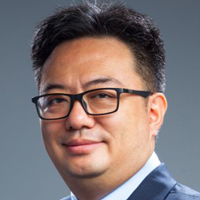 Derek Hausenloy is Professor in the Cardiovascular & Metabolic Disorders Signature Program, Duke-National University of Singapore Medical School, and Senior Consultant Cardiologist at the National Heart Centre, Singapore. He is also Professor in the Institute of Cardiovascular Sciences, University College London. He conducts both basic, translational and clinical research in the areas of ischaemic heart disease, heart failure, cardioprotection, and cardiac MRI. His main research focus is on discovering novel therapies for protecting the heart against the detrimental effects of acute ischaemia/reperfusion injury (IRI) in order to prevent the onset of heart failure. He uses a translational approach to cardioprotection ranging from cellular and animal models of acute IRI to proof-of-concept clinical studies in acute myocardial infarction and cardiac bypass surgery patients, and finally to large multi-centre randomised clinical trials focused on clinical outcomes. He is also interested in both small animal and clinical cardiac PET and MRI imaging in the context of acute myocardial infarction and cardioprotection, and more recently, has developed an interest in using human iPSC-derived cardiomyocytes to model cardiomyopathies in order to elucidate underlying mechanism and identify novel therapeutic targets. He has been PI on over 30 research grants, and has authored 318 papers (with 35,825 citations), and his H-index is 94. In 2018 and 2020 he was named Highly Cited Researcher by Clarivate Analytics.
Derek Hausenloy is Professor in the Cardiovascular & Metabolic Disorders Signature Program, Duke-National University of Singapore Medical School, and Senior Consultant Cardiologist at the National Heart Centre, Singapore. He is also Professor in the Institute of Cardiovascular Sciences, University College London. He conducts both basic, translational and clinical research in the areas of ischaemic heart disease, heart failure, cardioprotection, and cardiac MRI. His main research focus is on discovering novel therapies for protecting the heart against the detrimental effects of acute ischaemia/reperfusion injury (IRI) in order to prevent the onset of heart failure. He uses a translational approach to cardioprotection ranging from cellular and animal models of acute IRI to proof-of-concept clinical studies in acute myocardial infarction and cardiac bypass surgery patients, and finally to large multi-centre randomised clinical trials focused on clinical outcomes. He is also interested in both small animal and clinical cardiac PET and MRI imaging in the context of acute myocardial infarction and cardioprotection, and more recently, has developed an interest in using human iPSC-derived cardiomyocytes to model cardiomyopathies in order to elucidate underlying mechanism and identify novel therapeutic targets. He has been PI on over 30 research grants, and has authored 318 papers (with 35,825 citations), and his H-index is 94. In 2018 and 2020 he was named Highly Cited Researcher by Clarivate Analytics.
 Derek Hausenloy is Professor in the Cardiovascular & Metabolic Disorders Signature Program, Duke-National University of Singapore Medical School, and Senior Consultant Cardiologist at the National Heart Centre, Singapore. He is also Professor in the Institute of Cardiovascular Sciences, University College London. He conducts both basic, translational and clinical research in the areas of ischaemic heart disease, heart failure, cardioprotection, and cardiac MRI. His main research focus is on discovering novel therapies for protecting the heart against the detrimental effects of acute ischaemia/reperfusion injury (IRI) in order to prevent the onset of heart failure. He uses a translational approach to cardioprotection ranging from cellular and animal models of acute IRI to proof-of-concept clinical studies in acute myocardial infarction and cardiac bypass surgery patients, and finally to large multi-centre randomised clinical trials focused on clinical outcomes. He is also interested in both small animal and clinical cardiac PET and MRI imaging in the context of acute myocardial infarction and cardioprotection, and more recently, has developed an interest in using human iPSC-derived cardiomyocytes to model cardiomyopathies in order to elucidate underlying mechanism and identify novel therapeutic targets. He has been PI on over 30 research grants, and has authored 318 papers (with 35,825 citations), and his H-index is 94. In 2018 and 2020 he was named Highly Cited Researcher by Clarivate Analytics.
Derek Hausenloy is Professor in the Cardiovascular & Metabolic Disorders Signature Program, Duke-National University of Singapore Medical School, and Senior Consultant Cardiologist at the National Heart Centre, Singapore. He is also Professor in the Institute of Cardiovascular Sciences, University College London. He conducts both basic, translational and clinical research in the areas of ischaemic heart disease, heart failure, cardioprotection, and cardiac MRI. His main research focus is on discovering novel therapies for protecting the heart against the detrimental effects of acute ischaemia/reperfusion injury (IRI) in order to prevent the onset of heart failure. He uses a translational approach to cardioprotection ranging from cellular and animal models of acute IRI to proof-of-concept clinical studies in acute myocardial infarction and cardiac bypass surgery patients, and finally to large multi-centre randomised clinical trials focused on clinical outcomes. He is also interested in both small animal and clinical cardiac PET and MRI imaging in the context of acute myocardial infarction and cardioprotection, and more recently, has developed an interest in using human iPSC-derived cardiomyocytes to model cardiomyopathies in order to elucidate underlying mechanism and identify novel therapeutic targets. He has been PI on over 30 research grants, and has authored 318 papers (with 35,825 citations), and his H-index is 94. In 2018 and 2020 he was named Highly Cited Researcher by Clarivate Analytics.
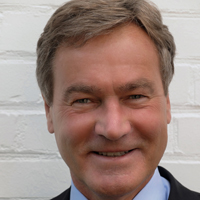 Born 1955 in Bonn, Germany, Gerd Heusch studied medicine at the Universities of Düsseldorf and Bonn (MD in 1980). From 1980 to 1985 he was a postdoctoral fellow in the Department of Physiology at the University of Düsseldorf (PhD in 1985). He then was research cardiologist at the University of California, San Diego under Dr. John Ross Jr. After his return to Düsseldorf he was awarded a Heisenberg scholarship by the German Research Foundation and worked in the Departments of Physiology and Cardiology (Prof. Franz Loogen). In 1989 he was appointed professor and chair of the Institute for Pathophysiology at the University of Essen, a position which he holds up to now. From 1999 to 2000 he spent a sabbatical in the Department of Physiology at the University of Southern Alabama, Mobile with Dr. Jim Downey, and he is adjunct professor there since. Gerd Heusch´s major research interests are the control of coronary blood flow, myocardial ischemia/reperfusion injury and cardioprotective strategies. He has been president of the German Cardiac Society and of the European Section of the International Society for Heart Research. He has been awarded the William Harvey Lecture and Silver Medal of the European Society of Cardiology, the Carl Ludwig award of the German Cardiac Society and the Carl Wiggers award of the American Physiological Society. He is editor of Basic Research in Cardiology since 1992 and served as editorial board member of other prestigious journals.
Born 1955 in Bonn, Germany, Gerd Heusch studied medicine at the Universities of Düsseldorf and Bonn (MD in 1980). From 1980 to 1985 he was a postdoctoral fellow in the Department of Physiology at the University of Düsseldorf (PhD in 1985). He then was research cardiologist at the University of California, San Diego under Dr. John Ross Jr. After his return to Düsseldorf he was awarded a Heisenberg scholarship by the German Research Foundation and worked in the Departments of Physiology and Cardiology (Prof. Franz Loogen). In 1989 he was appointed professor and chair of the Institute for Pathophysiology at the University of Essen, a position which he holds up to now. From 1999 to 2000 he spent a sabbatical in the Department of Physiology at the University of Southern Alabama, Mobile with Dr. Jim Downey, and he is adjunct professor there since. Gerd Heusch´s major research interests are the control of coronary blood flow, myocardial ischemia/reperfusion injury and cardioprotective strategies. He has been president of the German Cardiac Society and of the European Section of the International Society for Heart Research. He has been awarded the William Harvey Lecture and Silver Medal of the European Society of Cardiology, the Carl Ludwig award of the German Cardiac Society and the Carl Wiggers award of the American Physiological Society. He is editor of Basic Research in Cardiology since 1992 and served as editorial board member of other prestigious journals.
 Born 1955 in Bonn, Germany, Gerd Heusch studied medicine at the Universities of Düsseldorf and Bonn (MD in 1980). From 1980 to 1985 he was a postdoctoral fellow in the Department of Physiology at the University of Düsseldorf (PhD in 1985). He then was research cardiologist at the University of California, San Diego under Dr. John Ross Jr. After his return to Düsseldorf he was awarded a Heisenberg scholarship by the German Research Foundation and worked in the Departments of Physiology and Cardiology (Prof. Franz Loogen). In 1989 he was appointed professor and chair of the Institute for Pathophysiology at the University of Essen, a position which he holds up to now. From 1999 to 2000 he spent a sabbatical in the Department of Physiology at the University of Southern Alabama, Mobile with Dr. Jim Downey, and he is adjunct professor there since. Gerd Heusch´s major research interests are the control of coronary blood flow, myocardial ischemia/reperfusion injury and cardioprotective strategies. He has been president of the German Cardiac Society and of the European Section of the International Society for Heart Research. He has been awarded the William Harvey Lecture and Silver Medal of the European Society of Cardiology, the Carl Ludwig award of the German Cardiac Society and the Carl Wiggers award of the American Physiological Society. He is editor of Basic Research in Cardiology since 1992 and served as editorial board member of other prestigious journals.
Born 1955 in Bonn, Germany, Gerd Heusch studied medicine at the Universities of Düsseldorf and Bonn (MD in 1980). From 1980 to 1985 he was a postdoctoral fellow in the Department of Physiology at the University of Düsseldorf (PhD in 1985). He then was research cardiologist at the University of California, San Diego under Dr. John Ross Jr. After his return to Düsseldorf he was awarded a Heisenberg scholarship by the German Research Foundation and worked in the Departments of Physiology and Cardiology (Prof. Franz Loogen). In 1989 he was appointed professor and chair of the Institute for Pathophysiology at the University of Essen, a position which he holds up to now. From 1999 to 2000 he spent a sabbatical in the Department of Physiology at the University of Southern Alabama, Mobile with Dr. Jim Downey, and he is adjunct professor there since. Gerd Heusch´s major research interests are the control of coronary blood flow, myocardial ischemia/reperfusion injury and cardioprotective strategies. He has been president of the German Cardiac Society and of the European Section of the International Society for Heart Research. He has been awarded the William Harvey Lecture and Silver Medal of the European Society of Cardiology, the Carl Ludwig award of the German Cardiac Society and the Carl Wiggers award of the American Physiological Society. He is editor of Basic Research in Cardiology since 1992 and served as editorial board member of other prestigious journals.
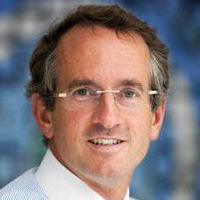 Cardiologist and Research Scientist since 2003 focusing on the molecular mechanisms of heart failure, looking at the interplay between inflammatory cells, fibroblasts and cardiomyocytes. Unraveled the key role of structural and non-structural matrix proteins and RNAs, including microRNAs, matrix metalloproteinases, collagens and matri-cellular proteins, in mediating cardiac inflammation, fibrosis and dysfunction.
Cardiologist and Research Scientist since 2003 focusing on the molecular mechanisms of heart failure, looking at the interplay between inflammatory cells, fibroblasts and cardiomyocytes. Unraveled the key role of structural and non-structural matrix proteins and RNAs, including microRNAs, matrix metalloproteinases, collagens and matri-cellular proteins, in mediating cardiac inflammation, fibrosis and dysfunction.
Stephane Heymans became a staff member of Cardiology since 2003 at the Maastricht University Medical Centre (MUMC), in 2009 appointed professor of (non-ischemic) cardiomyopathies within the Netherlands Heart Institute, the Maastricht University Medical Centre, and the University of Leuven. His heart failure research focuses on heart with preserved ejection fraction (HFPEF) and dilated cardiomyopathies (DCM) (www.hfresearch.eu), Linked in.
SH is acknowledged for developing a clinical care program and related cohorts of non-ischemic CMP, myocarditis and HFPEF patients at the MUMC (> 1400 patients cohort and biobank of HFPEF and DCM patients with > 12 yrs FU). His program brings together immunologists, microbiologists, geneticians and molecular cardiologists to study the role of genetics, viruses, inflammation and other environmental factors in cardiomyopathies. This clinical works allows a continuous translation between the bench and the bedside.
SH is board member at the European Heart Failure Association, Chair of the Committee on Translational Research of the European Heart Failure Association, Chair of the Working Group of Myocardial Function of the European Society of Cardiology.
 Cardiologist and Research Scientist since 2003 focusing on the molecular mechanisms of heart failure, looking at the interplay between inflammatory cells, fibroblasts and cardiomyocytes. Unraveled the key role of structural and non-structural matrix proteins and RNAs, including microRNAs, matrix metalloproteinases, collagens and matri-cellular proteins, in mediating cardiac inflammation, fibrosis and dysfunction.
Cardiologist and Research Scientist since 2003 focusing on the molecular mechanisms of heart failure, looking at the interplay between inflammatory cells, fibroblasts and cardiomyocytes. Unraveled the key role of structural and non-structural matrix proteins and RNAs, including microRNAs, matrix metalloproteinases, collagens and matri-cellular proteins, in mediating cardiac inflammation, fibrosis and dysfunction.
Stephane Heymans became a staff member of Cardiology since 2003 at the Maastricht University Medical Centre (MUMC), in 2009 appointed professor of (non-ischemic) cardiomyopathies within the Netherlands Heart Institute, the Maastricht University Medical Centre, and the University of Leuven. His heart failure research focuses on heart with preserved ejection fraction (HFPEF) and dilated cardiomyopathies (DCM) (www.hfresearch.eu), Linked in.
SH is acknowledged for developing a clinical care program and related cohorts of non-ischemic CMP, myocarditis and HFPEF patients at the MUMC (> 1400 patients cohort and biobank of HFPEF and DCM patients with > 12 yrs FU). His program brings together immunologists, microbiologists, geneticians and molecular cardiologists to study the role of genetics, viruses, inflammation and other environmental factors in cardiomyopathies. This clinical works allows a continuous translation between the bench and the bedside.
SH is board member at the European Heart Failure Association, Chair of the Committee on Translational Research of the European Heart Failure Association, Chair of the Working Group of Myocardial Function of the European Society of Cardiology.
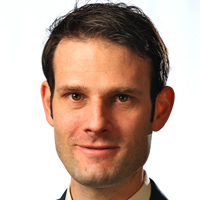 Dr. Hilgendorf’s scientific interest lies in understanding the role of the innate and adaptive immune system in cardiovascular disease and how modulation of the immune response affects disease outcome. Inflammatory cells function critically in the development of atherosclerosis and healing of myocardial infarction. Monocytes infiltrate lesions and give rise to inflammatory macrophages that proliferate locally. T and B cells can either promote or inhibit atherogenesis based on the subset. In this respect, cardiovascular disease progression likely results from an imbalance of pro- and anti-inflammatory forces. His goal is to reverse atherosclerosis and optimize healing of cardiac lesions through immunomodulation. Dr. Hilgendorf’s research interest goes hand in hand with his professional education in internal medicine and clinical cardiology. Working as an interventional cardiologist and attending physician at one of Germany’s largest heart center, he exemplifies the cardiovascular clinician scientist dedicated to translates basic research into clinical practice.
Dr. Hilgendorf’s scientific interest lies in understanding the role of the innate and adaptive immune system in cardiovascular disease and how modulation of the immune response affects disease outcome. Inflammatory cells function critically in the development of atherosclerosis and healing of myocardial infarction. Monocytes infiltrate lesions and give rise to inflammatory macrophages that proliferate locally. T and B cells can either promote or inhibit atherogenesis based on the subset. In this respect, cardiovascular disease progression likely results from an imbalance of pro- and anti-inflammatory forces. His goal is to reverse atherosclerosis and optimize healing of cardiac lesions through immunomodulation. Dr. Hilgendorf’s research interest goes hand in hand with his professional education in internal medicine and clinical cardiology. Working as an interventional cardiologist and attending physician at one of Germany’s largest heart center, he exemplifies the cardiovascular clinician scientist dedicated to translates basic research into clinical practice.
 Dr. Hilgendorf’s scientific interest lies in understanding the role of the innate and adaptive immune system in cardiovascular disease and how modulation of the immune response affects disease outcome. Inflammatory cells function critically in the development of atherosclerosis and healing of myocardial infarction. Monocytes infiltrate lesions and give rise to inflammatory macrophages that proliferate locally. T and B cells can either promote or inhibit atherogenesis based on the subset. In this respect, cardiovascular disease progression likely results from an imbalance of pro- and anti-inflammatory forces. His goal is to reverse atherosclerosis and optimize healing of cardiac lesions through immunomodulation. Dr. Hilgendorf’s research interest goes hand in hand with his professional education in internal medicine and clinical cardiology. Working as an interventional cardiologist and attending physician at one of Germany’s largest heart center, he exemplifies the cardiovascular clinician scientist dedicated to translates basic research into clinical practice.
Dr. Hilgendorf’s scientific interest lies in understanding the role of the innate and adaptive immune system in cardiovascular disease and how modulation of the immune response affects disease outcome. Inflammatory cells function critically in the development of atherosclerosis and healing of myocardial infarction. Monocytes infiltrate lesions and give rise to inflammatory macrophages that proliferate locally. T and B cells can either promote or inhibit atherogenesis based on the subset. In this respect, cardiovascular disease progression likely results from an imbalance of pro- and anti-inflammatory forces. His goal is to reverse atherosclerosis and optimize healing of cardiac lesions through immunomodulation. Dr. Hilgendorf’s research interest goes hand in hand with his professional education in internal medicine and clinical cardiology. Working as an interventional cardiologist and attending physician at one of Germany’s largest heart center, he exemplifies the cardiovascular clinician scientist dedicated to translates basic research into clinical practice.
 Dr. Hlavá?ková is a senior researcher in the Institute of Physiology of the Czech Academy of Sciences. She received her PhD in biochemistry from the Faculty of Science of the Charles University in Prague in 2012 and accepted postdoctoral positions at the Institute of Cardiovascular Sciences, St. Boniface Hospital Research, Winnipeg, Manitoba, Canada (professor Grant Pierce laboratory) and then at the Centre for Metabolic and Vascular Biology, School of Life Science, Arizona State University, Arizona, USA (professor Tatiana Ugarova laboratory). Her research concerns the molecular mechanism underlying the long-lasting cardioprotective and antiarrhytmic effects conferred by adaptation to chronic continuous and intermittent hypoxia, regular exercise training and dietary intervention. More recently, she became interested in the role of Fat mass and obesity associated (FTO) protein in cardiac tolerance to ischemia-reperfusion injury and the role of FTO activity in the long-term early programming and regulation of cardiac function and energy metabolism under normal and pathological perinatal conditions.
Dr. Hlavá?ková is a senior researcher in the Institute of Physiology of the Czech Academy of Sciences. She received her PhD in biochemistry from the Faculty of Science of the Charles University in Prague in 2012 and accepted postdoctoral positions at the Institute of Cardiovascular Sciences, St. Boniface Hospital Research, Winnipeg, Manitoba, Canada (professor Grant Pierce laboratory) and then at the Centre for Metabolic and Vascular Biology, School of Life Science, Arizona State University, Arizona, USA (professor Tatiana Ugarova laboratory). Her research concerns the molecular mechanism underlying the long-lasting cardioprotective and antiarrhytmic effects conferred by adaptation to chronic continuous and intermittent hypoxia, regular exercise training and dietary intervention. More recently, she became interested in the role of Fat mass and obesity associated (FTO) protein in cardiac tolerance to ischemia-reperfusion injury and the role of FTO activity in the long-term early programming and regulation of cardiac function and energy metabolism under normal and pathological perinatal conditions.
 Dr. Hlavá?ková is a senior researcher in the Institute of Physiology of the Czech Academy of Sciences. She received her PhD in biochemistry from the Faculty of Science of the Charles University in Prague in 2012 and accepted postdoctoral positions at the Institute of Cardiovascular Sciences, St. Boniface Hospital Research, Winnipeg, Manitoba, Canada (professor Grant Pierce laboratory) and then at the Centre for Metabolic and Vascular Biology, School of Life Science, Arizona State University, Arizona, USA (professor Tatiana Ugarova laboratory). Her research concerns the molecular mechanism underlying the long-lasting cardioprotective and antiarrhytmic effects conferred by adaptation to chronic continuous and intermittent hypoxia, regular exercise training and dietary intervention. More recently, she became interested in the role of Fat mass and obesity associated (FTO) protein in cardiac tolerance to ischemia-reperfusion injury and the role of FTO activity in the long-term early programming and regulation of cardiac function and energy metabolism under normal and pathological perinatal conditions.
Dr. Hlavá?ková is a senior researcher in the Institute of Physiology of the Czech Academy of Sciences. She received her PhD in biochemistry from the Faculty of Science of the Charles University in Prague in 2012 and accepted postdoctoral positions at the Institute of Cardiovascular Sciences, St. Boniface Hospital Research, Winnipeg, Manitoba, Canada (professor Grant Pierce laboratory) and then at the Centre for Metabolic and Vascular Biology, School of Life Science, Arizona State University, Arizona, USA (professor Tatiana Ugarova laboratory). Her research concerns the molecular mechanism underlying the long-lasting cardioprotective and antiarrhytmic effects conferred by adaptation to chronic continuous and intermittent hypoxia, regular exercise training and dietary intervention. More recently, she became interested in the role of Fat mass and obesity associated (FTO) protein in cardiac tolerance to ischemia-reperfusion injury and the role of FTO activity in the long-term early programming and regulation of cardiac function and energy metabolism under normal and pathological perinatal conditions.
 Fabien Hyafil, MD, PhD, FESC, is Senior Consultant in the department of Nuclear Medicine of Bichat Hospital, Assistance Publique - Hôpitaux de Paris. He earned a Medical Degree in the School of Medicine of Paris Descartes and is board certified in Cardiology and Nuclear Medicine. Dr Hyafil completed a residency at Assistance-Publique Hôpitaux de Paris and then a two-year research fellowship on atherosclerosis imaging in the Imaging Science Laboratories of Prof. Fayad at Mount Sinai Hospital in New York. He completed a Fellowship in Cardiology in the department of Prof. Vahanian followed by a Fellowship in Nuclear Medicine in the department of Prof. Le Guludec at Bichat Hospital. Dr Hyafil has joined the department of Nuclear Medecine of Prof. Schwaiger at Klinikum rechts der Isar in Munich for two years and worked at developing new cardiovascular applications for PET-MRI. He is currently working in the department of Nuclear Medicine of Bichat Hospital as Senior Consultant in charge of Nuclear Cardiology. He is leading the work package on molecular imaging of atherosclerosis of the research project RHU iVASC. Dr Hyafil is vice-Chair of the Cardiovascular Committee of EANM, member of the Organization Committee of the EANM meeting, Fellow of the European Society of Cardiology. His main fields of interest are molecular of imaging of atherosclerosis, cardiac inflammation and device infection and myocardial perfusion imaging.
Fabien Hyafil, MD, PhD, FESC, is Senior Consultant in the department of Nuclear Medicine of Bichat Hospital, Assistance Publique - Hôpitaux de Paris. He earned a Medical Degree in the School of Medicine of Paris Descartes and is board certified in Cardiology and Nuclear Medicine. Dr Hyafil completed a residency at Assistance-Publique Hôpitaux de Paris and then a two-year research fellowship on atherosclerosis imaging in the Imaging Science Laboratories of Prof. Fayad at Mount Sinai Hospital in New York. He completed a Fellowship in Cardiology in the department of Prof. Vahanian followed by a Fellowship in Nuclear Medicine in the department of Prof. Le Guludec at Bichat Hospital. Dr Hyafil has joined the department of Nuclear Medecine of Prof. Schwaiger at Klinikum rechts der Isar in Munich for two years and worked at developing new cardiovascular applications for PET-MRI. He is currently working in the department of Nuclear Medicine of Bichat Hospital as Senior Consultant in charge of Nuclear Cardiology. He is leading the work package on molecular imaging of atherosclerosis of the research project RHU iVASC. Dr Hyafil is vice-Chair of the Cardiovascular Committee of EANM, member of the Organization Committee of the EANM meeting, Fellow of the European Society of Cardiology. His main fields of interest are molecular of imaging of atherosclerosis, cardiac inflammation and device infection and myocardial perfusion imaging.
 Fabien Hyafil, MD, PhD, FESC, is Senior Consultant in the department of Nuclear Medicine of Bichat Hospital, Assistance Publique - Hôpitaux de Paris. He earned a Medical Degree in the School of Medicine of Paris Descartes and is board certified in Cardiology and Nuclear Medicine. Dr Hyafil completed a residency at Assistance-Publique Hôpitaux de Paris and then a two-year research fellowship on atherosclerosis imaging in the Imaging Science Laboratories of Prof. Fayad at Mount Sinai Hospital in New York. He completed a Fellowship in Cardiology in the department of Prof. Vahanian followed by a Fellowship in Nuclear Medicine in the department of Prof. Le Guludec at Bichat Hospital. Dr Hyafil has joined the department of Nuclear Medecine of Prof. Schwaiger at Klinikum rechts der Isar in Munich for two years and worked at developing new cardiovascular applications for PET-MRI. He is currently working in the department of Nuclear Medicine of Bichat Hospital as Senior Consultant in charge of Nuclear Cardiology. He is leading the work package on molecular imaging of atherosclerosis of the research project RHU iVASC. Dr Hyafil is vice-Chair of the Cardiovascular Committee of EANM, member of the Organization Committee of the EANM meeting, Fellow of the European Society of Cardiology. His main fields of interest are molecular of imaging of atherosclerosis, cardiac inflammation and device infection and myocardial perfusion imaging.
Fabien Hyafil, MD, PhD, FESC, is Senior Consultant in the department of Nuclear Medicine of Bichat Hospital, Assistance Publique - Hôpitaux de Paris. He earned a Medical Degree in the School of Medicine of Paris Descartes and is board certified in Cardiology and Nuclear Medicine. Dr Hyafil completed a residency at Assistance-Publique Hôpitaux de Paris and then a two-year research fellowship on atherosclerosis imaging in the Imaging Science Laboratories of Prof. Fayad at Mount Sinai Hospital in New York. He completed a Fellowship in Cardiology in the department of Prof. Vahanian followed by a Fellowship in Nuclear Medicine in the department of Prof. Le Guludec at Bichat Hospital. Dr Hyafil has joined the department of Nuclear Medecine of Prof. Schwaiger at Klinikum rechts der Isar in Munich for two years and worked at developing new cardiovascular applications for PET-MRI. He is currently working in the department of Nuclear Medicine of Bichat Hospital as Senior Consultant in charge of Nuclear Cardiology. He is leading the work package on molecular imaging of atherosclerosis of the research project RHU iVASC. Dr Hyafil is vice-Chair of the Cardiovascular Committee of EANM, member of the Organization Committee of the EANM meeting, Fellow of the European Society of Cardiology. His main fields of interest are molecular of imaging of atherosclerosis, cardiac inflammation and device infection and myocardial perfusion imaging.
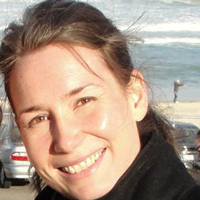 Nina Kaludercic is a Researcher at the Neuroscience Institute, National Research Council of Italy, in Padova, Italy. She obtained her PhD in Biochemistry and Biotechnologies from the University of Padova in 2008. She did her postdoc at Johns Hopkins University in Baltimore Nina where she was awarded the postdoctoral fellowship from the American Heart Association. The research carried out there led to the discovery of monoamine oxidase as a major mitochondrial source of oxidative stress and a key mediator of cardiac damage in the failing heart. Currently, Nina’s main research interests include mitochondrial sources of oxidative stress and modulation of mitochondrial function in relation to cardiac physiology and disease.
Nina Kaludercic is a Researcher at the Neuroscience Institute, National Research Council of Italy, in Padova, Italy. She obtained her PhD in Biochemistry and Biotechnologies from the University of Padova in 2008. She did her postdoc at Johns Hopkins University in Baltimore Nina where she was awarded the postdoctoral fellowship from the American Heart Association. The research carried out there led to the discovery of monoamine oxidase as a major mitochondrial source of oxidative stress and a key mediator of cardiac damage in the failing heart. Currently, Nina’s main research interests include mitochondrial sources of oxidative stress and modulation of mitochondrial function in relation to cardiac physiology and disease.
 Nina Kaludercic is a Researcher at the Neuroscience Institute, National Research Council of Italy, in Padova, Italy. She obtained her PhD in Biochemistry and Biotechnologies from the University of Padova in 2008. She did her postdoc at Johns Hopkins University in Baltimore Nina where she was awarded the postdoctoral fellowship from the American Heart Association. The research carried out there led to the discovery of monoamine oxidase as a major mitochondrial source of oxidative stress and a key mediator of cardiac damage in the failing heart. Currently, Nina’s main research interests include mitochondrial sources of oxidative stress and modulation of mitochondrial function in relation to cardiac physiology and disease.
Nina Kaludercic is a Researcher at the Neuroscience Institute, National Research Council of Italy, in Padova, Italy. She obtained her PhD in Biochemistry and Biotechnologies from the University of Padova in 2008. She did her postdoc at Johns Hopkins University in Baltimore Nina where she was awarded the postdoctoral fellowship from the American Heart Association. The research carried out there led to the discovery of monoamine oxidase as a major mitochondrial source of oxidative stress and a key mediator of cardiac damage in the failing heart. Currently, Nina’s main research interests include mitochondrial sources of oxidative stress and modulation of mitochondrial function in relation to cardiac physiology and disease.
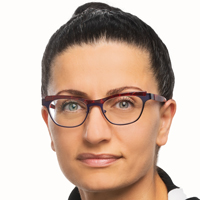 Zamaneh (Zam) Kassiri is a full professor at University of Alberta (Edmonton, Canada). She completed her BSc, MSc and PhD at University of Toronto (Toronto, Canada) studying cardiac muscle physiology and electrophysiology; followed by post-doctoral training at Ontario Cancer Institute where she studied matrix biology and cardiac extracellular matrix remodeling. Dr. Kassiri’s research focuses on understanding the mechanism of structural (and functional) remodeling of the cardiovascular system in different pathologies. Her team uses genetically modified mice and models of heart disease (myocardial infarction, pressure overload) and vascular diseases (hypertension, thoracic and abdominal aortic aneurysm). Dr. Kassiri’s research has aimed to unravel the role of matrix metalloproteinases (MMPs, ADAMs, ADAM-TSs) and inhibitors (TIMPs) in these pathologies by taking a comprehensive approach that encompasses whole animal, isolated organ, primary cell cultures and molecular biochemical analyses. Dr. Kassiri is a member of the Royal Society of Canada: The College of New Scholars, Artists and Scientists, and holds a Canada Research Chair (Tier 1) in Cardiovascular Extracellular Matrix. For more information on Dr. Kassiri’s lab, please visit https://www.kassirilab.com.
Zamaneh (Zam) Kassiri is a full professor at University of Alberta (Edmonton, Canada). She completed her BSc, MSc and PhD at University of Toronto (Toronto, Canada) studying cardiac muscle physiology and electrophysiology; followed by post-doctoral training at Ontario Cancer Institute where she studied matrix biology and cardiac extracellular matrix remodeling. Dr. Kassiri’s research focuses on understanding the mechanism of structural (and functional) remodeling of the cardiovascular system in different pathologies. Her team uses genetically modified mice and models of heart disease (myocardial infarction, pressure overload) and vascular diseases (hypertension, thoracic and abdominal aortic aneurysm). Dr. Kassiri’s research has aimed to unravel the role of matrix metalloproteinases (MMPs, ADAMs, ADAM-TSs) and inhibitors (TIMPs) in these pathologies by taking a comprehensive approach that encompasses whole animal, isolated organ, primary cell cultures and molecular biochemical analyses. Dr. Kassiri is a member of the Royal Society of Canada: The College of New Scholars, Artists and Scientists, and holds a Canada Research Chair (Tier 1) in Cardiovascular Extracellular Matrix. For more information on Dr. Kassiri’s lab, please visit https://www.kassirilab.com.
 Zamaneh (Zam) Kassiri is a full professor at University of Alberta (Edmonton, Canada). She completed her BSc, MSc and PhD at University of Toronto (Toronto, Canada) studying cardiac muscle physiology and electrophysiology; followed by post-doctoral training at Ontario Cancer Institute where she studied matrix biology and cardiac extracellular matrix remodeling. Dr. Kassiri’s research focuses on understanding the mechanism of structural (and functional) remodeling of the cardiovascular system in different pathologies. Her team uses genetically modified mice and models of heart disease (myocardial infarction, pressure overload) and vascular diseases (hypertension, thoracic and abdominal aortic aneurysm). Dr. Kassiri’s research has aimed to unravel the role of matrix metalloproteinases (MMPs, ADAMs, ADAM-TSs) and inhibitors (TIMPs) in these pathologies by taking a comprehensive approach that encompasses whole animal, isolated organ, primary cell cultures and molecular biochemical analyses. Dr. Kassiri is a member of the Royal Society of Canada: The College of New Scholars, Artists and Scientists, and holds a Canada Research Chair (Tier 1) in Cardiovascular Extracellular Matrix. For more information on Dr. Kassiri’s lab, please visit https://www.kassirilab.com.
Zamaneh (Zam) Kassiri is a full professor at University of Alberta (Edmonton, Canada). She completed her BSc, MSc and PhD at University of Toronto (Toronto, Canada) studying cardiac muscle physiology and electrophysiology; followed by post-doctoral training at Ontario Cancer Institute where she studied matrix biology and cardiac extracellular matrix remodeling. Dr. Kassiri’s research focuses on understanding the mechanism of structural (and functional) remodeling of the cardiovascular system in different pathologies. Her team uses genetically modified mice and models of heart disease (myocardial infarction, pressure overload) and vascular diseases (hypertension, thoracic and abdominal aortic aneurysm). Dr. Kassiri’s research has aimed to unravel the role of matrix metalloproteinases (MMPs, ADAMs, ADAM-TSs) and inhibitors (TIMPs) in these pathologies by taking a comprehensive approach that encompasses whole animal, isolated organ, primary cell cultures and molecular biochemical analyses. Dr. Kassiri is a member of the Royal Society of Canada: The College of New Scholars, Artists and Scientists, and holds a Canada Research Chair (Tier 1) in Cardiovascular Extracellular Matrix. For more information on Dr. Kassiri’s lab, please visit https://www.kassirilab.com.
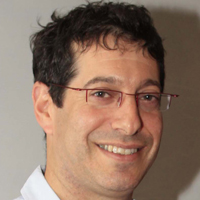 Izhak Kehat MD, PhD received his MD (1997, Suma cum laude) from the Faculty of Medicine, Technion –Israel Institute of Technology, and his PhD (2005) at the Faculty of Medicine at the Technion under the supervision of Prof. Lior Gepstein, deriving cardiomyocytes from human embryonic stem cells. He performed a residency in Internal Medicine (2006) at the Rambam Medical Center, Haifa, Israel and Fellowship in Cardiology at the Rambam Medical Center (2011, in excellence). His post-doctoral studies were done under the supervision of Prof. Jeffery Molkentin at Cincinnati Children’s Hospital medical Center (CCHMC, USA) (2006-2010) where he studied the signalling and epigenetic control of cardiac hypertrophy. On his return to Israel he finished a fellowship in clinical Echocardiography, under the supervision of Prof. Yoram Agmon at Rambam Medical Centre, department of cardiology.
He is currently an associate professor and the head of the Dept. of Physiology, biophysics, and system biology, at the Ruth and Bruce Rappaport Faculty of Medicine, Technion – Israel Institute of Technology, and a senior cardiologist at the Rambam Medical canter (Haifa, Israel) echocardiography unit. The kehat lab is focused on the systemic identification of the transcriptional, translational, and epigenetic control of the cardiovascular system, with emphasis on the maintenance of the sarcomere at rest, in cardiac hypertrophy, and in heart failure. Izhak Is a member of the ESC and the AHA, was the secretary of Israel Heart association myocardium and pericardium working group, and is the treasurer of the Israeli sub-section of the ISHR.
Izhak Kehat MD, PhD received his MD (1997, Suma cum laude) from the Faculty of Medicine, Technion –Israel Institute of Technology, and his PhD (2005) at the Faculty of Medicine at the Technion under the supervision of Prof. Lior Gepstein, deriving cardiomyocytes from human embryonic stem cells. He performed a residency in Internal Medicine (2006) at the Rambam Medical Center, Haifa, Israel and Fellowship in Cardiology at the Rambam Medical Center (2011, in excellence). His post-doctoral studies were done under the supervision of Prof. Jeffery Molkentin at Cincinnati Children’s Hospital medical Center (CCHMC, USA) (2006-2010) where he studied the signalling and epigenetic control of cardiac hypertrophy. On his return to Israel he finished a fellowship in clinical Echocardiography, under the supervision of Prof. Yoram Agmon at Rambam Medical Centre, department of cardiology.
He is currently an associate professor and the head of the Dept. of Physiology, biophysics, and system biology, at the Ruth and Bruce Rappaport Faculty of Medicine, Technion – Israel Institute of Technology, and a senior cardiologist at the Rambam Medical canter (Haifa, Israel) echocardiography unit. The kehat lab is focused on the systemic identification of the transcriptional, translational, and epigenetic control of the cardiovascular system, with emphasis on the maintenance of the sarcomere at rest, in cardiac hypertrophy, and in heart failure. Izhak Is a member of the ESC and the AHA, was the secretary of Israel Heart association myocardium and pericardium working group, and is the treasurer of the Israeli sub-section of the ISHR.
 Izhak Kehat MD, PhD received his MD (1997, Suma cum laude) from the Faculty of Medicine, Technion –Israel Institute of Technology, and his PhD (2005) at the Faculty of Medicine at the Technion under the supervision of Prof. Lior Gepstein, deriving cardiomyocytes from human embryonic stem cells. He performed a residency in Internal Medicine (2006) at the Rambam Medical Center, Haifa, Israel and Fellowship in Cardiology at the Rambam Medical Center (2011, in excellence). His post-doctoral studies were done under the supervision of Prof. Jeffery Molkentin at Cincinnati Children’s Hospital medical Center (CCHMC, USA) (2006-2010) where he studied the signalling and epigenetic control of cardiac hypertrophy. On his return to Israel he finished a fellowship in clinical Echocardiography, under the supervision of Prof. Yoram Agmon at Rambam Medical Centre, department of cardiology.
He is currently an associate professor and the head of the Dept. of Physiology, biophysics, and system biology, at the Ruth and Bruce Rappaport Faculty of Medicine, Technion – Israel Institute of Technology, and a senior cardiologist at the Rambam Medical canter (Haifa, Israel) echocardiography unit. The kehat lab is focused on the systemic identification of the transcriptional, translational, and epigenetic control of the cardiovascular system, with emphasis on the maintenance of the sarcomere at rest, in cardiac hypertrophy, and in heart failure. Izhak Is a member of the ESC and the AHA, was the secretary of Israel Heart association myocardium and pericardium working group, and is the treasurer of the Israeli sub-section of the ISHR.
Izhak Kehat MD, PhD received his MD (1997, Suma cum laude) from the Faculty of Medicine, Technion –Israel Institute of Technology, and his PhD (2005) at the Faculty of Medicine at the Technion under the supervision of Prof. Lior Gepstein, deriving cardiomyocytes from human embryonic stem cells. He performed a residency in Internal Medicine (2006) at the Rambam Medical Center, Haifa, Israel and Fellowship in Cardiology at the Rambam Medical Center (2011, in excellence). His post-doctoral studies were done under the supervision of Prof. Jeffery Molkentin at Cincinnati Children’s Hospital medical Center (CCHMC, USA) (2006-2010) where he studied the signalling and epigenetic control of cardiac hypertrophy. On his return to Israel he finished a fellowship in clinical Echocardiography, under the supervision of Prof. Yoram Agmon at Rambam Medical Centre, department of cardiology.
He is currently an associate professor and the head of the Dept. of Physiology, biophysics, and system biology, at the Ruth and Bruce Rappaport Faculty of Medicine, Technion – Israel Institute of Technology, and a senior cardiologist at the Rambam Medical canter (Haifa, Israel) echocardiography unit. The kehat lab is focused on the systemic identification of the transcriptional, translational, and epigenetic control of the cardiovascular system, with emphasis on the maintenance of the sarcomere at rest, in cardiac hypertrophy, and in heart failure. Izhak Is a member of the ESC and the AHA, was the secretary of Israel Heart association myocardium and pericardium working group, and is the treasurer of the Israeli sub-section of the ISHR.
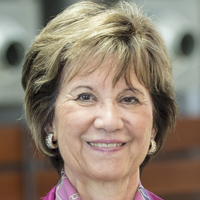 Dr. Kranias’ research focusses on molecular mechanisms regulating cardiac function and survival. She received her Ph.D. degree from Northwestern University and pursued postdoctoral training at Northwestern University Medical School. In 1978, she started her faculty career at the University of Cincinnati Medical Center.
Dr. Kranias’ research focusses on molecular mechanisms regulating cardiac function and survival. She received her Ph.D. degree from Northwestern University and pursued postdoctoral training at Northwestern University Medical School. In 1978, she started her faculty career at the University of Cincinnati Medical Center.
Dr. Kranias’ research program has provided fundamental insights into the regulatory mechanisms and signaling pathways underlying calcium homeostasis in cardiac physiology and pathophysiology with special emphasis in heart failure. Dr. Kranias has extended her basic research findings to the clinical arena and has elucidated the functional significance of Ca-handling in the deteriorated function of human failing hearts. She has also identified human mutations in calcium cycling genes and showed that these may predispose to arrhythmias and heart failure. These findings have been published in over 255 articles and 80 reviews. The overall goal of her program is to build a comprehensive understanding on the role of calcium cycling in cardiac contractility and cell survival.
Dr. Kranias has organized, chaired and spoke at numerous National and International meetings. She has also been a dedicated mentor of over 70 Ph.D. students and post-doctoral fellows. She has received many National and International awards and honors. She is an AHA Distinguished Scientist, received the 2019 AHA Basic Research Prize and was elected as a corresponding member of the Athens Academy. Dr. Kranias has also served on the Councils of the Biophysical Society and the ISHR (International and NA), the AHA Research Committee, and as Associate Editor or Editorial Board member of several journals as well as reviewer on numerous panels and committees.
 Dr. Kranias’ research focusses on molecular mechanisms regulating cardiac function and survival. She received her Ph.D. degree from Northwestern University and pursued postdoctoral training at Northwestern University Medical School. In 1978, she started her faculty career at the University of Cincinnati Medical Center.
Dr. Kranias’ research focusses on molecular mechanisms regulating cardiac function and survival. She received her Ph.D. degree from Northwestern University and pursued postdoctoral training at Northwestern University Medical School. In 1978, she started her faculty career at the University of Cincinnati Medical Center.
Dr. Kranias’ research program has provided fundamental insights into the regulatory mechanisms and signaling pathways underlying calcium homeostasis in cardiac physiology and pathophysiology with special emphasis in heart failure. Dr. Kranias has extended her basic research findings to the clinical arena and has elucidated the functional significance of Ca-handling in the deteriorated function of human failing hearts. She has also identified human mutations in calcium cycling genes and showed that these may predispose to arrhythmias and heart failure. These findings have been published in over 255 articles and 80 reviews. The overall goal of her program is to build a comprehensive understanding on the role of calcium cycling in cardiac contractility and cell survival.
Dr. Kranias has organized, chaired and spoke at numerous National and International meetings. She has also been a dedicated mentor of over 70 Ph.D. students and post-doctoral fellows. She has received many National and International awards and honors. She is an AHA Distinguished Scientist, received the 2019 AHA Basic Research Prize and was elected as a corresponding member of the Athens Academy. Dr. Kranias has also served on the Councils of the Biophysical Society and the ISHR (International and NA), the AHA Research Committee, and as Associate Editor or Editorial Board member of several journals as well as reviewer on numerous panels and committees.
 During my thesis, I was trained as a cellular electrophysiologist studying the modulation of voltage gated calcium channels by calcium and phosphorylation in a physiological context (endogeneous channels expressed in cardiomyocytes) and when reconstituted in heterologuous systems. To further my knowledge on the structure function relationship of the voltage gated calcium channels, I held a post-doctoral position in the UK at the University College London where I joined in 2002 the Professor Annette Dolphin's group at the Pharmacology department of UCL. There I studied the G protein modulation of neuronal calcium channels. I went back to France in 2005, joining Rodolphe Fischmeister's group in Paris to study the role of phosphodiesterases (PDEs) in heart, enzymes that tighly control cyclic nucleotides (CN) levels in cardiomyocytes to regulate among other key proteins involved in the excitation-contraction coupling, the L-type calcium channel. In 2008, I took up a lectureship position at the faculty of Pharmacy of the Paris Sud university and my work since then, is dedicated to the understanding of the intracellular organization of CN pathways, which is highly compartmentalized by PDEs, and the changes occurring in pathophysiological situations. Our general objective is to understand the molecular mechanisms responsible for the homeostasis of these second messengers, the functional consequences for the cardiac function and the remodelling of CN pathways occuring in heart failure to propose new therapeutic strategies.
During my thesis, I was trained as a cellular electrophysiologist studying the modulation of voltage gated calcium channels by calcium and phosphorylation in a physiological context (endogeneous channels expressed in cardiomyocytes) and when reconstituted in heterologuous systems. To further my knowledge on the structure function relationship of the voltage gated calcium channels, I held a post-doctoral position in the UK at the University College London where I joined in 2002 the Professor Annette Dolphin's group at the Pharmacology department of UCL. There I studied the G protein modulation of neuronal calcium channels. I went back to France in 2005, joining Rodolphe Fischmeister's group in Paris to study the role of phosphodiesterases (PDEs) in heart, enzymes that tighly control cyclic nucleotides (CN) levels in cardiomyocytes to regulate among other key proteins involved in the excitation-contraction coupling, the L-type calcium channel. In 2008, I took up a lectureship position at the faculty of Pharmacy of the Paris Sud university and my work since then, is dedicated to the understanding of the intracellular organization of CN pathways, which is highly compartmentalized by PDEs, and the changes occurring in pathophysiological situations. Our general objective is to understand the molecular mechanisms responsible for the homeostasis of these second messengers, the functional consequences for the cardiac function and the remodelling of CN pathways occuring in heart failure to propose new therapeutic strategies.
 During my thesis, I was trained as a cellular electrophysiologist studying the modulation of voltage gated calcium channels by calcium and phosphorylation in a physiological context (endogeneous channels expressed in cardiomyocytes) and when reconstituted in heterologuous systems. To further my knowledge on the structure function relationship of the voltage gated calcium channels, I held a post-doctoral position in the UK at the University College London where I joined in 2002 the Professor Annette Dolphin's group at the Pharmacology department of UCL. There I studied the G protein modulation of neuronal calcium channels. I went back to France in 2005, joining Rodolphe Fischmeister's group in Paris to study the role of phosphodiesterases (PDEs) in heart, enzymes that tighly control cyclic nucleotides (CN) levels in cardiomyocytes to regulate among other key proteins involved in the excitation-contraction coupling, the L-type calcium channel. In 2008, I took up a lectureship position at the faculty of Pharmacy of the Paris Sud university and my work since then, is dedicated to the understanding of the intracellular organization of CN pathways, which is highly compartmentalized by PDEs, and the changes occurring in pathophysiological situations. Our general objective is to understand the molecular mechanisms responsible for the homeostasis of these second messengers, the functional consequences for the cardiac function and the remodelling of CN pathways occuring in heart failure to propose new therapeutic strategies.
During my thesis, I was trained as a cellular electrophysiologist studying the modulation of voltage gated calcium channels by calcium and phosphorylation in a physiological context (endogeneous channels expressed in cardiomyocytes) and when reconstituted in heterologuous systems. To further my knowledge on the structure function relationship of the voltage gated calcium channels, I held a post-doctoral position in the UK at the University College London where I joined in 2002 the Professor Annette Dolphin's group at the Pharmacology department of UCL. There I studied the G protein modulation of neuronal calcium channels. I went back to France in 2005, joining Rodolphe Fischmeister's group in Paris to study the role of phosphodiesterases (PDEs) in heart, enzymes that tighly control cyclic nucleotides (CN) levels in cardiomyocytes to regulate among other key proteins involved in the excitation-contraction coupling, the L-type calcium channel. In 2008, I took up a lectureship position at the faculty of Pharmacy of the Paris Sud university and my work since then, is dedicated to the understanding of the intracellular organization of CN pathways, which is highly compartmentalized by PDEs, and the changes occurring in pathophysiological situations. Our general objective is to understand the molecular mechanisms responsible for the homeostasis of these second messengers, the functional consequences for the cardiac function and the remodelling of CN pathways occuring in heart failure to propose new therapeutic strategies.
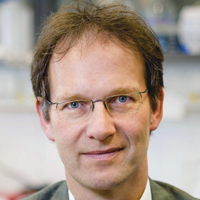 Wolfgang Linke received a Ph.D. from the University of Halle-Wittenberg (Germany) and postdoctoral training at the University of Washington (Seattle, USA). Between 1994 and 2003, he was a Research Assistant Professor at the Institute of Physiology and Pathophysiology, University of Heidelberg (Germany). During this period, he spent sabbaticals at the Mayo Clinic Rochester and Columbia University New York (USA), using a career development award from the German Research Foundation (Heisenberg Fellowship). From 2003 to 2009, he was Professor of Molecular Cell Biology at the University of Muenster (Germany) and from 2009 to 2017, he was appointed Department Chair and Professor for Cardiovascular Physiology at Ruhr University Bochum (Germany). Since 2017, he is Professor and Chair of Physiology and Director of the Institute of Physiology II at University Medicine Muenster. He also holds a professorship in Cardiac Mechanotransduction at the University Heart Center in Goettingen (Germany). His scientific interests include basic and translational research on heart failure and cardiomyopathies, with a focus on cardiomyocyte mechanics and signaling, as well as ultrastructure and maintenance. He is a Fellow of the ISHR, the AHA, and the ESC, and an elected member (Academician) of the Goettingen Academy of Sciences (Germany).
Wolfgang Linke received a Ph.D. from the University of Halle-Wittenberg (Germany) and postdoctoral training at the University of Washington (Seattle, USA). Between 1994 and 2003, he was a Research Assistant Professor at the Institute of Physiology and Pathophysiology, University of Heidelberg (Germany). During this period, he spent sabbaticals at the Mayo Clinic Rochester and Columbia University New York (USA), using a career development award from the German Research Foundation (Heisenberg Fellowship). From 2003 to 2009, he was Professor of Molecular Cell Biology at the University of Muenster (Germany) and from 2009 to 2017, he was appointed Department Chair and Professor for Cardiovascular Physiology at Ruhr University Bochum (Germany). Since 2017, he is Professor and Chair of Physiology and Director of the Institute of Physiology II at University Medicine Muenster. He also holds a professorship in Cardiac Mechanotransduction at the University Heart Center in Goettingen (Germany). His scientific interests include basic and translational research on heart failure and cardiomyopathies, with a focus on cardiomyocyte mechanics and signaling, as well as ultrastructure and maintenance. He is a Fellow of the ISHR, the AHA, and the ESC, and an elected member (Academician) of the Goettingen Academy of Sciences (Germany).
 Wolfgang Linke received a Ph.D. from the University of Halle-Wittenberg (Germany) and postdoctoral training at the University of Washington (Seattle, USA). Between 1994 and 2003, he was a Research Assistant Professor at the Institute of Physiology and Pathophysiology, University of Heidelberg (Germany). During this period, he spent sabbaticals at the Mayo Clinic Rochester and Columbia University New York (USA), using a career development award from the German Research Foundation (Heisenberg Fellowship). From 2003 to 2009, he was Professor of Molecular Cell Biology at the University of Muenster (Germany) and from 2009 to 2017, he was appointed Department Chair and Professor for Cardiovascular Physiology at Ruhr University Bochum (Germany). Since 2017, he is Professor and Chair of Physiology and Director of the Institute of Physiology II at University Medicine Muenster. He also holds a professorship in Cardiac Mechanotransduction at the University Heart Center in Goettingen (Germany). His scientific interests include basic and translational research on heart failure and cardiomyopathies, with a focus on cardiomyocyte mechanics and signaling, as well as ultrastructure and maintenance. He is a Fellow of the ISHR, the AHA, and the ESC, and an elected member (Academician) of the Goettingen Academy of Sciences (Germany).
Wolfgang Linke received a Ph.D. from the University of Halle-Wittenberg (Germany) and postdoctoral training at the University of Washington (Seattle, USA). Between 1994 and 2003, he was a Research Assistant Professor at the Institute of Physiology and Pathophysiology, University of Heidelberg (Germany). During this period, he spent sabbaticals at the Mayo Clinic Rochester and Columbia University New York (USA), using a career development award from the German Research Foundation (Heisenberg Fellowship). From 2003 to 2009, he was Professor of Molecular Cell Biology at the University of Muenster (Germany) and from 2009 to 2017, he was appointed Department Chair and Professor for Cardiovascular Physiology at Ruhr University Bochum (Germany). Since 2017, he is Professor and Chair of Physiology and Director of the Institute of Physiology II at University Medicine Muenster. He also holds a professorship in Cardiac Mechanotransduction at the University Heart Center in Goettingen (Germany). His scientific interests include basic and translational research on heart failure and cardiomyopathies, with a focus on cardiomyocyte mechanics and signaling, as well as ultrastructure and maintenance. He is a Fellow of the ISHR, the AHA, and the ESC, and an elected member (Academician) of the Goettingen Academy of Sciences (Germany).
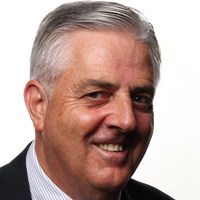 Dr. Gary D. Lopaschuk is a Distinguished University Professor of Pediatrics at the University of Alberta, Edmonton. His research focuses on the regulation of fatty acid oxidation in the heart, and the mechanism by which high rates of fatty acid oxidation contribute to heart disease and heart failure. He is also examining how alterations in fatty acid metabolism contribute to cardiovascular disease in the diabetic. At a molecular level he has characterized a number of key enzymes important in the regulation of cardiac fatty acid oxidation. He is also developing a number of therapeutic strategies that involve optimizing energy metabolism in the heart that can be used to prevent the development of heart disease, and that can also be used to treat heart failure. His research has resulted in the publication of over 440 original research articles, and he has been recognized by awards such as the Canadian Cardiovascular Research Achievement Award, the International Academy of Cardiovascular Sciences Research Achievement Award, and a Fellowship of the Royal Society of Canada. He serves on a number of journal editorial boards, including Circulation Research, Journal of Clinical Investigation, American Journal of Physiology, Cardiovascular Research, Journal of Molecular and Cellular Cardiology, Canadian Journal of Physiology and Pharmacology, Heart and Metabolism, and Cardiovascular Drugs and Therapy.
Dr. Gary D. Lopaschuk is a Distinguished University Professor of Pediatrics at the University of Alberta, Edmonton. His research focuses on the regulation of fatty acid oxidation in the heart, and the mechanism by which high rates of fatty acid oxidation contribute to heart disease and heart failure. He is also examining how alterations in fatty acid metabolism contribute to cardiovascular disease in the diabetic. At a molecular level he has characterized a number of key enzymes important in the regulation of cardiac fatty acid oxidation. He is also developing a number of therapeutic strategies that involve optimizing energy metabolism in the heart that can be used to prevent the development of heart disease, and that can also be used to treat heart failure. His research has resulted in the publication of over 440 original research articles, and he has been recognized by awards such as the Canadian Cardiovascular Research Achievement Award, the International Academy of Cardiovascular Sciences Research Achievement Award, and a Fellowship of the Royal Society of Canada. He serves on a number of journal editorial boards, including Circulation Research, Journal of Clinical Investigation, American Journal of Physiology, Cardiovascular Research, Journal of Molecular and Cellular Cardiology, Canadian Journal of Physiology and Pharmacology, Heart and Metabolism, and Cardiovascular Drugs and Therapy.
 Dr. Gary D. Lopaschuk is a Distinguished University Professor of Pediatrics at the University of Alberta, Edmonton. His research focuses on the regulation of fatty acid oxidation in the heart, and the mechanism by which high rates of fatty acid oxidation contribute to heart disease and heart failure. He is also examining how alterations in fatty acid metabolism contribute to cardiovascular disease in the diabetic. At a molecular level he has characterized a number of key enzymes important in the regulation of cardiac fatty acid oxidation. He is also developing a number of therapeutic strategies that involve optimizing energy metabolism in the heart that can be used to prevent the development of heart disease, and that can also be used to treat heart failure. His research has resulted in the publication of over 440 original research articles, and he has been recognized by awards such as the Canadian Cardiovascular Research Achievement Award, the International Academy of Cardiovascular Sciences Research Achievement Award, and a Fellowship of the Royal Society of Canada. He serves on a number of journal editorial boards, including Circulation Research, Journal of Clinical Investigation, American Journal of Physiology, Cardiovascular Research, Journal of Molecular and Cellular Cardiology, Canadian Journal of Physiology and Pharmacology, Heart and Metabolism, and Cardiovascular Drugs and Therapy.
Dr. Gary D. Lopaschuk is a Distinguished University Professor of Pediatrics at the University of Alberta, Edmonton. His research focuses on the regulation of fatty acid oxidation in the heart, and the mechanism by which high rates of fatty acid oxidation contribute to heart disease and heart failure. He is also examining how alterations in fatty acid metabolism contribute to cardiovascular disease in the diabetic. At a molecular level he has characterized a number of key enzymes important in the regulation of cardiac fatty acid oxidation. He is also developing a number of therapeutic strategies that involve optimizing energy metabolism in the heart that can be used to prevent the development of heart disease, and that can also be used to treat heart failure. His research has resulted in the publication of over 440 original research articles, and he has been recognized by awards such as the Canadian Cardiovascular Research Achievement Award, the International Academy of Cardiovascular Sciences Research Achievement Award, and a Fellowship of the Royal Society of Canada. He serves on a number of journal editorial boards, including Circulation Research, Journal of Clinical Investigation, American Journal of Physiology, Cardiovascular Research, Journal of Molecular and Cellular Cardiology, Canadian Journal of Physiology and Pharmacology, Heart and Metabolism, and Cardiovascular Drugs and Therapy.
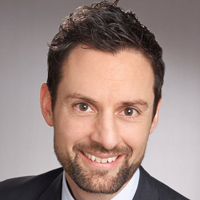 Christoph Maack received his MD at the University of Cologne (Germany) in 2000. Between 2000 and 2017, he worked at the Department of Cardiology at the University of the Saarland in Homburg, Germany, and from 2002-2005 as a post-doctoral research assistant in the lab of Brian O’Rourke at the Department of Cardiology at Johns Hopkins University in Baltimore, MD, US. In 2017, he became Director of the Comprehensive Heart Failure Center (CHFC) at the University Clinic in Würzburg, Germany, where he also chairs the Department of Translational Science. His work focuses on cellular defects in chronic heart failure, with a special emphasis on the mechanisms of contractile, mitochondrial and metabolic dysfunction in heart failure.
For his work, Maack received several awards, such as the Albert-Fraenkel- (2014) and the Arthur-Weber Awards (2015) of the German Cardiac Society, respectively. He served on the Board of the Heart Failure Association (HFA) of the European Society of Cardiology (ESC) from 2010-2016, where he served as the Coordinator of the Translational Research Committee (2011-2014) and the Chair of the Basic Science section (2014-2016). In 2018, he entered the Council of the International Society of Heart Research (ISHR), European Section (ES).
Christoph Maack received his MD at the University of Cologne (Germany) in 2000. Between 2000 and 2017, he worked at the Department of Cardiology at the University of the Saarland in Homburg, Germany, and from 2002-2005 as a post-doctoral research assistant in the lab of Brian O’Rourke at the Department of Cardiology at Johns Hopkins University in Baltimore, MD, US. In 2017, he became Director of the Comprehensive Heart Failure Center (CHFC) at the University Clinic in Würzburg, Germany, where he also chairs the Department of Translational Science. His work focuses on cellular defects in chronic heart failure, with a special emphasis on the mechanisms of contractile, mitochondrial and metabolic dysfunction in heart failure.
For his work, Maack received several awards, such as the Albert-Fraenkel- (2014) and the Arthur-Weber Awards (2015) of the German Cardiac Society, respectively. He served on the Board of the Heart Failure Association (HFA) of the European Society of Cardiology (ESC) from 2010-2016, where he served as the Coordinator of the Translational Research Committee (2011-2014) and the Chair of the Basic Science section (2014-2016). In 2018, he entered the Council of the International Society of Heart Research (ISHR), European Section (ES).
 Christoph Maack received his MD at the University of Cologne (Germany) in 2000. Between 2000 and 2017, he worked at the Department of Cardiology at the University of the Saarland in Homburg, Germany, and from 2002-2005 as a post-doctoral research assistant in the lab of Brian O’Rourke at the Department of Cardiology at Johns Hopkins University in Baltimore, MD, US. In 2017, he became Director of the Comprehensive Heart Failure Center (CHFC) at the University Clinic in Würzburg, Germany, where he also chairs the Department of Translational Science. His work focuses on cellular defects in chronic heart failure, with a special emphasis on the mechanisms of contractile, mitochondrial and metabolic dysfunction in heart failure.
For his work, Maack received several awards, such as the Albert-Fraenkel- (2014) and the Arthur-Weber Awards (2015) of the German Cardiac Society, respectively. He served on the Board of the Heart Failure Association (HFA) of the European Society of Cardiology (ESC) from 2010-2016, where he served as the Coordinator of the Translational Research Committee (2011-2014) and the Chair of the Basic Science section (2014-2016). In 2018, he entered the Council of the International Society of Heart Research (ISHR), European Section (ES).
Christoph Maack received his MD at the University of Cologne (Germany) in 2000. Between 2000 and 2017, he worked at the Department of Cardiology at the University of the Saarland in Homburg, Germany, and from 2002-2005 as a post-doctoral research assistant in the lab of Brian O’Rourke at the Department of Cardiology at Johns Hopkins University in Baltimore, MD, US. In 2017, he became Director of the Comprehensive Heart Failure Center (CHFC) at the University Clinic in Würzburg, Germany, where he also chairs the Department of Translational Science. His work focuses on cellular defects in chronic heart failure, with a special emphasis on the mechanisms of contractile, mitochondrial and metabolic dysfunction in heart failure.
For his work, Maack received several awards, such as the Albert-Fraenkel- (2014) and the Arthur-Weber Awards (2015) of the German Cardiac Society, respectively. He served on the Board of the Heart Failure Association (HFA) of the European Society of Cardiology (ESC) from 2010-2016, where he served as the Coordinator of the Translational Research Committee (2011-2014) and the Chair of the Basic Science section (2014-2016). In 2018, he entered the Council of the International Society of Heart Research (ISHR), European Section (ES).
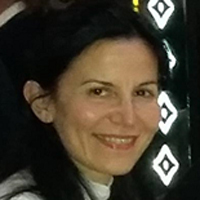 Rosalinda Madonna is Professor in Cardiology, University of Pisa - Italy, Doctor Honoris Causa at Semmelweis University, Budapest - Hungary, and Adjunct Assistant Professor in Cardiology, Department of Internal Medicine, University of Texas Medical School in Houston, TX. She received her MD in Medicine and Surgery, PhD in Biotechnologies and Biosciences and Cardiology Specialization at “G. D’Annunzio” University in Chieti, Italy. She worked as Researcher Fellow and then as Research Scientist at Texas Heart Institute in Houston - Texas, at Center for Cardiovascular Biology and Atherosclerosis Research at University of Texas Medical School in Houston and at the Institute of Molecular Cardiology, University of Louisville in Kentucky. She has authored 148 papers and 20 book chapters, with Hirsch h-index 28 and 4300 citations. She is President Elect of the European Society of Cardiology Working Group in Cellular Biology of the Heart, and past Councilor of the Italian Society of Cardiovascular Research (SIRC). Her research interests are atherosclerosis, stem cells and regenerative medicine, and lastly antineoplastic drug-induced vascular and cardiotoxicity.
Rosalinda Madonna is Professor in Cardiology, University of Pisa - Italy, Doctor Honoris Causa at Semmelweis University, Budapest - Hungary, and Adjunct Assistant Professor in Cardiology, Department of Internal Medicine, University of Texas Medical School in Houston, TX. She received her MD in Medicine and Surgery, PhD in Biotechnologies and Biosciences and Cardiology Specialization at “G. D’Annunzio” University in Chieti, Italy. She worked as Researcher Fellow and then as Research Scientist at Texas Heart Institute in Houston - Texas, at Center for Cardiovascular Biology and Atherosclerosis Research at University of Texas Medical School in Houston and at the Institute of Molecular Cardiology, University of Louisville in Kentucky. She has authored 148 papers and 20 book chapters, with Hirsch h-index 28 and 4300 citations. She is President Elect of the European Society of Cardiology Working Group in Cellular Biology of the Heart, and past Councilor of the Italian Society of Cardiovascular Research (SIRC). Her research interests are atherosclerosis, stem cells and regenerative medicine, and lastly antineoplastic drug-induced vascular and cardiotoxicity.
In addition to clinical work, Rosalinda Madonna has pioneered genetic engineering approaches to improve the efficiency of cell therapies in animal models of cardiovascular diseases, with specific focus on telomerase reverse transcriptase (TERT) and myocardin. She has shown the regenerative and reparative effects of adipose tissue-derived adult mesenchymal stem cells and their secretome rejuvenated by delivery of TERT and myocardin genes in mouse models of acute myocardial infarction and hindlimb ischemia. Her discoveries led to the successful introduction of combined cell and genetic engineering therapies for the treatment of age-related cardiovascular disease.
 Rosalinda Madonna is Professor in Cardiology, University of Pisa - Italy, Doctor Honoris Causa at Semmelweis University, Budapest - Hungary, and Adjunct Assistant Professor in Cardiology, Department of Internal Medicine, University of Texas Medical School in Houston, TX. She received her MD in Medicine and Surgery, PhD in Biotechnologies and Biosciences and Cardiology Specialization at “G. D’Annunzio” University in Chieti, Italy. She worked as Researcher Fellow and then as Research Scientist at Texas Heart Institute in Houston - Texas, at Center for Cardiovascular Biology and Atherosclerosis Research at University of Texas Medical School in Houston and at the Institute of Molecular Cardiology, University of Louisville in Kentucky. She has authored 148 papers and 20 book chapters, with Hirsch h-index 28 and 4300 citations. She is President Elect of the European Society of Cardiology Working Group in Cellular Biology of the Heart, and past Councilor of the Italian Society of Cardiovascular Research (SIRC). Her research interests are atherosclerosis, stem cells and regenerative medicine, and lastly antineoplastic drug-induced vascular and cardiotoxicity.
Rosalinda Madonna is Professor in Cardiology, University of Pisa - Italy, Doctor Honoris Causa at Semmelweis University, Budapest - Hungary, and Adjunct Assistant Professor in Cardiology, Department of Internal Medicine, University of Texas Medical School in Houston, TX. She received her MD in Medicine and Surgery, PhD in Biotechnologies and Biosciences and Cardiology Specialization at “G. D’Annunzio” University in Chieti, Italy. She worked as Researcher Fellow and then as Research Scientist at Texas Heart Institute in Houston - Texas, at Center for Cardiovascular Biology and Atherosclerosis Research at University of Texas Medical School in Houston and at the Institute of Molecular Cardiology, University of Louisville in Kentucky. She has authored 148 papers and 20 book chapters, with Hirsch h-index 28 and 4300 citations. She is President Elect of the European Society of Cardiology Working Group in Cellular Biology of the Heart, and past Councilor of the Italian Society of Cardiovascular Research (SIRC). Her research interests are atherosclerosis, stem cells and regenerative medicine, and lastly antineoplastic drug-induced vascular and cardiotoxicity.
In addition to clinical work, Rosalinda Madonna has pioneered genetic engineering approaches to improve the efficiency of cell therapies in animal models of cardiovascular diseases, with specific focus on telomerase reverse transcriptase (TERT) and myocardin. She has shown the regenerative and reparative effects of adipose tissue-derived adult mesenchymal stem cells and their secretome rejuvenated by delivery of TERT and myocardin genes in mouse models of acute myocardial infarction and hindlimb ischemia. Her discoveries led to the successful introduction of combined cell and genetic engineering therapies for the treatment of age-related cardiovascular disease.
 Initially focusing on vascular biology, my research led to the characterization of a new endothelial cell phenotype during the perfusion of hypoxic tissues (Mazzone et al., Cell, 2009; Leite de Oliveira et al., Cancer Cell, 2012). From there, my team has mainly studied the response of inflammatory cells to hypoxia (or to a cytokine surge) in order to restore blood flow in conditions such as cancer and ischemia (Rolny et al., Cancer Cell, 2011; Casazza et al., Cancer Cell, 2013; Wenes et al., Cell Metabolism, 2016; Takeda et al., Nature, 2011; Hamm et al., EMBO Mol Med, 2013). We have been pioneering the concept that localization of tumor-associated macrophages (TAMs) is determinant for their pro-vascular function, immune phenotype and for the anti-tumor T cell response (Wenes et al., Cell Metabolism, 2016; Bieniasz-Krzywiec et al., Cell Metabolism, 2019; Casazza et al., Cancer Cell, 2013; Casazza & Mazzone, Oncoimmunology, 2014; Palmieri et al., Cell Reports, 2015), and we have shown that some of these inflammatory fingerprints can be exploited for disease detection and follow-up in cancer patients or can be tackled to improve disease response to targeted therapies (Hamm et al., Gut, 2016; Finisguerra et al., Nature, 2015). We have also extended our knowledge on macrophages to the metastatic niche (Celus et al., Cell Reports, 2017). We found that TAMs encountering hypoxic regions heavily adapt their metabolism; consequently they will enter in metabolic competition with other stromal components and this will affect their functions (Wenes et al., Cell Metabolism, 2016). As well, a subset of TAMs characterized by surface markers and a specific metabolism cuffs the lymphatic vessels in the tumors promoting new sprouts and favouring lymphoinvasion and lymphatic metastasis (Bieniasz-Krzywiec et al., Cell Metabolism, 2019). Similarly, cancer cells under glucose or oxygen deprivation overcome cell death by remodeling their metabolic and oxygen-sensing machinery (Di Conza et al., Cell Rep, 2017a; Di Conza et al., Cell Rep, 20017b). My team has also contributed to the study of macrophages a the metastatic niche (Celus et al., Cell Reports, 2015). With all our findings, we made a step forward in the understanding of vessel remodeling, cancer immune evasion and resistance to immunotherapy. The translation and valorization of my work is proven by ongoing clinical trials, two spin-offs, venture capital fundings for the foundation of a third spin-off, a prospective study, numerous industrial collaborations (more than ten), drug screening programs, and a diagnostic kit licensed out to a Belgian company.
Initially focusing on vascular biology, my research led to the characterization of a new endothelial cell phenotype during the perfusion of hypoxic tissues (Mazzone et al., Cell, 2009; Leite de Oliveira et al., Cancer Cell, 2012). From there, my team has mainly studied the response of inflammatory cells to hypoxia (or to a cytokine surge) in order to restore blood flow in conditions such as cancer and ischemia (Rolny et al., Cancer Cell, 2011; Casazza et al., Cancer Cell, 2013; Wenes et al., Cell Metabolism, 2016; Takeda et al., Nature, 2011; Hamm et al., EMBO Mol Med, 2013). We have been pioneering the concept that localization of tumor-associated macrophages (TAMs) is determinant for their pro-vascular function, immune phenotype and for the anti-tumor T cell response (Wenes et al., Cell Metabolism, 2016; Bieniasz-Krzywiec et al., Cell Metabolism, 2019; Casazza et al., Cancer Cell, 2013; Casazza & Mazzone, Oncoimmunology, 2014; Palmieri et al., Cell Reports, 2015), and we have shown that some of these inflammatory fingerprints can be exploited for disease detection and follow-up in cancer patients or can be tackled to improve disease response to targeted therapies (Hamm et al., Gut, 2016; Finisguerra et al., Nature, 2015). We have also extended our knowledge on macrophages to the metastatic niche (Celus et al., Cell Reports, 2017). We found that TAMs encountering hypoxic regions heavily adapt their metabolism; consequently they will enter in metabolic competition with other stromal components and this will affect their functions (Wenes et al., Cell Metabolism, 2016). As well, a subset of TAMs characterized by surface markers and a specific metabolism cuffs the lymphatic vessels in the tumors promoting new sprouts and favouring lymphoinvasion and lymphatic metastasis (Bieniasz-Krzywiec et al., Cell Metabolism, 2019). Similarly, cancer cells under glucose or oxygen deprivation overcome cell death by remodeling their metabolic and oxygen-sensing machinery (Di Conza et al., Cell Rep, 2017a; Di Conza et al., Cell Rep, 20017b). My team has also contributed to the study of macrophages a the metastatic niche (Celus et al., Cell Reports, 2015). With all our findings, we made a step forward in the understanding of vessel remodeling, cancer immune evasion and resistance to immunotherapy. The translation and valorization of my work is proven by ongoing clinical trials, two spin-offs, venture capital fundings for the foundation of a third spin-off, a prospective study, numerous industrial collaborations (more than ten), drug screening programs, and a diagnostic kit licensed out to a Belgian company.
 Initially focusing on vascular biology, my research led to the characterization of a new endothelial cell phenotype during the perfusion of hypoxic tissues (Mazzone et al., Cell, 2009; Leite de Oliveira et al., Cancer Cell, 2012). From there, my team has mainly studied the response of inflammatory cells to hypoxia (or to a cytokine surge) in order to restore blood flow in conditions such as cancer and ischemia (Rolny et al., Cancer Cell, 2011; Casazza et al., Cancer Cell, 2013; Wenes et al., Cell Metabolism, 2016; Takeda et al., Nature, 2011; Hamm et al., EMBO Mol Med, 2013). We have been pioneering the concept that localization of tumor-associated macrophages (TAMs) is determinant for their pro-vascular function, immune phenotype and for the anti-tumor T cell response (Wenes et al., Cell Metabolism, 2016; Bieniasz-Krzywiec et al., Cell Metabolism, 2019; Casazza et al., Cancer Cell, 2013; Casazza & Mazzone, Oncoimmunology, 2014; Palmieri et al., Cell Reports, 2015), and we have shown that some of these inflammatory fingerprints can be exploited for disease detection and follow-up in cancer patients or can be tackled to improve disease response to targeted therapies (Hamm et al., Gut, 2016; Finisguerra et al., Nature, 2015). We have also extended our knowledge on macrophages to the metastatic niche (Celus et al., Cell Reports, 2017). We found that TAMs encountering hypoxic regions heavily adapt their metabolism; consequently they will enter in metabolic competition with other stromal components and this will affect their functions (Wenes et al., Cell Metabolism, 2016). As well, a subset of TAMs characterized by surface markers and a specific metabolism cuffs the lymphatic vessels in the tumors promoting new sprouts and favouring lymphoinvasion and lymphatic metastasis (Bieniasz-Krzywiec et al., Cell Metabolism, 2019). Similarly, cancer cells under glucose or oxygen deprivation overcome cell death by remodeling their metabolic and oxygen-sensing machinery (Di Conza et al., Cell Rep, 2017a; Di Conza et al., Cell Rep, 20017b). My team has also contributed to the study of macrophages a the metastatic niche (Celus et al., Cell Reports, 2015). With all our findings, we made a step forward in the understanding of vessel remodeling, cancer immune evasion and resistance to immunotherapy. The translation and valorization of my work is proven by ongoing clinical trials, two spin-offs, venture capital fundings for the foundation of a third spin-off, a prospective study, numerous industrial collaborations (more than ten), drug screening programs, and a diagnostic kit licensed out to a Belgian company.
Initially focusing on vascular biology, my research led to the characterization of a new endothelial cell phenotype during the perfusion of hypoxic tissues (Mazzone et al., Cell, 2009; Leite de Oliveira et al., Cancer Cell, 2012). From there, my team has mainly studied the response of inflammatory cells to hypoxia (or to a cytokine surge) in order to restore blood flow in conditions such as cancer and ischemia (Rolny et al., Cancer Cell, 2011; Casazza et al., Cancer Cell, 2013; Wenes et al., Cell Metabolism, 2016; Takeda et al., Nature, 2011; Hamm et al., EMBO Mol Med, 2013). We have been pioneering the concept that localization of tumor-associated macrophages (TAMs) is determinant for their pro-vascular function, immune phenotype and for the anti-tumor T cell response (Wenes et al., Cell Metabolism, 2016; Bieniasz-Krzywiec et al., Cell Metabolism, 2019; Casazza et al., Cancer Cell, 2013; Casazza & Mazzone, Oncoimmunology, 2014; Palmieri et al., Cell Reports, 2015), and we have shown that some of these inflammatory fingerprints can be exploited for disease detection and follow-up in cancer patients or can be tackled to improve disease response to targeted therapies (Hamm et al., Gut, 2016; Finisguerra et al., Nature, 2015). We have also extended our knowledge on macrophages to the metastatic niche (Celus et al., Cell Reports, 2017). We found that TAMs encountering hypoxic regions heavily adapt their metabolism; consequently they will enter in metabolic competition with other stromal components and this will affect their functions (Wenes et al., Cell Metabolism, 2016). As well, a subset of TAMs characterized by surface markers and a specific metabolism cuffs the lymphatic vessels in the tumors promoting new sprouts and favouring lymphoinvasion and lymphatic metastasis (Bieniasz-Krzywiec et al., Cell Metabolism, 2019). Similarly, cancer cells under glucose or oxygen deprivation overcome cell death by remodeling their metabolic and oxygen-sensing machinery (Di Conza et al., Cell Rep, 2017a; Di Conza et al., Cell Rep, 20017b). My team has also contributed to the study of macrophages a the metastatic niche (Celus et al., Cell Reports, 2015). With all our findings, we made a step forward in the understanding of vessel remodeling, cancer immune evasion and resistance to immunotherapy. The translation and valorization of my work is proven by ongoing clinical trials, two spin-offs, venture capital fundings for the foundation of a third spin-off, a prospective study, numerous industrial collaborations (more than ten), drug screening programs, and a diagnostic kit licensed out to a Belgian company.
 Wouter Meijers, M.D., Ph.D. obtained his medical degree at Maastricht University, the Netherlands, after which he started his Ph.D. training at the Experimental Cardiology department of the University Medical Center Groningen, the Netherlands. He investigated heart failure biology and the role of biomarkers, with a special interest in galectin-3 and natriuretic peptides in both clinical and pre-clinical studies. During the last years of his PhD trajectory Wouter became specifically interested in the field of cardio-oncology. His most recent research in this field was partially funded by the Netherlands Heart Institute who granted him a Young Talent award. He is currently fellow of the Heart Failure Association of the European Society of Cardiology. Wouter is currently a cardiology fellow at the University Medical Center Groningen, the Netherlands. He trained at Vanderbilt as a cardio-oncology fellow, under supervision of Javid Moslehi, to strengthen his scientific foundation, which he believes will allow him to succeed as a physician-scientist.
Wouter Meijers, M.D., Ph.D. obtained his medical degree at Maastricht University, the Netherlands, after which he started his Ph.D. training at the Experimental Cardiology department of the University Medical Center Groningen, the Netherlands. He investigated heart failure biology and the role of biomarkers, with a special interest in galectin-3 and natriuretic peptides in both clinical and pre-clinical studies. During the last years of his PhD trajectory Wouter became specifically interested in the field of cardio-oncology. His most recent research in this field was partially funded by the Netherlands Heart Institute who granted him a Young Talent award. He is currently fellow of the Heart Failure Association of the European Society of Cardiology. Wouter is currently a cardiology fellow at the University Medical Center Groningen, the Netherlands. He trained at Vanderbilt as a cardio-oncology fellow, under supervision of Javid Moslehi, to strengthen his scientific foundation, which he believes will allow him to succeed as a physician-scientist.
 Wouter Meijers, M.D., Ph.D. obtained his medical degree at Maastricht University, the Netherlands, after which he started his Ph.D. training at the Experimental Cardiology department of the University Medical Center Groningen, the Netherlands. He investigated heart failure biology and the role of biomarkers, with a special interest in galectin-3 and natriuretic peptides in both clinical and pre-clinical studies. During the last years of his PhD trajectory Wouter became specifically interested in the field of cardio-oncology. His most recent research in this field was partially funded by the Netherlands Heart Institute who granted him a Young Talent award. He is currently fellow of the Heart Failure Association of the European Society of Cardiology. Wouter is currently a cardiology fellow at the University Medical Center Groningen, the Netherlands. He trained at Vanderbilt as a cardio-oncology fellow, under supervision of Javid Moslehi, to strengthen his scientific foundation, which he believes will allow him to succeed as a physician-scientist.
Wouter Meijers, M.D., Ph.D. obtained his medical degree at Maastricht University, the Netherlands, after which he started his Ph.D. training at the Experimental Cardiology department of the University Medical Center Groningen, the Netherlands. He investigated heart failure biology and the role of biomarkers, with a special interest in galectin-3 and natriuretic peptides in both clinical and pre-clinical studies. During the last years of his PhD trajectory Wouter became specifically interested in the field of cardio-oncology. His most recent research in this field was partially funded by the Netherlands Heart Institute who granted him a Young Talent award. He is currently fellow of the Heart Failure Association of the European Society of Cardiology. Wouter is currently a cardiology fellow at the University Medical Center Groningen, the Netherlands. He trained at Vanderbilt as a cardio-oncology fellow, under supervision of Javid Moslehi, to strengthen his scientific foundation, which he believes will allow him to succeed as a physician-scientist.
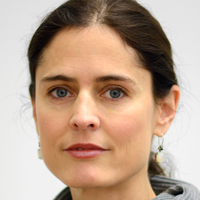 Nadia Mercader studied Biology at the Swiss Federal Institute of Technology, ETH in Zurich Switzerland and performed her PhD in the group of Miguel Torres at the Centro Nacional de Biotecnología (CNB-CSIC, Madrid, Spain) on vertebrate limb development. During that time she also got interested in understanding limb regeneration and pursued a project to unravel if developmental programs are repurposed during adult limb regrowth in the axolotl partially in the laboratory of Elly Tanaka at MPI in Dresden, Germany. In 2004, an EMBO long term fellowship allowed her to join the group of Carl Neumann at EMBL Heidelberg (Germany) to study fin development in the zebrafish model. In 2007 she obtained a Ramon y Cajal contract and group leader position at Centro Nacional de Investigaciones cardiovasculares CNIC (Madrid, Spain) to research cardiac development and regeneration using the zebrafish. At that time, ventricular resection was known to lead to cardiac regeneration without involving scar formation in the zebrafish. Nadia Mercader’s group revealed that zebrafish hearts regenerate even in the presence of a scar. An ERC Starting Grant allowed them to pinpoint the origin and fate of fibroblasts that accumulate in response to an injury and how they influence heart regeneration. Since 2015 Nadia Mercader is a professor at the Institute of Anatomy, University of Bern and visiting professor at CNIC. In 2018, Nadia Mercader, was awarded an ERC Consolidator grant to continue her studies on heart regeneration.
Nadia Mercader studied Biology at the Swiss Federal Institute of Technology, ETH in Zurich Switzerland and performed her PhD in the group of Miguel Torres at the Centro Nacional de Biotecnología (CNB-CSIC, Madrid, Spain) on vertebrate limb development. During that time she also got interested in understanding limb regeneration and pursued a project to unravel if developmental programs are repurposed during adult limb regrowth in the axolotl partially in the laboratory of Elly Tanaka at MPI in Dresden, Germany. In 2004, an EMBO long term fellowship allowed her to join the group of Carl Neumann at EMBL Heidelberg (Germany) to study fin development in the zebrafish model. In 2007 she obtained a Ramon y Cajal contract and group leader position at Centro Nacional de Investigaciones cardiovasculares CNIC (Madrid, Spain) to research cardiac development and regeneration using the zebrafish. At that time, ventricular resection was known to lead to cardiac regeneration without involving scar formation in the zebrafish. Nadia Mercader’s group revealed that zebrafish hearts regenerate even in the presence of a scar. An ERC Starting Grant allowed them to pinpoint the origin and fate of fibroblasts that accumulate in response to an injury and how they influence heart regeneration. Since 2015 Nadia Mercader is a professor at the Institute of Anatomy, University of Bern and visiting professor at CNIC. In 2018, Nadia Mercader, was awarded an ERC Consolidator grant to continue her studies on heart regeneration.
 Nadia Mercader studied Biology at the Swiss Federal Institute of Technology, ETH in Zurich Switzerland and performed her PhD in the group of Miguel Torres at the Centro Nacional de Biotecnología (CNB-CSIC, Madrid, Spain) on vertebrate limb development. During that time she also got interested in understanding limb regeneration and pursued a project to unravel if developmental programs are repurposed during adult limb regrowth in the axolotl partially in the laboratory of Elly Tanaka at MPI in Dresden, Germany. In 2004, an EMBO long term fellowship allowed her to join the group of Carl Neumann at EMBL Heidelberg (Germany) to study fin development in the zebrafish model. In 2007 she obtained a Ramon y Cajal contract and group leader position at Centro Nacional de Investigaciones cardiovasculares CNIC (Madrid, Spain) to research cardiac development and regeneration using the zebrafish. At that time, ventricular resection was known to lead to cardiac regeneration without involving scar formation in the zebrafish. Nadia Mercader’s group revealed that zebrafish hearts regenerate even in the presence of a scar. An ERC Starting Grant allowed them to pinpoint the origin and fate of fibroblasts that accumulate in response to an injury and how they influence heart regeneration. Since 2015 Nadia Mercader is a professor at the Institute of Anatomy, University of Bern and visiting professor at CNIC. In 2018, Nadia Mercader, was awarded an ERC Consolidator grant to continue her studies on heart regeneration.
Nadia Mercader studied Biology at the Swiss Federal Institute of Technology, ETH in Zurich Switzerland and performed her PhD in the group of Miguel Torres at the Centro Nacional de Biotecnología (CNB-CSIC, Madrid, Spain) on vertebrate limb development. During that time she also got interested in understanding limb regeneration and pursued a project to unravel if developmental programs are repurposed during adult limb regrowth in the axolotl partially in the laboratory of Elly Tanaka at MPI in Dresden, Germany. In 2004, an EMBO long term fellowship allowed her to join the group of Carl Neumann at EMBL Heidelberg (Germany) to study fin development in the zebrafish model. In 2007 she obtained a Ramon y Cajal contract and group leader position at Centro Nacional de Investigaciones cardiovasculares CNIC (Madrid, Spain) to research cardiac development and regeneration using the zebrafish. At that time, ventricular resection was known to lead to cardiac regeneration without involving scar formation in the zebrafish. Nadia Mercader’s group revealed that zebrafish hearts regenerate even in the presence of a scar. An ERC Starting Grant allowed them to pinpoint the origin and fate of fibroblasts that accumulate in response to an injury and how they influence heart regeneration. Since 2015 Nadia Mercader is a professor at the Institute of Anatomy, University of Bern and visiting professor at CNIC. In 2018, Nadia Mercader, was awarded an ERC Consolidator grant to continue her studies on heart regeneration.
 Mathias Mericskay is Director of Research at INSERM, leading the team "Energy signaling and cardiovascular pathophysiology" at University Paris-Saclay (INSERM U1180, Châtenay-Malabry, FR). His PhD thesis was on the regulation and function of the desmin gene in the cardiovascular system (Pasteur Institute, Paris, 1995-99) and his post-doctoral training in the field of Wnt (Mount Sinai School of Medicine, New York, 2000-03). Since his recruitment at INSERM, his research focuses on the mechanisms leading to structural and metabolic remodeling of cardiac muscle in different models of heart failure, notably the role of the transcription factor SRF in the regulation of cardiac genes and microRNAs involved in the regulation of contraction, energy transfer and calcium handling. More recently, his work highlighted the dysregulation of NAD coenzyme biosynthetic pathways in the failing heart. His group is specialized in the analysis of energy signaling and mitochondrial function in the heart and leads translational research programs to develop new metabolic therapies for heart failure.
Mathias Mericskay is Director of Research at INSERM, leading the team "Energy signaling and cardiovascular pathophysiology" at University Paris-Saclay (INSERM U1180, Châtenay-Malabry, FR). His PhD thesis was on the regulation and function of the desmin gene in the cardiovascular system (Pasteur Institute, Paris, 1995-99) and his post-doctoral training in the field of Wnt (Mount Sinai School of Medicine, New York, 2000-03). Since his recruitment at INSERM, his research focuses on the mechanisms leading to structural and metabolic remodeling of cardiac muscle in different models of heart failure, notably the role of the transcription factor SRF in the regulation of cardiac genes and microRNAs involved in the regulation of contraction, energy transfer and calcium handling. More recently, his work highlighted the dysregulation of NAD coenzyme biosynthetic pathways in the failing heart. His group is specialized in the analysis of energy signaling and mitochondrial function in the heart and leads translational research programs to develop new metabolic therapies for heart failure.
 Mathias Mericskay is Director of Research at INSERM, leading the team "Energy signaling and cardiovascular pathophysiology" at University Paris-Saclay (INSERM U1180, Châtenay-Malabry, FR). His PhD thesis was on the regulation and function of the desmin gene in the cardiovascular system (Pasteur Institute, Paris, 1995-99) and his post-doctoral training in the field of Wnt (Mount Sinai School of Medicine, New York, 2000-03). Since his recruitment at INSERM, his research focuses on the mechanisms leading to structural and metabolic remodeling of cardiac muscle in different models of heart failure, notably the role of the transcription factor SRF in the regulation of cardiac genes and microRNAs involved in the regulation of contraction, energy transfer and calcium handling. More recently, his work highlighted the dysregulation of NAD coenzyme biosynthetic pathways in the failing heart. His group is specialized in the analysis of energy signaling and mitochondrial function in the heart and leads translational research programs to develop new metabolic therapies for heart failure.
Mathias Mericskay is Director of Research at INSERM, leading the team "Energy signaling and cardiovascular pathophysiology" at University Paris-Saclay (INSERM U1180, Châtenay-Malabry, FR). His PhD thesis was on the regulation and function of the desmin gene in the cardiovascular system (Pasteur Institute, Paris, 1995-99) and his post-doctoral training in the field of Wnt (Mount Sinai School of Medicine, New York, 2000-03). Since his recruitment at INSERM, his research focuses on the mechanisms leading to structural and metabolic remodeling of cardiac muscle in different models of heart failure, notably the role of the transcription factor SRF in the regulation of cardiac genes and microRNAs involved in the regulation of contraction, energy transfer and calcium handling. More recently, his work highlighted the dysregulation of NAD coenzyme biosynthetic pathways in the failing heart. His group is specialized in the analysis of energy signaling and mitochondrial function in the heart and leads translational research programs to develop new metabolic therapies for heart failure.
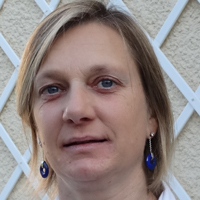 Jeanne Mialet-Perez is a permanent researcher at INSERM UMR1048, “Institute of Metabolic and Cardiovascular Diseases” (I2MC) in Toulouse, France. She received her Ph.D. degree from University of Paris-Orsay in 2002, studying pharmacology of G-protein-coupled receptors (GPCRs). She pursued postdoctoral training at the University of Cincinnati on adrenergic receptors genetic variants in cardiovascular diseases. Dr Mialet-Perez’s research is now dedicated to the understanding of molecular and cellular mechanisms involved in heart failure in the context of ageing. In our team entitled “Signaling and Pathophysiology of Heart Failure” in Toulouse, we study specific signalling pathways related to reactive oxygen species, Ca2+, mitochondrial dysfunction and mitochondrial quality control and their involvement in age-associated cardiac diseases. In particular, we have uncovered the major role of monoamine oxidases (MAO) in the generation of mitochondrial ROS and aldehydes during chronic myocardial infarction remodelling. We also found that excessive MAO-A activation inhibits mitochondrial biogenesis and mitophagy, contributing to ROS-induced DNA damage response and senescence in cardiomyocytes, a major mechanism of cardiac aging.
Jeanne Mialet-Perez is a permanent researcher at INSERM UMR1048, “Institute of Metabolic and Cardiovascular Diseases” (I2MC) in Toulouse, France. She received her Ph.D. degree from University of Paris-Orsay in 2002, studying pharmacology of G-protein-coupled receptors (GPCRs). She pursued postdoctoral training at the University of Cincinnati on adrenergic receptors genetic variants in cardiovascular diseases. Dr Mialet-Perez’s research is now dedicated to the understanding of molecular and cellular mechanisms involved in heart failure in the context of ageing. In our team entitled “Signaling and Pathophysiology of Heart Failure” in Toulouse, we study specific signalling pathways related to reactive oxygen species, Ca2+, mitochondrial dysfunction and mitochondrial quality control and their involvement in age-associated cardiac diseases. In particular, we have uncovered the major role of monoamine oxidases (MAO) in the generation of mitochondrial ROS and aldehydes during chronic myocardial infarction remodelling. We also found that excessive MAO-A activation inhibits mitochondrial biogenesis and mitophagy, contributing to ROS-induced DNA damage response and senescence in cardiomyocytes, a major mechanism of cardiac aging.
 Jeanne Mialet-Perez is a permanent researcher at INSERM UMR1048, “Institute of Metabolic and Cardiovascular Diseases” (I2MC) in Toulouse, France. She received her Ph.D. degree from University of Paris-Orsay in 2002, studying pharmacology of G-protein-coupled receptors (GPCRs). She pursued postdoctoral training at the University of Cincinnati on adrenergic receptors genetic variants in cardiovascular diseases. Dr Mialet-Perez’s research is now dedicated to the understanding of molecular and cellular mechanisms involved in heart failure in the context of ageing. In our team entitled “Signaling and Pathophysiology of Heart Failure” in Toulouse, we study specific signalling pathways related to reactive oxygen species, Ca2+, mitochondrial dysfunction and mitochondrial quality control and their involvement in age-associated cardiac diseases. In particular, we have uncovered the major role of monoamine oxidases (MAO) in the generation of mitochondrial ROS and aldehydes during chronic myocardial infarction remodelling. We also found that excessive MAO-A activation inhibits mitochondrial biogenesis and mitophagy, contributing to ROS-induced DNA damage response and senescence in cardiomyocytes, a major mechanism of cardiac aging.
Jeanne Mialet-Perez is a permanent researcher at INSERM UMR1048, “Institute of Metabolic and Cardiovascular Diseases” (I2MC) in Toulouse, France. She received her Ph.D. degree from University of Paris-Orsay in 2002, studying pharmacology of G-protein-coupled receptors (GPCRs). She pursued postdoctoral training at the University of Cincinnati on adrenergic receptors genetic variants in cardiovascular diseases. Dr Mialet-Perez’s research is now dedicated to the understanding of molecular and cellular mechanisms involved in heart failure in the context of ageing. In our team entitled “Signaling and Pathophysiology of Heart Failure” in Toulouse, we study specific signalling pathways related to reactive oxygen species, Ca2+, mitochondrial dysfunction and mitochondrial quality control and their involvement in age-associated cardiac diseases. In particular, we have uncovered the major role of monoamine oxidases (MAO) in the generation of mitochondrial ROS and aldehydes during chronic myocardial infarction remodelling. We also found that excessive MAO-A activation inhibits mitochondrial biogenesis and mitophagy, contributing to ROS-induced DNA damage response and senescence in cardiomyocytes, a major mechanism of cardiac aging.
 Cristina E Molina is a senior scientist, group leader at the Institute of Experimental Cardiovascular Research, University Medical Center Hamburg. She received her PhD in 2009 at Universitat Autonoma de Barcelona and she did her first post-doc at Paris-Sud University. After her IEF Marie Curie fellowship at the Cardiovascular Research Center in Barcelona, she moves to Germany in 2015. She investigates pathophysiological aspects of cardiac EC coupling and arrhythmogenesis in human atrial myocytes. She is best known for her work on the role of receptor-mediated modulation of ionic currents, intracellular Ca2+- handling and second messengers in atrial fibrillation, including the contribution of different phosphodiesterases into the pathophysiological mechanisms underlying this arrhythmia. Her recent interest is the investigation of the architectural and regulatory principles by witch intracellular signaling networks regulates Ca2+-handling in human atria. In particular, her work focused on the alterations of local regulation and compartmentation of signal transduction that contributes to atrial dysfunction and arrhythmogenesis.
Cristina E Molina is a senior scientist, group leader at the Institute of Experimental Cardiovascular Research, University Medical Center Hamburg. She received her PhD in 2009 at Universitat Autonoma de Barcelona and she did her first post-doc at Paris-Sud University. After her IEF Marie Curie fellowship at the Cardiovascular Research Center in Barcelona, she moves to Germany in 2015. She investigates pathophysiological aspects of cardiac EC coupling and arrhythmogenesis in human atrial myocytes. She is best known for her work on the role of receptor-mediated modulation of ionic currents, intracellular Ca2+- handling and second messengers in atrial fibrillation, including the contribution of different phosphodiesterases into the pathophysiological mechanisms underlying this arrhythmia. Her recent interest is the investigation of the architectural and regulatory principles by witch intracellular signaling networks regulates Ca2+-handling in human atria. In particular, her work focused on the alterations of local regulation and compartmentation of signal transduction that contributes to atrial dysfunction and arrhythmogenesis.
 Cristina E Molina is a senior scientist, group leader at the Institute of Experimental Cardiovascular Research, University Medical Center Hamburg. She received her PhD in 2009 at Universitat Autonoma de Barcelona and she did her first post-doc at Paris-Sud University. After her IEF Marie Curie fellowship at the Cardiovascular Research Center in Barcelona, she moves to Germany in 2015. She investigates pathophysiological aspects of cardiac EC coupling and arrhythmogenesis in human atrial myocytes. She is best known for her work on the role of receptor-mediated modulation of ionic currents, intracellular Ca2+- handling and second messengers in atrial fibrillation, including the contribution of different phosphodiesterases into the pathophysiological mechanisms underlying this arrhythmia. Her recent interest is the investigation of the architectural and regulatory principles by witch intracellular signaling networks regulates Ca2+-handling in human atria. In particular, her work focused on the alterations of local regulation and compartmentation of signal transduction that contributes to atrial dysfunction and arrhythmogenesis.
Cristina E Molina is a senior scientist, group leader at the Institute of Experimental Cardiovascular Research, University Medical Center Hamburg. She received her PhD in 2009 at Universitat Autonoma de Barcelona and she did her first post-doc at Paris-Sud University. After her IEF Marie Curie fellowship at the Cardiovascular Research Center in Barcelona, she moves to Germany in 2015. She investigates pathophysiological aspects of cardiac EC coupling and arrhythmogenesis in human atrial myocytes. She is best known for her work on the role of receptor-mediated modulation of ionic currents, intracellular Ca2+- handling and second messengers in atrial fibrillation, including the contribution of different phosphodiesterases into the pathophysiological mechanisms underlying this arrhythmia. Her recent interest is the investigation of the architectural and regulatory principles by witch intracellular signaling networks regulates Ca2+-handling in human atria. In particular, her work focused on the alterations of local regulation and compartmentation of signal transduction that contributes to atrial dysfunction and arrhythmogenesis.
 Dr. Antoine Muchir Team Leader, INSERM U974 “Center of Research in Myology”, Paris - has been working on the nuclear lamina and nuclear envelope for more than 15 years. He started in the laboratory of Dr. Ketty Schwartz in 1999 (who was the first to show LMNA mutations cause LMNA cardiomyopathy, where he identified the first A-type lamins mutations in patients suffering from a muscular dystrophy. In 2003, he joined the Pr. Howard Worman’s group (who first cloned the LMNA gene) and as a postdoctoral fellow dissected cell signaling abnormalities that occur as a result of abnormalities in the nuclear lamina (Muchir et al. 2007). This work opened novel perspectives to potential treatments for diseases caused by LMNA mutations. This work led to 1/ the discovery that ARRY-371797 inhibitor of p38alpha signaling pathway was efficient in rescuing disease phenotypes in an adapted mouse model of LMNA cardiomyopathy, leading to the launch of the first Phase II, open label, single arm clinical trial for patients (ClinicalTrials.gov NCT02057341). From 2008 through most of 2009, he was a Senior Scientist at Santhera Pharmaceuticals Ltd., which provided him with a unique industry perspective on the development of drugs for rare diseases of the striated muscle system. On October 2012, he was hired by the Inserm as Research Scientist and he leads a Team focused on the understanding oft he cellular and molecular mechanismus leading to LMNA cardiomyopathy.
Dr. Antoine Muchir Team Leader, INSERM U974 “Center of Research in Myology”, Paris - has been working on the nuclear lamina and nuclear envelope for more than 15 years. He started in the laboratory of Dr. Ketty Schwartz in 1999 (who was the first to show LMNA mutations cause LMNA cardiomyopathy, where he identified the first A-type lamins mutations in patients suffering from a muscular dystrophy. In 2003, he joined the Pr. Howard Worman’s group (who first cloned the LMNA gene) and as a postdoctoral fellow dissected cell signaling abnormalities that occur as a result of abnormalities in the nuclear lamina (Muchir et al. 2007). This work opened novel perspectives to potential treatments for diseases caused by LMNA mutations. This work led to 1/ the discovery that ARRY-371797 inhibitor of p38alpha signaling pathway was efficient in rescuing disease phenotypes in an adapted mouse model of LMNA cardiomyopathy, leading to the launch of the first Phase II, open label, single arm clinical trial for patients (ClinicalTrials.gov NCT02057341). From 2008 through most of 2009, he was a Senior Scientist at Santhera Pharmaceuticals Ltd., which provided him with a unique industry perspective on the development of drugs for rare diseases of the striated muscle system. On October 2012, he was hired by the Inserm as Research Scientist and he leads a Team focused on the understanding oft he cellular and molecular mechanismus leading to LMNA cardiomyopathy.
 Dr. Antoine Muchir Team Leader, INSERM U974 “Center of Research in Myology”, Paris - has been working on the nuclear lamina and nuclear envelope for more than 15 years. He started in the laboratory of Dr. Ketty Schwartz in 1999 (who was the first to show LMNA mutations cause LMNA cardiomyopathy, where he identified the first A-type lamins mutations in patients suffering from a muscular dystrophy. In 2003, he joined the Pr. Howard Worman’s group (who first cloned the LMNA gene) and as a postdoctoral fellow dissected cell signaling abnormalities that occur as a result of abnormalities in the nuclear lamina (Muchir et al. 2007). This work opened novel perspectives to potential treatments for diseases caused by LMNA mutations. This work led to 1/ the discovery that ARRY-371797 inhibitor of p38alpha signaling pathway was efficient in rescuing disease phenotypes in an adapted mouse model of LMNA cardiomyopathy, leading to the launch of the first Phase II, open label, single arm clinical trial for patients (ClinicalTrials.gov NCT02057341). From 2008 through most of 2009, he was a Senior Scientist at Santhera Pharmaceuticals Ltd., which provided him with a unique industry perspective on the development of drugs for rare diseases of the striated muscle system. On October 2012, he was hired by the Inserm as Research Scientist and he leads a Team focused on the understanding oft he cellular and molecular mechanismus leading to LMNA cardiomyopathy.
Dr. Antoine Muchir Team Leader, INSERM U974 “Center of Research in Myology”, Paris - has been working on the nuclear lamina and nuclear envelope for more than 15 years. He started in the laboratory of Dr. Ketty Schwartz in 1999 (who was the first to show LMNA mutations cause LMNA cardiomyopathy, where he identified the first A-type lamins mutations in patients suffering from a muscular dystrophy. In 2003, he joined the Pr. Howard Worman’s group (who first cloned the LMNA gene) and as a postdoctoral fellow dissected cell signaling abnormalities that occur as a result of abnormalities in the nuclear lamina (Muchir et al. 2007). This work opened novel perspectives to potential treatments for diseases caused by LMNA mutations. This work led to 1/ the discovery that ARRY-371797 inhibitor of p38alpha signaling pathway was efficient in rescuing disease phenotypes in an adapted mouse model of LMNA cardiomyopathy, leading to the launch of the first Phase II, open label, single arm clinical trial for patients (ClinicalTrials.gov NCT02057341). From 2008 through most of 2009, he was a Senior Scientist at Santhera Pharmaceuticals Ltd., which provided him with a unique industry perspective on the development of drugs for rare diseases of the striated muscle system. On October 2012, he was hired by the Inserm as Research Scientist and he leads a Team focused on the understanding oft he cellular and molecular mechanismus leading to LMNA cardiomyopathy.
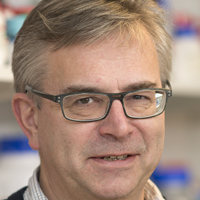 Mike Murphy received his BA in chemistry at Trinity College, Dublin in 1984 and his PhD in Biochemistry at Cambridge University in 1987. He took up a faculty position in the Biochemistry Department at the University of Otago, Dunedin, New Zealand in 1992. In 2001 he moved to the MRC Mitochondrial Biology Unit in Cambridge, UK. Murphy’s research focuses on the roles of reactive oxygen species in mitochondrial function and pathology. In particular he has pioneered the targeting of bioactive and probe molecules to mitochondria in vivo. This work established mitochondria as a relevant drug target and opened up the field of mitochondrial pharmacology. The Murphy group has gone on to create MitoSNO, a mitochondria-targeted nitric oxide donor which is now being developed as a potential therapy for cardiac ischaemia-reperfusion injury, and MitoG to treat diabetes. Recently his work has extended to determining the mechanism by which mitochondria produce free radicals during ischaemia-reperfusion injury in heart attack and stroke. Murphy is Professor of Mitochondrial Redox Biology at the University of Cambridge, a Wellcome Trust Investigator, honorary research Professor at the University of Otago, New Zealand, a recipient of the Keilin Medal from the Biochemical Society, an honorary Fellow of the Royal Society of New Zealand and a Fellow of the Academy of Medical Sciences (FMedSci). He has published more than 350 peer reviewed papers, which have garnered more than 40,000 citations and he has an h-index of 108.
Mike Murphy received his BA in chemistry at Trinity College, Dublin in 1984 and his PhD in Biochemistry at Cambridge University in 1987. He took up a faculty position in the Biochemistry Department at the University of Otago, Dunedin, New Zealand in 1992. In 2001 he moved to the MRC Mitochondrial Biology Unit in Cambridge, UK. Murphy’s research focuses on the roles of reactive oxygen species in mitochondrial function and pathology. In particular he has pioneered the targeting of bioactive and probe molecules to mitochondria in vivo. This work established mitochondria as a relevant drug target and opened up the field of mitochondrial pharmacology. The Murphy group has gone on to create MitoSNO, a mitochondria-targeted nitric oxide donor which is now being developed as a potential therapy for cardiac ischaemia-reperfusion injury, and MitoG to treat diabetes. Recently his work has extended to determining the mechanism by which mitochondria produce free radicals during ischaemia-reperfusion injury in heart attack and stroke. Murphy is Professor of Mitochondrial Redox Biology at the University of Cambridge, a Wellcome Trust Investigator, honorary research Professor at the University of Otago, New Zealand, a recipient of the Keilin Medal from the Biochemical Society, an honorary Fellow of the Royal Society of New Zealand and a Fellow of the Academy of Medical Sciences (FMedSci). He has published more than 350 peer reviewed papers, which have garnered more than 40,000 citations and he has an h-index of 108.
 Mike Murphy received his BA in chemistry at Trinity College, Dublin in 1984 and his PhD in Biochemistry at Cambridge University in 1987. He took up a faculty position in the Biochemistry Department at the University of Otago, Dunedin, New Zealand in 1992. In 2001 he moved to the MRC Mitochondrial Biology Unit in Cambridge, UK. Murphy’s research focuses on the roles of reactive oxygen species in mitochondrial function and pathology. In particular he has pioneered the targeting of bioactive and probe molecules to mitochondria in vivo. This work established mitochondria as a relevant drug target and opened up the field of mitochondrial pharmacology. The Murphy group has gone on to create MitoSNO, a mitochondria-targeted nitric oxide donor which is now being developed as a potential therapy for cardiac ischaemia-reperfusion injury, and MitoG to treat diabetes. Recently his work has extended to determining the mechanism by which mitochondria produce free radicals during ischaemia-reperfusion injury in heart attack and stroke. Murphy is Professor of Mitochondrial Redox Biology at the University of Cambridge, a Wellcome Trust Investigator, honorary research Professor at the University of Otago, New Zealand, a recipient of the Keilin Medal from the Biochemical Society, an honorary Fellow of the Royal Society of New Zealand and a Fellow of the Academy of Medical Sciences (FMedSci). He has published more than 350 peer reviewed papers, which have garnered more than 40,000 citations and he has an h-index of 108.
Mike Murphy received his BA in chemistry at Trinity College, Dublin in 1984 and his PhD in Biochemistry at Cambridge University in 1987. He took up a faculty position in the Biochemistry Department at the University of Otago, Dunedin, New Zealand in 1992. In 2001 he moved to the MRC Mitochondrial Biology Unit in Cambridge, UK. Murphy’s research focuses on the roles of reactive oxygen species in mitochondrial function and pathology. In particular he has pioneered the targeting of bioactive and probe molecules to mitochondria in vivo. This work established mitochondria as a relevant drug target and opened up the field of mitochondrial pharmacology. The Murphy group has gone on to create MitoSNO, a mitochondria-targeted nitric oxide donor which is now being developed as a potential therapy for cardiac ischaemia-reperfusion injury, and MitoG to treat diabetes. Recently his work has extended to determining the mechanism by which mitochondria produce free radicals during ischaemia-reperfusion injury in heart attack and stroke. Murphy is Professor of Mitochondrial Redox Biology at the University of Cambridge, a Wellcome Trust Investigator, honorary research Professor at the University of Otago, New Zealand, a recipient of the Keilin Medal from the Biochemical Society, an honorary Fellow of the Royal Society of New Zealand and a Fellow of the Academy of Medical Sciences (FMedSci). He has published more than 350 peer reviewed papers, which have garnered more than 40,000 citations and he has an h-index of 108.
 Michela Noseda received her medical degree at Universita’ Cattolica in Rome and her PhD at Universita’ dell’Aquila. She worked as a post-doc at Albert Einstein College of Medicine (NY, US) working on paediatric oncology research, subsequently by studying tumour angiogenesis under the supervision of Aly Karsan (University of British Columbia, Vancouver, Canada), via the blood vessels, she reached the heart. To study heart regeneration and repair she joined Michael Schneider’s team at Baylor College of Medicine (Houston, Texas) and then moved at Imperial College London (UK). Currently, Michela’s interdisciplinary team combines high-end ‘omics technologies, human stem cells and animal models of heart disease to identify pathways of cardiac remodelling and repair for novel prognostic and therapeutic approaches.
Michela Noseda received her medical degree at Universita’ Cattolica in Rome and her PhD at Universita’ dell’Aquila. She worked as a post-doc at Albert Einstein College of Medicine (NY, US) working on paediatric oncology research, subsequently by studying tumour angiogenesis under the supervision of Aly Karsan (University of British Columbia, Vancouver, Canada), via the blood vessels, she reached the heart. To study heart regeneration and repair she joined Michael Schneider’s team at Baylor College of Medicine (Houston, Texas) and then moved at Imperial College London (UK). Currently, Michela’s interdisciplinary team combines high-end ‘omics technologies, human stem cells and animal models of heart disease to identify pathways of cardiac remodelling and repair for novel prognostic and therapeutic approaches.
 Michela Noseda received her medical degree at Universita’ Cattolica in Rome and her PhD at Universita’ dell’Aquila. She worked as a post-doc at Albert Einstein College of Medicine (NY, US) working on paediatric oncology research, subsequently by studying tumour angiogenesis under the supervision of Aly Karsan (University of British Columbia, Vancouver, Canada), via the blood vessels, she reached the heart. To study heart regeneration and repair she joined Michael Schneider’s team at Baylor College of Medicine (Houston, Texas) and then moved at Imperial College London (UK). Currently, Michela’s interdisciplinary team combines high-end ‘omics technologies, human stem cells and animal models of heart disease to identify pathways of cardiac remodelling and repair for novel prognostic and therapeutic approaches.
Michela Noseda received her medical degree at Universita’ Cattolica in Rome and her PhD at Universita’ dell’Aquila. She worked as a post-doc at Albert Einstein College of Medicine (NY, US) working on paediatric oncology research, subsequently by studying tumour angiogenesis under the supervision of Aly Karsan (University of British Columbia, Vancouver, Canada), via the blood vessels, she reached the heart. To study heart regeneration and repair she joined Michael Schneider’s team at Baylor College of Medicine (Houston, Texas) and then moved at Imperial College London (UK). Currently, Michela’s interdisciplinary team combines high-end ‘omics technologies, human stem cells and animal models of heart disease to identify pathways of cardiac remodelling and repair for novel prognostic and therapeutic approaches.
 Dr. Oudit is Professor of Medicine and Clinician-Scientist at the Mazankowski Alberta Heart Institute, University of Alberta. He completed the Clinician-Investigator Program of the Royal College of Physicians and Surgeons of Canada, followed by completion of training in Adult Cardiology at the University of Toronto and a fellowship in the molecular biology of heart failure. He is currently a Canada Research Chair in Heart Failure and Director of the Heart Function Clinic at the Mazankowski Alberta Heart Institute. His research activities are diverse with a primary emphasis on heart failure and cardiomyopathies.
Dr. Oudit is Professor of Medicine and Clinician-Scientist at the Mazankowski Alberta Heart Institute, University of Alberta. He completed the Clinician-Investigator Program of the Royal College of Physicians and Surgeons of Canada, followed by completion of training in Adult Cardiology at the University of Toronto and a fellowship in the molecular biology of heart failure. He is currently a Canada Research Chair in Heart Failure and Director of the Heart Function Clinic at the Mazankowski Alberta Heart Institute. His research activities are diverse with a primary emphasis on heart failure and cardiomyopathies.
 Dr. Oudit is Professor of Medicine and Clinician-Scientist at the Mazankowski Alberta Heart Institute, University of Alberta. He completed the Clinician-Investigator Program of the Royal College of Physicians and Surgeons of Canada, followed by completion of training in Adult Cardiology at the University of Toronto and a fellowship in the molecular biology of heart failure. He is currently a Canada Research Chair in Heart Failure and Director of the Heart Function Clinic at the Mazankowski Alberta Heart Institute. His research activities are diverse with a primary emphasis on heart failure and cardiomyopathies.
Dr. Oudit is Professor of Medicine and Clinician-Scientist at the Mazankowski Alberta Heart Institute, University of Alberta. He completed the Clinician-Investigator Program of the Royal College of Physicians and Surgeons of Canada, followed by completion of training in Adult Cardiology at the University of Toronto and a fellowship in the molecular biology of heart failure. He is currently a Canada Research Chair in Heart Failure and Director of the Heart Function Clinic at the Mazankowski Alberta Heart Institute. His research activities are diverse with a primary emphasis on heart failure and cardiomyopathies.
 David Paterson is a cardiac neurobiologist and received his DPhil from the University of Oxford (1989) and his DSc (2005) from the University of Western Australia. He is Head of the Department of Physiology, Anatomy & Genetics at the University of Oxford, Professor of Cardiovascular Physiology, and a Fellow of Merton College, Oxford. In 2020 he will become President of The Physiological Society.
David Paterson is a cardiac neurobiologist and received his DPhil from the University of Oxford (1989) and his DSc (2005) from the University of Western Australia. He is Head of the Department of Physiology, Anatomy & Genetics at the University of Oxford, Professor of Cardiovascular Physiology, and a Fellow of Merton College, Oxford. In 2020 he will become President of The Physiological Society.
Paterson is Honorary Director of the Burdon Sanderson Cardiac Science Centre, Oxford and has held visiting and honorary Professorships at the Universities of Auckland, Otago, Melbourne, and Western Australia. His research focuses on how both branches of the cardiac autonomic nervous system communicate at the end organ level and whether oxidative stress plays a role in uncoupling pre-synaptic and post synaptic signalling. His group has identified novel targets coupled to PDE-cyclic nucleotides, which regulate several ion channels that control cardiac excitability and neurotransmission in health and disease. In particular, they have recently reported neurotransmitter switching and functional coupling of pre-synaptic beta receptors leading to abnormal calcium regulation and chemical transmission in states of dysautonomia. Paterson is the former Editor-in-Chief of The Journal of Physiology (2011-16), Experimental Physiology (2006-11) and co-author of the textbook, Levick‘s Introduction to Cardiovascular Physiology (2018). In 2018 he delivered the Carl Ludwig Distinguished Lecture for the American Physiological Society at Experimental Biology and was awarded the Top Published paper in Hypertension in the Basic Science Category for the American Heart Association 2019. He is a Fellow of the American Physiological Society, The Physiological Society, The Royal Society of Biology, and an Honorary Fellow of The Royal Society of New Zealand.
 David Paterson is a cardiac neurobiologist and received his DPhil from the University of Oxford (1989) and his DSc (2005) from the University of Western Australia. He is Head of the Department of Physiology, Anatomy & Genetics at the University of Oxford, Professor of Cardiovascular Physiology, and a Fellow of Merton College, Oxford. In 2020 he will become President of The Physiological Society.
David Paterson is a cardiac neurobiologist and received his DPhil from the University of Oxford (1989) and his DSc (2005) from the University of Western Australia. He is Head of the Department of Physiology, Anatomy & Genetics at the University of Oxford, Professor of Cardiovascular Physiology, and a Fellow of Merton College, Oxford. In 2020 he will become President of The Physiological Society.
Paterson is Honorary Director of the Burdon Sanderson Cardiac Science Centre, Oxford and has held visiting and honorary Professorships at the Universities of Auckland, Otago, Melbourne, and Western Australia. His research focuses on how both branches of the cardiac autonomic nervous system communicate at the end organ level and whether oxidative stress plays a role in uncoupling pre-synaptic and post synaptic signalling. His group has identified novel targets coupled to PDE-cyclic nucleotides, which regulate several ion channels that control cardiac excitability and neurotransmission in health and disease. In particular, they have recently reported neurotransmitter switching and functional coupling of pre-synaptic beta receptors leading to abnormal calcium regulation and chemical transmission in states of dysautonomia. Paterson is the former Editor-in-Chief of The Journal of Physiology (2011-16), Experimental Physiology (2006-11) and co-author of the textbook, Levick‘s Introduction to Cardiovascular Physiology (2018). In 2018 he delivered the Carl Ludwig Distinguished Lecture for the American Physiological Society at Experimental Biology and was awarded the Top Published paper in Hypertension in the Basic Science Category for the American Heart Association 2019. He is a Fellow of the American Physiological Society, The Physiological Society, The Royal Society of Biology, and an Honorary Fellow of The Royal Society of New Zealand.
 Since 2017, Laetitia Pereira is a group leader (LabEx/LERMIT) in the Laboratory of Signalling and Cardiovascular Pathophysiology (INSERM, UMR-S 1180, University of Paris Saclay, France) where she works on deciphering the mechanisms involved in diabetic cardiomyopathy. Laetitia Pereira obtained her Ph.D degree in Physiology in 2007 at the University of Montpellier, France. Her Ph.D. work focused on the physiopathology of cardiac excitation-contraction coupling. As a postdoctoral fellow of the American Heart Association in the Dr. Bers Laboratory (Department of Pharmacology, UC Davis, CA, USA), she studied the compartmentalization of Epac family proteins signalling (Exchange protein directly activated by cAMP). Her work has high pointed Epac proteins as new effectors of the beta-adrenergic-dependent regulation of ventricular Ca signalling leading to arrhythmia and hypertrophy and revealed that Epac isoforms function relied on their subcellular localization. Her work has also contributed in showing how hyperglycemic changes seen in diabetes dramatically affect excitation-contraction coupling leading to cardiac dysfunction. She has authored 24 publications on the physio-pathological regulation of the excitation-contraction coupling in high profile journals such as Nature, Proceedings of the National Academy of Sciences, Circulation and Diabetes among others.
Since 2017, Laetitia Pereira is a group leader (LabEx/LERMIT) in the Laboratory of Signalling and Cardiovascular Pathophysiology (INSERM, UMR-S 1180, University of Paris Saclay, France) where she works on deciphering the mechanisms involved in diabetic cardiomyopathy. Laetitia Pereira obtained her Ph.D degree in Physiology in 2007 at the University of Montpellier, France. Her Ph.D. work focused on the physiopathology of cardiac excitation-contraction coupling. As a postdoctoral fellow of the American Heart Association in the Dr. Bers Laboratory (Department of Pharmacology, UC Davis, CA, USA), she studied the compartmentalization of Epac family proteins signalling (Exchange protein directly activated by cAMP). Her work has high pointed Epac proteins as new effectors of the beta-adrenergic-dependent regulation of ventricular Ca signalling leading to arrhythmia and hypertrophy and revealed that Epac isoforms function relied on their subcellular localization. Her work has also contributed in showing how hyperglycemic changes seen in diabetes dramatically affect excitation-contraction coupling leading to cardiac dysfunction. She has authored 24 publications on the physio-pathological regulation of the excitation-contraction coupling in high profile journals such as Nature, Proceedings of the National Academy of Sciences, Circulation and Diabetes among others.
 Since 2017, Laetitia Pereira is a group leader (LabEx/LERMIT) in the Laboratory of Signalling and Cardiovascular Pathophysiology (INSERM, UMR-S 1180, University of Paris Saclay, France) where she works on deciphering the mechanisms involved in diabetic cardiomyopathy. Laetitia Pereira obtained her Ph.D degree in Physiology in 2007 at the University of Montpellier, France. Her Ph.D. work focused on the physiopathology of cardiac excitation-contraction coupling. As a postdoctoral fellow of the American Heart Association in the Dr. Bers Laboratory (Department of Pharmacology, UC Davis, CA, USA), she studied the compartmentalization of Epac family proteins signalling (Exchange protein directly activated by cAMP). Her work has high pointed Epac proteins as new effectors of the beta-adrenergic-dependent regulation of ventricular Ca signalling leading to arrhythmia and hypertrophy and revealed that Epac isoforms function relied on their subcellular localization. Her work has also contributed in showing how hyperglycemic changes seen in diabetes dramatically affect excitation-contraction coupling leading to cardiac dysfunction. She has authored 24 publications on the physio-pathological regulation of the excitation-contraction coupling in high profile journals such as Nature, Proceedings of the National Academy of Sciences, Circulation and Diabetes among others.
Since 2017, Laetitia Pereira is a group leader (LabEx/LERMIT) in the Laboratory of Signalling and Cardiovascular Pathophysiology (INSERM, UMR-S 1180, University of Paris Saclay, France) where she works on deciphering the mechanisms involved in diabetic cardiomyopathy. Laetitia Pereira obtained her Ph.D degree in Physiology in 2007 at the University of Montpellier, France. Her Ph.D. work focused on the physiopathology of cardiac excitation-contraction coupling. As a postdoctoral fellow of the American Heart Association in the Dr. Bers Laboratory (Department of Pharmacology, UC Davis, CA, USA), she studied the compartmentalization of Epac family proteins signalling (Exchange protein directly activated by cAMP). Her work has high pointed Epac proteins as new effectors of the beta-adrenergic-dependent regulation of ventricular Ca signalling leading to arrhythmia and hypertrophy and revealed that Epac isoforms function relied on their subcellular localization. Her work has also contributed in showing how hyperglycemic changes seen in diabetes dramatically affect excitation-contraction coupling leading to cardiac dysfunction. She has authored 24 publications on the physio-pathological regulation of the excitation-contraction coupling in high profile journals such as Nature, Proceedings of the National Academy of Sciences, Circulation and Diabetes among others.
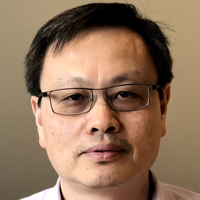 Gangjian “GQ” Qin, MD, FAHA, is Professor and Vice Chair for Research at the Department of Biomedical Engineering, Director of the Molecular Cardiology Program, at University of Alabama Birmingham. Before he joined UAB in 2016, Dr. Qin served on the faculty of Northwestern University Feinberg School of Medicine for 9 years. Dr. Qin’s education background include an MD from Tongji Medical College in China, postdoc training from International Centre for Genetic Engineering and Biotechnology Italy, University of Illinois at Chicago, and St. Elizabeth Medical Center of Boston Tufts University. Dr. Qin’s research program is dedicated to defining the molecular mechanisms that underlie cardiovascular biology and contribute to the recovery from cardiovascular disease, and to translating the results from these basic science investigations to clinical applications. His lab disclosed the roles of the E2F oncogenes in the ischemic angiogenesis and blood pressure regulation; characterized the signaling mechanisms of SDF-1/CXCR4 axis in the maintenance of bone marrow stem cell niche; revealed the role of oxidative metabolism in the differentiation of endothelial progenitor cells; and most recently, identified a novel mechanism of systemic response to ischemic cardiac injury through circulating exosomes. Dr. Qin has published over 100 research articles in international journals. He serves on the editorial board of biomedical journals including Circulation Research and on the grant review committees for the NIH, VA, and AHA. Over the last 15 years, Dr. Qin’s lab has trained and is training over 50 research trainees at various academic levels.
Gangjian “GQ” Qin, MD, FAHA, is Professor and Vice Chair for Research at the Department of Biomedical Engineering, Director of the Molecular Cardiology Program, at University of Alabama Birmingham. Before he joined UAB in 2016, Dr. Qin served on the faculty of Northwestern University Feinberg School of Medicine for 9 years. Dr. Qin’s education background include an MD from Tongji Medical College in China, postdoc training from International Centre for Genetic Engineering and Biotechnology Italy, University of Illinois at Chicago, and St. Elizabeth Medical Center of Boston Tufts University. Dr. Qin’s research program is dedicated to defining the molecular mechanisms that underlie cardiovascular biology and contribute to the recovery from cardiovascular disease, and to translating the results from these basic science investigations to clinical applications. His lab disclosed the roles of the E2F oncogenes in the ischemic angiogenesis and blood pressure regulation; characterized the signaling mechanisms of SDF-1/CXCR4 axis in the maintenance of bone marrow stem cell niche; revealed the role of oxidative metabolism in the differentiation of endothelial progenitor cells; and most recently, identified a novel mechanism of systemic response to ischemic cardiac injury through circulating exosomes. Dr. Qin has published over 100 research articles in international journals. He serves on the editorial board of biomedical journals including Circulation Research and on the grant review committees for the NIH, VA, and AHA. Over the last 15 years, Dr. Qin’s lab has trained and is training over 50 research trainees at various academic levels.
 Gangjian “GQ” Qin, MD, FAHA, is Professor and Vice Chair for Research at the Department of Biomedical Engineering, Director of the Molecular Cardiology Program, at University of Alabama Birmingham. Before he joined UAB in 2016, Dr. Qin served on the faculty of Northwestern University Feinberg School of Medicine for 9 years. Dr. Qin’s education background include an MD from Tongji Medical College in China, postdoc training from International Centre for Genetic Engineering and Biotechnology Italy, University of Illinois at Chicago, and St. Elizabeth Medical Center of Boston Tufts University. Dr. Qin’s research program is dedicated to defining the molecular mechanisms that underlie cardiovascular biology and contribute to the recovery from cardiovascular disease, and to translating the results from these basic science investigations to clinical applications. His lab disclosed the roles of the E2F oncogenes in the ischemic angiogenesis and blood pressure regulation; characterized the signaling mechanisms of SDF-1/CXCR4 axis in the maintenance of bone marrow stem cell niche; revealed the role of oxidative metabolism in the differentiation of endothelial progenitor cells; and most recently, identified a novel mechanism of systemic response to ischemic cardiac injury through circulating exosomes. Dr. Qin has published over 100 research articles in international journals. He serves on the editorial board of biomedical journals including Circulation Research and on the grant review committees for the NIH, VA, and AHA. Over the last 15 years, Dr. Qin’s lab has trained and is training over 50 research trainees at various academic levels.
Gangjian “GQ” Qin, MD, FAHA, is Professor and Vice Chair for Research at the Department of Biomedical Engineering, Director of the Molecular Cardiology Program, at University of Alabama Birmingham. Before he joined UAB in 2016, Dr. Qin served on the faculty of Northwestern University Feinberg School of Medicine for 9 years. Dr. Qin’s education background include an MD from Tongji Medical College in China, postdoc training from International Centre for Genetic Engineering and Biotechnology Italy, University of Illinois at Chicago, and St. Elizabeth Medical Center of Boston Tufts University. Dr. Qin’s research program is dedicated to defining the molecular mechanisms that underlie cardiovascular biology and contribute to the recovery from cardiovascular disease, and to translating the results from these basic science investigations to clinical applications. His lab disclosed the roles of the E2F oncogenes in the ischemic angiogenesis and blood pressure regulation; characterized the signaling mechanisms of SDF-1/CXCR4 axis in the maintenance of bone marrow stem cell niche; revealed the role of oxidative metabolism in the differentiation of endothelial progenitor cells; and most recently, identified a novel mechanism of systemic response to ischemic cardiac injury through circulating exosomes. Dr. Qin has published over 100 research articles in international journals. He serves on the editorial board of biomedical journals including Circulation Research and on the grant review committees for the NIH, VA, and AHA. Over the last 15 years, Dr. Qin’s lab has trained and is training over 50 research trainees at various academic levels.
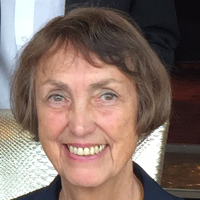 Ursula Ravens received her MD from University of Freiburg, Germany. Working in the Physiology Department (Albrecht Fleckenstein) with cardiac tissues from Rhesus monkey, she and her supervisor Raimund Kaufmann discovered that stretching the myocardium induces membrane depolarisations that can exacerbate into spontaneous by action potentials suggesting ‘mechano-electrical feedback’. Funded by the German Academic Exchange Service she joined one of the ’fathers’ of ISHR, Richard Bing, at Wayne State University, Detroit, USA as a summer student.
Ursula Ravens received her MD from University of Freiburg, Germany. Working in the Physiology Department (Albrecht Fleckenstein) with cardiac tissues from Rhesus monkey, she and her supervisor Raimund Kaufmann discovered that stretching the myocardium induces membrane depolarisations that can exacerbate into spontaneous by action potentials suggesting ‘mechano-electrical feedback’. Funded by the German Academic Exchange Service she joined one of the ’fathers’ of ISHR, Richard Bing, at Wayne State University, Detroit, USA as a summer student.
After a postdoc in Pharmacology with Heinz Lüllmann (Kiel) and an introduction into ‘patch-clamping’ by Gerrit Isenberg (Homburg-Saar), Ursula obtained her first tenured professorship for Cardiovascular Pharmacology at Essen University in 1985, where she established a lab for cardiac cellular electrophysiology. In 1994, Ursula spent a sabbatical withSian Harding at National Heart and Lung Institute, Imperial College, London. From 1997-2014 she chaired the Department of Pharmacology, Medical Faculty TU Dresden, focussing on drug action in atrial fibrillation. After her retirement, she seized the opportunity to join Peter Kohl as a Senior Professor at IEKM Freiburg.
Apart from over 300 scientific contributions, Ursula is a long-standing member of ISHR. She has served on Council of ISHR-ES (1999-2005) and organized the 2004 ISHR-ES Conference in Dresden. She co-chaired 2019 Gordon Research Conference on Cardiac Arrhythmia Mechanisms and will organize the 2021 GRC together with David Christini, New York. Ursula is fellow of ESC, AHA, ISHR; honorary fellow of the British Pharmacological Society; member of Leopoldina, holder of Medal of Merit ISHR-ES and the Federal Cross of Merit.
 Ursula Ravens received her MD from University of Freiburg, Germany. Working in the Physiology Department (Albrecht Fleckenstein) with cardiac tissues from Rhesus monkey, she and her supervisor Raimund Kaufmann discovered that stretching the myocardium induces membrane depolarisations that can exacerbate into spontaneous by action potentials suggesting ‘mechano-electrical feedback’. Funded by the German Academic Exchange Service she joined one of the ’fathers’ of ISHR, Richard Bing, at Wayne State University, Detroit, USA as a summer student.
Ursula Ravens received her MD from University of Freiburg, Germany. Working in the Physiology Department (Albrecht Fleckenstein) with cardiac tissues from Rhesus monkey, she and her supervisor Raimund Kaufmann discovered that stretching the myocardium induces membrane depolarisations that can exacerbate into spontaneous by action potentials suggesting ‘mechano-electrical feedback’. Funded by the German Academic Exchange Service she joined one of the ’fathers’ of ISHR, Richard Bing, at Wayne State University, Detroit, USA as a summer student.
After a postdoc in Pharmacology with Heinz Lüllmann (Kiel) and an introduction into ‘patch-clamping’ by Gerrit Isenberg (Homburg-Saar), Ursula obtained her first tenured professorship for Cardiovascular Pharmacology at Essen University in 1985, where she established a lab for cardiac cellular electrophysiology. In 1994, Ursula spent a sabbatical withSian Harding at National Heart and Lung Institute, Imperial College, London. From 1997-2014 she chaired the Department of Pharmacology, Medical Faculty TU Dresden, focussing on drug action in atrial fibrillation. After her retirement, she seized the opportunity to join Peter Kohl as a Senior Professor at IEKM Freiburg.
Apart from over 300 scientific contributions, Ursula is a long-standing member of ISHR. She has served on Council of ISHR-ES (1999-2005) and organized the 2004 ISHR-ES Conference in Dresden. She co-chaired 2019 Gordon Research Conference on Cardiac Arrhythmia Mechanisms and will organize the 2021 GRC together with David Christini, New York. Ursula is fellow of ESC, AHA, ISHR; honorary fellow of the British Pharmacological Society; member of Leopoldina, holder of Medal of Merit ISHR-ES and the Federal Cross of Merit.
 Carol Ann Remme MD PhD is Associate Professor of Basic and Translational Electrophysiology and Principal Investigator at the Department of Clinical and Experimental Cardiology of the Amsterdam University Medical Center (AMC). Her research focuses on basic and translational studies into inherited disorders associated with cardiac arrhythmias and sudden cardiac death, including SCN5A channelopathies and arrhythmogenic cardiomyopathy (ACM), incorporating clinical and genetic findings with functional and mechanistic studies in transgenic models and human induced pluripotent stem cell-derived (iPSC) cardiomyocytes. Her work is furthermore aimed at identifying novel (genetic) determinants and pathways mediating cardiac electrophysiology and arrhythmia risk, as well as novel targets for the prevention and treatment of cardiac arrhythmias and sudden cardiac death.
Carol Ann Remme MD PhD is Associate Professor of Basic and Translational Electrophysiology and Principal Investigator at the Department of Clinical and Experimental Cardiology of the Amsterdam University Medical Center (AMC). Her research focuses on basic and translational studies into inherited disorders associated with cardiac arrhythmias and sudden cardiac death, including SCN5A channelopathies and arrhythmogenic cardiomyopathy (ACM), incorporating clinical and genetic findings with functional and mechanistic studies in transgenic models and human induced pluripotent stem cell-derived (iPSC) cardiomyocytes. Her work is furthermore aimed at identifying novel (genetic) determinants and pathways mediating cardiac electrophysiology and arrhythmia risk, as well as novel targets for the prevention and treatment of cardiac arrhythmias and sudden cardiac death.
Dr Remme is Associate Editor at Physiological Reviews, Cardiovascular Drugs and Therapy, and Frontiers in Cardiac Electrophysiology, and Senior Guest Editor at JAHA. She is furthermore Chair of the ESC Working Group on Cardiac Cellular Electrophysiology and member of the ESC Media Committee.
 Carol Ann Remme MD PhD is Associate Professor of Basic and Translational Electrophysiology and Principal Investigator at the Department of Clinical and Experimental Cardiology of the Amsterdam University Medical Center (AMC). Her research focuses on basic and translational studies into inherited disorders associated with cardiac arrhythmias and sudden cardiac death, including SCN5A channelopathies and arrhythmogenic cardiomyopathy (ACM), incorporating clinical and genetic findings with functional and mechanistic studies in transgenic models and human induced pluripotent stem cell-derived (iPSC) cardiomyocytes. Her work is furthermore aimed at identifying novel (genetic) determinants and pathways mediating cardiac electrophysiology and arrhythmia risk, as well as novel targets for the prevention and treatment of cardiac arrhythmias and sudden cardiac death.
Carol Ann Remme MD PhD is Associate Professor of Basic and Translational Electrophysiology and Principal Investigator at the Department of Clinical and Experimental Cardiology of the Amsterdam University Medical Center (AMC). Her research focuses on basic and translational studies into inherited disorders associated with cardiac arrhythmias and sudden cardiac death, including SCN5A channelopathies and arrhythmogenic cardiomyopathy (ACM), incorporating clinical and genetic findings with functional and mechanistic studies in transgenic models and human induced pluripotent stem cell-derived (iPSC) cardiomyocytes. Her work is furthermore aimed at identifying novel (genetic) determinants and pathways mediating cardiac electrophysiology and arrhythmia risk, as well as novel targets for the prevention and treatment of cardiac arrhythmias and sudden cardiac death.
Dr Remme is Associate Editor at Physiological Reviews, Cardiovascular Drugs and Therapy, and Frontiers in Cardiac Electrophysiology, and Senior Guest Editor at JAHA. She is furthermore Chair of the ESC Working Group on Cardiac Cellular Electrophysiology and member of the ESC Media Committee.
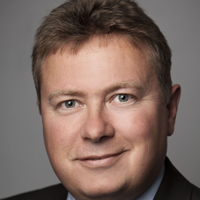 Stephan Rosenkranz, MD, is an interventional cardiologist, and serves as the Head of the Pulmonary Hypertension (PH) Center at the University of Cologne, Germany, and also leads the Cologne Cardiovascular Research Center (CCRC). Professor Rosenkranz graduated from the Justus Liebig University in Giessen, Germany, before becoming a resident physician and research fellow at the University of Cologne. Following his PhD, he undertook a post-doctoral fellowship at Harvard Medical School, USA, before returning to Cologne. He is currently the Chair of the Working Group “Pulmonary Circulation and Right Ventricular Function” of the European Society of Cardiology. His research interests include (i) cardiopulmonary interaction and right ventricular function in left heart disease, and (ii) signal transduction and the biological importance of receptor tyrosine kinases and stress signalling in cardiovascular disease. He has been involved in numerous clinical trials in the fields of atherosclerosis, heart failure and PH, and received numerous scientific awards.
Stephan Rosenkranz, MD, is an interventional cardiologist, and serves as the Head of the Pulmonary Hypertension (PH) Center at the University of Cologne, Germany, and also leads the Cologne Cardiovascular Research Center (CCRC). Professor Rosenkranz graduated from the Justus Liebig University in Giessen, Germany, before becoming a resident physician and research fellow at the University of Cologne. Following his PhD, he undertook a post-doctoral fellowship at Harvard Medical School, USA, before returning to Cologne. He is currently the Chair of the Working Group “Pulmonary Circulation and Right Ventricular Function” of the European Society of Cardiology. His research interests include (i) cardiopulmonary interaction and right ventricular function in left heart disease, and (ii) signal transduction and the biological importance of receptor tyrosine kinases and stress signalling in cardiovascular disease. He has been involved in numerous clinical trials in the fields of atherosclerosis, heart failure and PH, and received numerous scientific awards.
 Stephan Rosenkranz, MD, is an interventional cardiologist, and serves as the Head of the Pulmonary Hypertension (PH) Center at the University of Cologne, Germany, and also leads the Cologne Cardiovascular Research Center (CCRC). Professor Rosenkranz graduated from the Justus Liebig University in Giessen, Germany, before becoming a resident physician and research fellow at the University of Cologne. Following his PhD, he undertook a post-doctoral fellowship at Harvard Medical School, USA, before returning to Cologne. He is currently the Chair of the Working Group “Pulmonary Circulation and Right Ventricular Function” of the European Society of Cardiology. His research interests include (i) cardiopulmonary interaction and right ventricular function in left heart disease, and (ii) signal transduction and the biological importance of receptor tyrosine kinases and stress signalling in cardiovascular disease. He has been involved in numerous clinical trials in the fields of atherosclerosis, heart failure and PH, and received numerous scientific awards.
Stephan Rosenkranz, MD, is an interventional cardiologist, and serves as the Head of the Pulmonary Hypertension (PH) Center at the University of Cologne, Germany, and also leads the Cologne Cardiovascular Research Center (CCRC). Professor Rosenkranz graduated from the Justus Liebig University in Giessen, Germany, before becoming a resident physician and research fellow at the University of Cologne. Following his PhD, he undertook a post-doctoral fellowship at Harvard Medical School, USA, before returning to Cologne. He is currently the Chair of the Working Group “Pulmonary Circulation and Right Ventricular Function” of the European Society of Cardiology. His research interests include (i) cardiopulmonary interaction and right ventricular function in left heart disease, and (ii) signal transduction and the biological importance of receptor tyrosine kinases and stress signalling in cardiovascular disease. He has been involved in numerous clinical trials in the fields of atherosclerosis, heart failure and PH, and received numerous scientific awards.
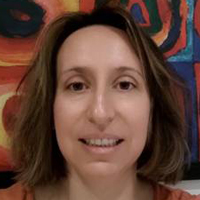 Jessica Sabourin has a lectureship position in the Calcium signalling and cardiovascular pathophysiology team headed by Dr. A-M. Gomez and Dr. J-P. Benitah at the Faculty of Pharmacy of the University of Paris-Saclay in Châtenay-Malabry, France. During her thesis (2006-2009), she trained with the Dr. B. Constantin at the University of Poitiers in France, where she investigated the pathological role of TRPCs channels in skeletal disease like Duchenne Muscular Dystrophy. Then, she joined in 2010 the University of Lausanne during her postdoctoral position in Switzerland where she developed a research program focused on the developmental role of TRPCs channels in the embryonic heart in the laboratory of Pr. E. Raddatz. Jessica Sabourin became a lectureship in 2012. Her laboratory aims to elucidate the physiological role of Store-Operated Ca2+ Entry (SOCE) machinery (carried by TRPCs/Orai/STIM proteins) in the heart, to decipher their roles in cardiac hypertrophy and left heart failure and in right heart failure caused by pulmonary arterial hypertension and to leverage this knowledge to develop new therapies for cardiac diseases.
Jessica Sabourin has a lectureship position in the Calcium signalling and cardiovascular pathophysiology team headed by Dr. A-M. Gomez and Dr. J-P. Benitah at the Faculty of Pharmacy of the University of Paris-Saclay in Châtenay-Malabry, France. During her thesis (2006-2009), she trained with the Dr. B. Constantin at the University of Poitiers in France, where she investigated the pathological role of TRPCs channels in skeletal disease like Duchenne Muscular Dystrophy. Then, she joined in 2010 the University of Lausanne during her postdoctoral position in Switzerland where she developed a research program focused on the developmental role of TRPCs channels in the embryonic heart in the laboratory of Pr. E. Raddatz. Jessica Sabourin became a lectureship in 2012. Her laboratory aims to elucidate the physiological role of Store-Operated Ca2+ Entry (SOCE) machinery (carried by TRPCs/Orai/STIM proteins) in the heart, to decipher their roles in cardiac hypertrophy and left heart failure and in right heart failure caused by pulmonary arterial hypertension and to leverage this knowledge to develop new therapies for cardiac diseases.
 Jessica Sabourin has a lectureship position in the Calcium signalling and cardiovascular pathophysiology team headed by Dr. A-M. Gomez and Dr. J-P. Benitah at the Faculty of Pharmacy of the University of Paris-Saclay in Châtenay-Malabry, France. During her thesis (2006-2009), she trained with the Dr. B. Constantin at the University of Poitiers in France, where she investigated the pathological role of TRPCs channels in skeletal disease like Duchenne Muscular Dystrophy. Then, she joined in 2010 the University of Lausanne during her postdoctoral position in Switzerland where she developed a research program focused on the developmental role of TRPCs channels in the embryonic heart in the laboratory of Pr. E. Raddatz. Jessica Sabourin became a lectureship in 2012. Her laboratory aims to elucidate the physiological role of Store-Operated Ca2+ Entry (SOCE) machinery (carried by TRPCs/Orai/STIM proteins) in the heart, to decipher their roles in cardiac hypertrophy and left heart failure and in right heart failure caused by pulmonary arterial hypertension and to leverage this knowledge to develop new therapies for cardiac diseases.
Jessica Sabourin has a lectureship position in the Calcium signalling and cardiovascular pathophysiology team headed by Dr. A-M. Gomez and Dr. J-P. Benitah at the Faculty of Pharmacy of the University of Paris-Saclay in Châtenay-Malabry, France. During her thesis (2006-2009), she trained with the Dr. B. Constantin at the University of Poitiers in France, where she investigated the pathological role of TRPCs channels in skeletal disease like Duchenne Muscular Dystrophy. Then, she joined in 2010 the University of Lausanne during her postdoctoral position in Switzerland where she developed a research program focused on the developmental role of TRPCs channels in the embryonic heart in the laboratory of Pr. E. Raddatz. Jessica Sabourin became a lectureship in 2012. Her laboratory aims to elucidate the physiological role of Store-Operated Ca2+ Entry (SOCE) machinery (carried by TRPCs/Orai/STIM proteins) in the heart, to decipher their roles in cardiac hypertrophy and left heart failure and in right heart failure caused by pulmonary arterial hypertension and to leverage this knowledge to develop new therapies for cardiac diseases.
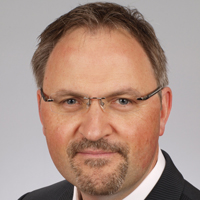 Dr. Schermuly is an expert in the field of experimental pathophysiology and pulmonary hypertension. He holds a professorship for Pulmonary Pharmacotherapy at the Justus-Liebig-University since 2011. Co-author of more than 300 peer-reviewed publications, Dr. Schermuly currently is Principal Investigator on a number of grants of the German Research Foundation “Deutsche Forschungsgemeinschaft” (DFG). He is member of the German Lung Center (DZL), the Excellence Cluster Cardio-Pulmonary Institute (CPI) and the Universities of Giessen and Marburg Lung Center (UGMLC). Examples of his “from bench to bedside” research include preclinical investigations of inhaled prostanoids, phosphodiesterase inhibitors, stimulators of soluble guanylate cyclase, receptor tyrosine kinases, or transbronchial surfactant application, providing the basis for worldwide approval of inhaled iloprost, oral sildenafil and riociguat for treatment of pulmonary arterial hypertension.
Dr. Schermuly is an expert in the field of experimental pathophysiology and pulmonary hypertension. He holds a professorship for Pulmonary Pharmacotherapy at the Justus-Liebig-University since 2011. Co-author of more than 300 peer-reviewed publications, Dr. Schermuly currently is Principal Investigator on a number of grants of the German Research Foundation “Deutsche Forschungsgemeinschaft” (DFG). He is member of the German Lung Center (DZL), the Excellence Cluster Cardio-Pulmonary Institute (CPI) and the Universities of Giessen and Marburg Lung Center (UGMLC). Examples of his “from bench to bedside” research include preclinical investigations of inhaled prostanoids, phosphodiesterase inhibitors, stimulators of soluble guanylate cyclase, receptor tyrosine kinases, or transbronchial surfactant application, providing the basis for worldwide approval of inhaled iloprost, oral sildenafil and riociguat for treatment of pulmonary arterial hypertension.
 Dr. Schermuly is an expert in the field of experimental pathophysiology and pulmonary hypertension. He holds a professorship for Pulmonary Pharmacotherapy at the Justus-Liebig-University since 2011. Co-author of more than 300 peer-reviewed publications, Dr. Schermuly currently is Principal Investigator on a number of grants of the German Research Foundation “Deutsche Forschungsgemeinschaft” (DFG). He is member of the German Lung Center (DZL), the Excellence Cluster Cardio-Pulmonary Institute (CPI) and the Universities of Giessen and Marburg Lung Center (UGMLC). Examples of his “from bench to bedside” research include preclinical investigations of inhaled prostanoids, phosphodiesterase inhibitors, stimulators of soluble guanylate cyclase, receptor tyrosine kinases, or transbronchial surfactant application, providing the basis for worldwide approval of inhaled iloprost, oral sildenafil and riociguat for treatment of pulmonary arterial hypertension.
Dr. Schermuly is an expert in the field of experimental pathophysiology and pulmonary hypertension. He holds a professorship for Pulmonary Pharmacotherapy at the Justus-Liebig-University since 2011. Co-author of more than 300 peer-reviewed publications, Dr. Schermuly currently is Principal Investigator on a number of grants of the German Research Foundation “Deutsche Forschungsgemeinschaft” (DFG). He is member of the German Lung Center (DZL), the Excellence Cluster Cardio-Pulmonary Institute (CPI) and the Universities of Giessen and Marburg Lung Center (UGMLC). Examples of his “from bench to bedside” research include preclinical investigations of inhaled prostanoids, phosphodiesterase inhibitors, stimulators of soluble guanylate cyclase, receptor tyrosine kinases, or transbronchial surfactant application, providing the basis for worldwide approval of inhaled iloprost, oral sildenafil and riociguat for treatment of pulmonary arterial hypertension.
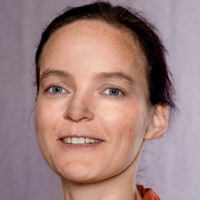 Katrin Schröder received her PhD in 1999 at the University of Rostock and her habilitation in 2011 at the University of Frankfurt. Since 1016 she is associate Professor for physiology at the institute of cardiovascular physiology at the medical faculty of the University of Frankfurt. The focus of her work is the identification of physiological functions of the family of NADPH oxidases. She found that the transient formation of reactive oxygen species by acutely inducible NADPH oxidases to be involved in phosphatase inhibition or modulation of enzyme activity. The main focus of her work is Nox4. She identified this constitutive active NADPH oxidase to be an essential component of cellular differentiation and to play protective roles against vascular inflammation and atherosclerosis.
Katrin Schröder received her PhD in 1999 at the University of Rostock and her habilitation in 2011 at the University of Frankfurt. Since 1016 she is associate Professor for physiology at the institute of cardiovascular physiology at the medical faculty of the University of Frankfurt. The focus of her work is the identification of physiological functions of the family of NADPH oxidases. She found that the transient formation of reactive oxygen species by acutely inducible NADPH oxidases to be involved in phosphatase inhibition or modulation of enzyme activity. The main focus of her work is Nox4. She identified this constitutive active NADPH oxidase to be an essential component of cellular differentiation and to play protective roles against vascular inflammation and atherosclerosis.
 Katrin Schröder received her PhD in 1999 at the University of Rostock and her habilitation in 2011 at the University of Frankfurt. Since 1016 she is associate Professor for physiology at the institute of cardiovascular physiology at the medical faculty of the University of Frankfurt. The focus of her work is the identification of physiological functions of the family of NADPH oxidases. She found that the transient formation of reactive oxygen species by acutely inducible NADPH oxidases to be involved in phosphatase inhibition or modulation of enzyme activity. The main focus of her work is Nox4. She identified this constitutive active NADPH oxidase to be an essential component of cellular differentiation and to play protective roles against vascular inflammation and atherosclerosis.
Katrin Schröder received her PhD in 1999 at the University of Rostock and her habilitation in 2011 at the University of Frankfurt. Since 1016 she is associate Professor for physiology at the institute of cardiovascular physiology at the medical faculty of the University of Frankfurt. The focus of her work is the identification of physiological functions of the family of NADPH oxidases. She found that the transient formation of reactive oxygen species by acutely inducible NADPH oxidases to be involved in phosphatase inhibition or modulation of enzyme activity. The main focus of her work is Nox4. She identified this constitutive active NADPH oxidase to be an essential component of cellular differentiation and to play protective roles against vascular inflammation and atherosclerosis.
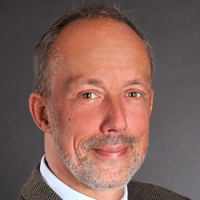 I had established and led an independent research group within the Department of Pathophysiology, University of Essen, Medical School, and since January 2011 I have been appointed as Chairman of Physiology at the Justus-Liebig University Giessen. I have achieved international recognition for my research on myocardial ischemia/reperfusion injury (IRI) and protection from it. My research group uses a translational approach from subcellular particles towards large animal model to define new targets involved in IRI and investigate novel treatment strategies for protecting the heart. One focus of my research is the importance of mitochondrial derived reactive oxygen species for IRI and protection from it.
Recognition: My research is internationally recognised as evidenced by numerous invitations to speak at international scientific meetings. I received the Young Investigator Award from the European Society of Cardiology (ESC), the Fraenkel and Franz-Groedel Award as well as the Basic Science Lecture Award of the German Cardiac Society. I served as Chairman of the Working Group on Cellular Biology of the Heart of the ESC and I am currently member of the European Council of the Society of Heart Research (ISHR). I have been appointed Fellow of the ESC and I have been invited to join the AHA and ISHR as fellow as well.
My research has advanced the field of IRI and protection from it by being the first to: (1) demonstrate an inotropic reserve in chronically ischemic myocardium, a phenomenon used now routinely in daily clinical practice for identification of chronically ischemic myocardium; (2) highlight the cross talk between protein kinases involved in cardioprotection, and (3) demonstrate the mitochondrial location of a highly expressed cellular protein (named connexin 43) being essential for cardioprotection. The latter is of utmost importance since a number of human diseases (including genetic variations) are associated with reduced connexin 43 expression.
Publications and Peer-review: Since 2001 I have published more than 350 peer-reviewed articles and written 10 book chapters. My H-index is 82 (Google Scholar; 69 Scopus) with the total number of citations being 23500. I serve on the Editorial Board of several cardiovascular journals. Apart from regularly reviewing articles for them, I review grant proposals for the German Research Foundation, the British Heart Foundation, ANR and other funding organizations.
Collaborations: I have successfully collaborated with other research teams locally, nationally and internationally as indicated by numerous publications.
Research Group and Funding: My institute has 13 research position and 15 technicians; my own research group currently comprises 6 postdoc positions and 5 technicians and a number of MD and PhD students. I received continuous grant support from the German Research Foundation as PI and Co-PI and from several pharmaceutical companies to study new compounds targeting IRI..
Knowledge Transfer/Exchange: Evidence for this includes: several research collaborations with Industry and other Academic Institutions, consultancies with industry, patient and public engagement in my clinical research and participating in International Working Groups for providing issuing Research Recommendations.
I had established and led an independent research group within the Department of Pathophysiology, University of Essen, Medical School, and since January 2011 I have been appointed as Chairman of Physiology at the Justus-Liebig University Giessen. I have achieved international recognition for my research on myocardial ischemia/reperfusion injury (IRI) and protection from it. My research group uses a translational approach from subcellular particles towards large animal model to define new targets involved in IRI and investigate novel treatment strategies for protecting the heart. One focus of my research is the importance of mitochondrial derived reactive oxygen species for IRI and protection from it.
Recognition: My research is internationally recognised as evidenced by numerous invitations to speak at international scientific meetings. I received the Young Investigator Award from the European Society of Cardiology (ESC), the Fraenkel and Franz-Groedel Award as well as the Basic Science Lecture Award of the German Cardiac Society. I served as Chairman of the Working Group on Cellular Biology of the Heart of the ESC and I am currently member of the European Council of the Society of Heart Research (ISHR). I have been appointed Fellow of the ESC and I have been invited to join the AHA and ISHR as fellow as well.
My research has advanced the field of IRI and protection from it by being the first to: (1) demonstrate an inotropic reserve in chronically ischemic myocardium, a phenomenon used now routinely in daily clinical practice for identification of chronically ischemic myocardium; (2) highlight the cross talk between protein kinases involved in cardioprotection, and (3) demonstrate the mitochondrial location of a highly expressed cellular protein (named connexin 43) being essential for cardioprotection. The latter is of utmost importance since a number of human diseases (including genetic variations) are associated with reduced connexin 43 expression.
Publications and Peer-review: Since 2001 I have published more than 350 peer-reviewed articles and written 10 book chapters. My H-index is 82 (Google Scholar; 69 Scopus) with the total number of citations being 23500. I serve on the Editorial Board of several cardiovascular journals. Apart from regularly reviewing articles for them, I review grant proposals for the German Research Foundation, the British Heart Foundation, ANR and other funding organizations.
Collaborations: I have successfully collaborated with other research teams locally, nationally and internationally as indicated by numerous publications.
Research Group and Funding: My institute has 13 research position and 15 technicians; my own research group currently comprises 6 postdoc positions and 5 technicians and a number of MD and PhD students. I received continuous grant support from the German Research Foundation as PI and Co-PI and from several pharmaceutical companies to study new compounds targeting IRI..
Knowledge Transfer/Exchange: Evidence for this includes: several research collaborations with Industry and other Academic Institutions, consultancies with industry, patient and public engagement in my clinical research and participating in International Working Groups for providing issuing Research Recommendations.
 I had established and led an independent research group within the Department of Pathophysiology, University of Essen, Medical School, and since January 2011 I have been appointed as Chairman of Physiology at the Justus-Liebig University Giessen. I have achieved international recognition for my research on myocardial ischemia/reperfusion injury (IRI) and protection from it. My research group uses a translational approach from subcellular particles towards large animal model to define new targets involved in IRI and investigate novel treatment strategies for protecting the heart. One focus of my research is the importance of mitochondrial derived reactive oxygen species for IRI and protection from it.
Recognition: My research is internationally recognised as evidenced by numerous invitations to speak at international scientific meetings. I received the Young Investigator Award from the European Society of Cardiology (ESC), the Fraenkel and Franz-Groedel Award as well as the Basic Science Lecture Award of the German Cardiac Society. I served as Chairman of the Working Group on Cellular Biology of the Heart of the ESC and I am currently member of the European Council of the Society of Heart Research (ISHR). I have been appointed Fellow of the ESC and I have been invited to join the AHA and ISHR as fellow as well.
My research has advanced the field of IRI and protection from it by being the first to: (1) demonstrate an inotropic reserve in chronically ischemic myocardium, a phenomenon used now routinely in daily clinical practice for identification of chronically ischemic myocardium; (2) highlight the cross talk between protein kinases involved in cardioprotection, and (3) demonstrate the mitochondrial location of a highly expressed cellular protein (named connexin 43) being essential for cardioprotection. The latter is of utmost importance since a number of human diseases (including genetic variations) are associated with reduced connexin 43 expression.
Publications and Peer-review: Since 2001 I have published more than 350 peer-reviewed articles and written 10 book chapters. My H-index is 82 (Google Scholar; 69 Scopus) with the total number of citations being 23500. I serve on the Editorial Board of several cardiovascular journals. Apart from regularly reviewing articles for them, I review grant proposals for the German Research Foundation, the British Heart Foundation, ANR and other funding organizations.
Collaborations: I have successfully collaborated with other research teams locally, nationally and internationally as indicated by numerous publications.
Research Group and Funding: My institute has 13 research position and 15 technicians; my own research group currently comprises 6 postdoc positions and 5 technicians and a number of MD and PhD students. I received continuous grant support from the German Research Foundation as PI and Co-PI and from several pharmaceutical companies to study new compounds targeting IRI..
Knowledge Transfer/Exchange: Evidence for this includes: several research collaborations with Industry and other Academic Institutions, consultancies with industry, patient and public engagement in my clinical research and participating in International Working Groups for providing issuing Research Recommendations.
I had established and led an independent research group within the Department of Pathophysiology, University of Essen, Medical School, and since January 2011 I have been appointed as Chairman of Physiology at the Justus-Liebig University Giessen. I have achieved international recognition for my research on myocardial ischemia/reperfusion injury (IRI) and protection from it. My research group uses a translational approach from subcellular particles towards large animal model to define new targets involved in IRI and investigate novel treatment strategies for protecting the heart. One focus of my research is the importance of mitochondrial derived reactive oxygen species for IRI and protection from it.
Recognition: My research is internationally recognised as evidenced by numerous invitations to speak at international scientific meetings. I received the Young Investigator Award from the European Society of Cardiology (ESC), the Fraenkel and Franz-Groedel Award as well as the Basic Science Lecture Award of the German Cardiac Society. I served as Chairman of the Working Group on Cellular Biology of the Heart of the ESC and I am currently member of the European Council of the Society of Heart Research (ISHR). I have been appointed Fellow of the ESC and I have been invited to join the AHA and ISHR as fellow as well.
My research has advanced the field of IRI and protection from it by being the first to: (1) demonstrate an inotropic reserve in chronically ischemic myocardium, a phenomenon used now routinely in daily clinical practice for identification of chronically ischemic myocardium; (2) highlight the cross talk between protein kinases involved in cardioprotection, and (3) demonstrate the mitochondrial location of a highly expressed cellular protein (named connexin 43) being essential for cardioprotection. The latter is of utmost importance since a number of human diseases (including genetic variations) are associated with reduced connexin 43 expression.
Publications and Peer-review: Since 2001 I have published more than 350 peer-reviewed articles and written 10 book chapters. My H-index is 82 (Google Scholar; 69 Scopus) with the total number of citations being 23500. I serve on the Editorial Board of several cardiovascular journals. Apart from regularly reviewing articles for them, I review grant proposals for the German Research Foundation, the British Heart Foundation, ANR and other funding organizations.
Collaborations: I have successfully collaborated with other research teams locally, nationally and internationally as indicated by numerous publications.
Research Group and Funding: My institute has 13 research position and 15 technicians; my own research group currently comprises 6 postdoc positions and 5 technicians and a number of MD and PhD students. I received continuous grant support from the German Research Foundation as PI and Co-PI and from several pharmaceutical companies to study new compounds targeting IRI..
Knowledge Transfer/Exchange: Evidence for this includes: several research collaborations with Industry and other Academic Institutions, consultancies with industry, patient and public engagement in my clinical research and participating in International Working Groups for providing issuing Research Recommendations.
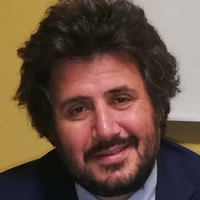 I am currently Associate Professor at the Department of Medical and Surgical Sciences and Biotechnologies at Sapienza University of Rome. I got my MD and PhD at Sapienza University. Then, I moved to the United States, where I was trained in the laboratory of Junichi Sadoshima and then became faculty member at Rutgers New Jersey Medical School. During my training, I have studied the molecular mechanisms regulating cardiomyocyte survival and growth during cardiac stress. In particular, I focused my interests on the role of autophagy and mTOR pathway during cardiac ischemic injury and remodeling. Currently, my lab is focused on the elucidation of the role of autophagy, mTOR signaling and Hippo signaling in the development of vascular diseases. We recently discovered that a pharmacological reactivation of autophagy reduces the development of hypertension-induced stroke. In addition, my lab is interested in the study of the cardiovascular effects of novel natural activators of autophagy, with a particular focus on trehalose.
I am currently Associate Professor at the Department of Medical and Surgical Sciences and Biotechnologies at Sapienza University of Rome. I got my MD and PhD at Sapienza University. Then, I moved to the United States, where I was trained in the laboratory of Junichi Sadoshima and then became faculty member at Rutgers New Jersey Medical School. During my training, I have studied the molecular mechanisms regulating cardiomyocyte survival and growth during cardiac stress. In particular, I focused my interests on the role of autophagy and mTOR pathway during cardiac ischemic injury and remodeling. Currently, my lab is focused on the elucidation of the role of autophagy, mTOR signaling and Hippo signaling in the development of vascular diseases. We recently discovered that a pharmacological reactivation of autophagy reduces the development of hypertension-induced stroke. In addition, my lab is interested in the study of the cardiovascular effects of novel natural activators of autophagy, with a particular focus on trehalose.
 I am currently Associate Professor at the Department of Medical and Surgical Sciences and Biotechnologies at Sapienza University of Rome. I got my MD and PhD at Sapienza University. Then, I moved to the United States, where I was trained in the laboratory of Junichi Sadoshima and then became faculty member at Rutgers New Jersey Medical School. During my training, I have studied the molecular mechanisms regulating cardiomyocyte survival and growth during cardiac stress. In particular, I focused my interests on the role of autophagy and mTOR pathway during cardiac ischemic injury and remodeling. Currently, my lab is focused on the elucidation of the role of autophagy, mTOR signaling and Hippo signaling in the development of vascular diseases. We recently discovered that a pharmacological reactivation of autophagy reduces the development of hypertension-induced stroke. In addition, my lab is interested in the study of the cardiovascular effects of novel natural activators of autophagy, with a particular focus on trehalose.
I am currently Associate Professor at the Department of Medical and Surgical Sciences and Biotechnologies at Sapienza University of Rome. I got my MD and PhD at Sapienza University. Then, I moved to the United States, where I was trained in the laboratory of Junichi Sadoshima and then became faculty member at Rutgers New Jersey Medical School. During my training, I have studied the molecular mechanisms regulating cardiomyocyte survival and growth during cardiac stress. In particular, I focused my interests on the role of autophagy and mTOR pathway during cardiac ischemic injury and remodeling. Currently, my lab is focused on the elucidation of the role of autophagy, mTOR signaling and Hippo signaling in the development of vascular diseases. We recently discovered that a pharmacological reactivation of autophagy reduces the development of hypertension-induced stroke. In addition, my lab is interested in the study of the cardiovascular effects of novel natural activators of autophagy, with a particular focus on trehalose.
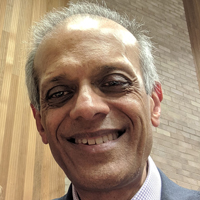 Ajay Shah is the British Heart Foundation (BHF) Professor of Cardiology and Head of the School of Cardiovascular Medicine and Sciences at King's College London; James Black Professor of Medicine; and Director of the King's BHF Centre of Research Excellence.
Ajay Shah is the British Heart Foundation (BHF) Professor of Cardiology and Head of the School of Cardiovascular Medicine and Sciences at King's College London; James Black Professor of Medicine; and Director of the King's BHF Centre of Research Excellence.
He trained in medicine and cardiology at the University of Wales, undertook doctoral research training in Wales and Belgium, and was a postdoctoral scientist at the National Institutes of Health in the USA in the early 1990s. Prior to his appointment to the Chair of Cardiology at KCL in 1998, he held an Medical Research Council Senior Clinical Fellowship in Cardiff.
The main research interests of the Shah lab are in the pathophysiology of heart failure, both in experimental models and in patients. His group has undertaken seminal studies on the role of NADPH oxidase (NOX) proteins and redox signalling pathways in the cardiovascular system. He has a long-standing interest in the actions of NO in the heart and has recently developed a programme of human studies on the roles of neuronal NO synthase (nNOS). Other areas of work include heart failure with preserved ejection function (HFpEF) and heterogeneity in heart failure. He has published ~ 350 peer-reviewed papers and has an h-index of 98.
Ajay is a Fellow of the UK Academy of Medical Sciences, the International Society for Heart Research, the European Society of Cardiology, and the American Heart Association. He is Associate Editor of the American Journal of Physiology (Heart & Circulation), Consulting Editor for Cardiovascular Research, and on the Editorial Boards of Circulation and the European Heart Journal.
 Ajay Shah is the British Heart Foundation (BHF) Professor of Cardiology and Head of the School of Cardiovascular Medicine and Sciences at King's College London; James Black Professor of Medicine; and Director of the King's BHF Centre of Research Excellence.
Ajay Shah is the British Heart Foundation (BHF) Professor of Cardiology and Head of the School of Cardiovascular Medicine and Sciences at King's College London; James Black Professor of Medicine; and Director of the King's BHF Centre of Research Excellence.
He trained in medicine and cardiology at the University of Wales, undertook doctoral research training in Wales and Belgium, and was a postdoctoral scientist at the National Institutes of Health in the USA in the early 1990s. Prior to his appointment to the Chair of Cardiology at KCL in 1998, he held an Medical Research Council Senior Clinical Fellowship in Cardiff.
The main research interests of the Shah lab are in the pathophysiology of heart failure, both in experimental models and in patients. His group has undertaken seminal studies on the role of NADPH oxidase (NOX) proteins and redox signalling pathways in the cardiovascular system. He has a long-standing interest in the actions of NO in the heart and has recently developed a programme of human studies on the roles of neuronal NO synthase (nNOS). Other areas of work include heart failure with preserved ejection function (HFpEF) and heterogeneity in heart failure. He has published ~ 350 peer-reviewed papers and has an h-index of 98.
Ajay is a Fellow of the UK Academy of Medical Sciences, the International Society for Heart Research, the European Society of Cardiology, and the American Heart Association. He is Associate Editor of the American Journal of Physiology (Heart & Circulation), Consulting Editor for Cardiovascular Research, and on the Editorial Boards of Circulation and the European Heart Journal.
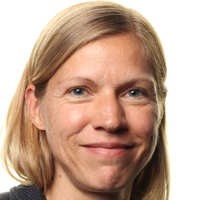 Sabine Steffens studied Biology at the Justus-Liebig-University in Giessen and received her PhD title from the Heinrich-Heine-University in Düsseldorf (Germany). During her PhD studies and a short postdoctoral training in Philadelphia (USA), she worked on retro- and lentiviral vectors for gene therapy of cancer. She discovered her interest for cardiovascular research during her following postdoc and junior group leader position in Geneva, Switzerland. She received the prestigious award , such as the Cardiovascular Biology Award from the Swiss Society of Cardiology in 2005 and the ESC Outstanding Achievement Award in 2016. In 2012, she obtained the venia legendi for her habilitation thesis, at the Medical Faculty of Geneva. Since 2013, she is Associate Professor for Clinical Pathobiochemistry at the Ludwig-Maximilians-University in Munich. Her laboratory investigates innate immune responses and endocannabinoid signaling in cardiac repair and vascular disease.
Sabine Steffens studied Biology at the Justus-Liebig-University in Giessen and received her PhD title from the Heinrich-Heine-University in Düsseldorf (Germany). During her PhD studies and a short postdoctoral training in Philadelphia (USA), she worked on retro- and lentiviral vectors for gene therapy of cancer. She discovered her interest for cardiovascular research during her following postdoc and junior group leader position in Geneva, Switzerland. She received the prestigious award , such as the Cardiovascular Biology Award from the Swiss Society of Cardiology in 2005 and the ESC Outstanding Achievement Award in 2016. In 2012, she obtained the venia legendi for her habilitation thesis, at the Medical Faculty of Geneva. Since 2013, she is Associate Professor for Clinical Pathobiochemistry at the Ludwig-Maximilians-University in Munich. Her laboratory investigates innate immune responses and endocannabinoid signaling in cardiac repair and vascular disease.
 Sabine Steffens studied Biology at the Justus-Liebig-University in Giessen and received her PhD title from the Heinrich-Heine-University in Düsseldorf (Germany). During her PhD studies and a short postdoctoral training in Philadelphia (USA), she worked on retro- and lentiviral vectors for gene therapy of cancer. She discovered her interest for cardiovascular research during her following postdoc and junior group leader position in Geneva, Switzerland. She received the prestigious award , such as the Cardiovascular Biology Award from the Swiss Society of Cardiology in 2005 and the ESC Outstanding Achievement Award in 2016. In 2012, she obtained the venia legendi for her habilitation thesis, at the Medical Faculty of Geneva. Since 2013, she is Associate Professor for Clinical Pathobiochemistry at the Ludwig-Maximilians-University in Munich. Her laboratory investigates innate immune responses and endocannabinoid signaling in cardiac repair and vascular disease.
Sabine Steffens studied Biology at the Justus-Liebig-University in Giessen and received her PhD title from the Heinrich-Heine-University in Düsseldorf (Germany). During her PhD studies and a short postdoctoral training in Philadelphia (USA), she worked on retro- and lentiviral vectors for gene therapy of cancer. She discovered her interest for cardiovascular research during her following postdoc and junior group leader position in Geneva, Switzerland. She received the prestigious award , such as the Cardiovascular Biology Award from the Swiss Society of Cardiology in 2005 and the ESC Outstanding Achievement Award in 2016. In 2012, she obtained the venia legendi for her habilitation thesis, at the Medical Faculty of Geneva. Since 2013, she is Associate Professor for Clinical Pathobiochemistry at the Ludwig-Maximilians-University in Munich. Her laboratory investigates innate immune responses and endocannabinoid signaling in cardiac repair and vascular disease.
 Monika Stoll graduated from University of Giessen, Germany, where
she received her Diploma in Biology in 1991, before finishing a PhD in
Pharmacology in 1995 at University of Heidelberg. She then assumed
a postdoctoral fellowship at the Medical College of Wisconsin, USA,
where she discovered her interest in complex genetics and genomics.
In 2003, she became Professor and Director of the Division Genetic
Epidemiology at the Leibniz-Institute for Arteriosclerosis Research,
and starting 2014, at the Institute of Human Genetics of the University
of Münster, Germany.
Monika Stoll graduated from University of Giessen, Germany, where
she received her Diploma in Biology in 1991, before finishing a PhD in
Pharmacology in 1995 at University of Heidelberg. She then assumed
a postdoctoral fellowship at the Medical College of Wisconsin, USA,
where she discovered her interest in complex genetics and genomics.
In 2003, she became Professor and Director of the Division Genetic
Epidemiology at the Leibniz-Institute for Arteriosclerosis Research,
and starting 2014, at the Institute of Human Genetics of the University
of Münster, Germany.
In October 2013 she assumed a part-time position as Visiting Professor in Cardiovascular Genetics at
Maastricht University. In 2015, she was appointed as Extraordinary Professor of Genetic Epidemiology
and Statistical Genetics. In October 2016, she was appointed as Vice-Rector for Research of the
University of Münster.
Prof. Stoll is engaged in research in complex genetics and genetic epidemiology particularly relating to
cardiovascular diseases and inflammation. Current research projects address the genetic and genomic
basis of arrhythmogenic diseases and heart failure. She is involved in a number of large research
research consortia, and is responsible for all aspects of next generation sequencing approaches and
the analysis thereof in the context of the pathogenesis of cardiovascular diseases. In addition, her
group is running a core facility for genetics and genomics which supports high-density arrays for SNP,
CNV, methylome and transcriptome analysis, next generation sequencing and a (bio)informatics
infrastructure for management of large data sets.
 Monika Stoll graduated from University of Giessen, Germany, where
she received her Diploma in Biology in 1991, before finishing a PhD in
Pharmacology in 1995 at University of Heidelberg. She then assumed
a postdoctoral fellowship at the Medical College of Wisconsin, USA,
where she discovered her interest in complex genetics and genomics.
In 2003, she became Professor and Director of the Division Genetic
Epidemiology at the Leibniz-Institute for Arteriosclerosis Research,
and starting 2014, at the Institute of Human Genetics of the University
of Münster, Germany.
Monika Stoll graduated from University of Giessen, Germany, where
she received her Diploma in Biology in 1991, before finishing a PhD in
Pharmacology in 1995 at University of Heidelberg. She then assumed
a postdoctoral fellowship at the Medical College of Wisconsin, USA,
where she discovered her interest in complex genetics and genomics.
In 2003, she became Professor and Director of the Division Genetic
Epidemiology at the Leibniz-Institute for Arteriosclerosis Research,
and starting 2014, at the Institute of Human Genetics of the University
of Münster, Germany.
In October 2013 she assumed a part-time position as Visiting Professor in Cardiovascular Genetics at
Maastricht University. In 2015, she was appointed as Extraordinary Professor of Genetic Epidemiology
and Statistical Genetics. In October 2016, she was appointed as Vice-Rector for Research of the
University of Münster.
Prof. Stoll is engaged in research in complex genetics and genetic epidemiology particularly relating to
cardiovascular diseases and inflammation. Current research projects address the genetic and genomic
basis of arrhythmogenic diseases and heart failure. She is involved in a number of large research
research consortia, and is responsible for all aspects of next generation sequencing approaches and
the analysis thereof in the context of the pathogenesis of cardiovascular diseases. In addition, her
group is running a core facility for genetics and genomics which supports high-density arrays for SNP,
CNV, methylome and transcriptome analysis, next generation sequencing and a (bio)informatics
infrastructure for management of large data sets.
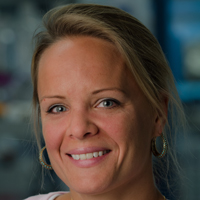 Eva van Rooij attended University Hospital Maastricht in the Netherlands where she received a Ph.D. at the department of Cardiology. She then went on to complete postdoctoral training in Molecular Biology at UT Southwestern Medical Center in the lab of Dr. Eric Olson where she served as lead scientist in the studies that linked microRNAs to cardiovascular disease. In her current work she combines high-end sequencing technologies, stem cells, mouse genetics, animal models of heart disease, and molecular biology to identify the important pathways for cardiac remodeling and repair and explore ways to enhance cardiac efficacy of new drugs.
Eva van Rooij attended University Hospital Maastricht in the Netherlands where she received a Ph.D. at the department of Cardiology. She then went on to complete postdoctoral training in Molecular Biology at UT Southwestern Medical Center in the lab of Dr. Eric Olson where she served as lead scientist in the studies that linked microRNAs to cardiovascular disease. In her current work she combines high-end sequencing technologies, stem cells, mouse genetics, animal models of heart disease, and molecular biology to identify the important pathways for cardiac remodeling and repair and explore ways to enhance cardiac efficacy of new drugs.
 Eva van Rooij attended University Hospital Maastricht in the Netherlands where she received a Ph.D. at the department of Cardiology. She then went on to complete postdoctoral training in Molecular Biology at UT Southwestern Medical Center in the lab of Dr. Eric Olson where she served as lead scientist in the studies that linked microRNAs to cardiovascular disease. In her current work she combines high-end sequencing technologies, stem cells, mouse genetics, animal models of heart disease, and molecular biology to identify the important pathways for cardiac remodeling and repair and explore ways to enhance cardiac efficacy of new drugs.
Eva van Rooij attended University Hospital Maastricht in the Netherlands where she received a Ph.D. at the department of Cardiology. She then went on to complete postdoctoral training in Molecular Biology at UT Southwestern Medical Center in the lab of Dr. Eric Olson where she served as lead scientist in the studies that linked microRNAs to cardiovascular disease. In her current work she combines high-end sequencing technologies, stem cells, mouse genetics, animal models of heart disease, and molecular biology to identify the important pathways for cardiac remodeling and repair and explore ways to enhance cardiac efficacy of new drugs.
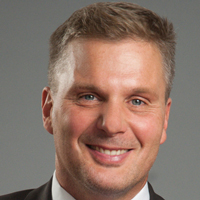 Mirko Völkers received his MD at the University of Heidelberg (Germany) in 2006. Since 2006 he worked at the Department of Cardiology at the University of Heidelberg, Germany, and from 2009-2013 as a post-doctoral research assistant in the lab of Mark Sussman at the Department of Biology at San Diego State University in San Diego, CA, US. Since 2015 he is a research group leader at the University of Heidelberg, Department of Cardiology with a specific focus on mechanisms that control cardiac gene expression during heart failure. Differences in the development of HF might depend on variable environmental influences, but stereotypical patterns of aberrant myocardial gene control are a central and consistent feature in both the diseased human heart as well as in many animal models. Gene expression is regulated both by transcriptional and post-transcriptional mechanisms.
Mirko Völkers received his MD at the University of Heidelberg (Germany) in 2006. Since 2006 he worked at the Department of Cardiology at the University of Heidelberg, Germany, and from 2009-2013 as a post-doctoral research assistant in the lab of Mark Sussman at the Department of Biology at San Diego State University in San Diego, CA, US. Since 2015 he is a research group leader at the University of Heidelberg, Department of Cardiology with a specific focus on mechanisms that control cardiac gene expression during heart failure. Differences in the development of HF might depend on variable environmental influences, but stereotypical patterns of aberrant myocardial gene control are a central and consistent feature in both the diseased human heart as well as in many animal models. Gene expression is regulated both by transcriptional and post-transcriptional mechanisms.
The focus of his lab research is to study mRNA metabolism and translational control in cardiac myocytes. Current research aims to define how regulation of mRNA-translation and protein synthesis influences cardiac growth and survival, and whether specific networks of translationally regulated mRNAs regulate physiological, pathological, or age-associated myocardial growth.
The research is motivated by the idea to work as a physician-scientist in the field of experimental molecular cardiology with the overall goal to establish new therapeutic concepts for the prevention and treatment of heart failure.
 Mirko Völkers received his MD at the University of Heidelberg (Germany) in 2006. Since 2006 he worked at the Department of Cardiology at the University of Heidelberg, Germany, and from 2009-2013 as a post-doctoral research assistant in the lab of Mark Sussman at the Department of Biology at San Diego State University in San Diego, CA, US. Since 2015 he is a research group leader at the University of Heidelberg, Department of Cardiology with a specific focus on mechanisms that control cardiac gene expression during heart failure. Differences in the development of HF might depend on variable environmental influences, but stereotypical patterns of aberrant myocardial gene control are a central and consistent feature in both the diseased human heart as well as in many animal models. Gene expression is regulated both by transcriptional and post-transcriptional mechanisms.
Mirko Völkers received his MD at the University of Heidelberg (Germany) in 2006. Since 2006 he worked at the Department of Cardiology at the University of Heidelberg, Germany, and from 2009-2013 as a post-doctoral research assistant in the lab of Mark Sussman at the Department of Biology at San Diego State University in San Diego, CA, US. Since 2015 he is a research group leader at the University of Heidelberg, Department of Cardiology with a specific focus on mechanisms that control cardiac gene expression during heart failure. Differences in the development of HF might depend on variable environmental influences, but stereotypical patterns of aberrant myocardial gene control are a central and consistent feature in both the diseased human heart as well as in many animal models. Gene expression is regulated both by transcriptional and post-transcriptional mechanisms.
The focus of his lab research is to study mRNA metabolism and translational control in cardiac myocytes. Current research aims to define how regulation of mRNA-translation and protein synthesis influences cardiac growth and survival, and whether specific networks of translationally regulated mRNAs regulate physiological, pathological, or age-associated myocardial growth.
The research is motivated by the idea to work as a physician-scientist in the field of experimental molecular cardiology with the overall goal to establish new therapeutic concepts for the prevention and treatment of heart failure.
 Thomas Vondriska is a Professor in the Departments of Anesthesiology, Physiology and Medicine in the David Geffen School of Medicine at UCLA. Prior to UCLA, he trained at the University of Louisville in myocardial ischemia, molecular signaling, and proteomics. Over the past few years, the Vondriska lab has investigated epigenomic processes underlying normal and diseased function of the adult mammalian heart. Ongoing research examines the molecular basis for locus specific structural remodeling of chromatin architecture in animal models and humans towards the goals of: (1) basic structure/function models of chromatin in multicellular organisms; (2) epigenomic biomarkers of cardiovascular disease; and (3) novel therapeutic agents for heart failure that work by remodeling the epigenome. The Vondriska lab has trained >40 students, fellows and clinician-scientists.
Thomas Vondriska is a Professor in the Departments of Anesthesiology, Physiology and Medicine in the David Geffen School of Medicine at UCLA. Prior to UCLA, he trained at the University of Louisville in myocardial ischemia, molecular signaling, and proteomics. Over the past few years, the Vondriska lab has investigated epigenomic processes underlying normal and diseased function of the adult mammalian heart. Ongoing research examines the molecular basis for locus specific structural remodeling of chromatin architecture in animal models and humans towards the goals of: (1) basic structure/function models of chromatin in multicellular organisms; (2) epigenomic biomarkers of cardiovascular disease; and (3) novel therapeutic agents for heart failure that work by remodeling the epigenome. The Vondriska lab has trained >40 students, fellows and clinician-scientists.
 Thomas Vondriska is a Professor in the Departments of Anesthesiology, Physiology and Medicine in the David Geffen School of Medicine at UCLA. Prior to UCLA, he trained at the University of Louisville in myocardial ischemia, molecular signaling, and proteomics. Over the past few years, the Vondriska lab has investigated epigenomic processes underlying normal and diseased function of the adult mammalian heart. Ongoing research examines the molecular basis for locus specific structural remodeling of chromatin architecture in animal models and humans towards the goals of: (1) basic structure/function models of chromatin in multicellular organisms; (2) epigenomic biomarkers of cardiovascular disease; and (3) novel therapeutic agents for heart failure that work by remodeling the epigenome. The Vondriska lab has trained >40 students, fellows and clinician-scientists.
Thomas Vondriska is a Professor in the Departments of Anesthesiology, Physiology and Medicine in the David Geffen School of Medicine at UCLA. Prior to UCLA, he trained at the University of Louisville in myocardial ischemia, molecular signaling, and proteomics. Over the past few years, the Vondriska lab has investigated epigenomic processes underlying normal and diseased function of the adult mammalian heart. Ongoing research examines the molecular basis for locus specific structural remodeling of chromatin architecture in animal models and humans towards the goals of: (1) basic structure/function models of chromatin in multicellular organisms; (2) epigenomic biomarkers of cardiovascular disease; and (3) novel therapeutic agents for heart failure that work by remodeling the epigenome. The Vondriska lab has trained >40 students, fellows and clinician-scientists.